Advanced Gravis were a peripheral and sound card company that formed in 1982 in British Columbia, Canada. During the late 80s and early 90s boom of the NES console they produced game pads for that and other rival consoles. Around the same time they got a name for themselves in the PC market with their quality joysticks, but the platform by this stage was still lacking a game pad of its own.
They launched their four-button GamePad in 1991.
Gravis were acquired by Kensington Technology Group in 1997, and in 2000 they started a partnership with Immersion Corp., a leader in touch interaction technology, to bring their ARC motor innovation to the computer gaming market. This would give Gravis the ability to communicate via digital signals over the 15-pin analogue game port, allowing an unlimited number of buttons and axis on their peripherals.
If you're looking for information on Gravis' audio hardware, please visit the dedicated Advanced Gravis page.
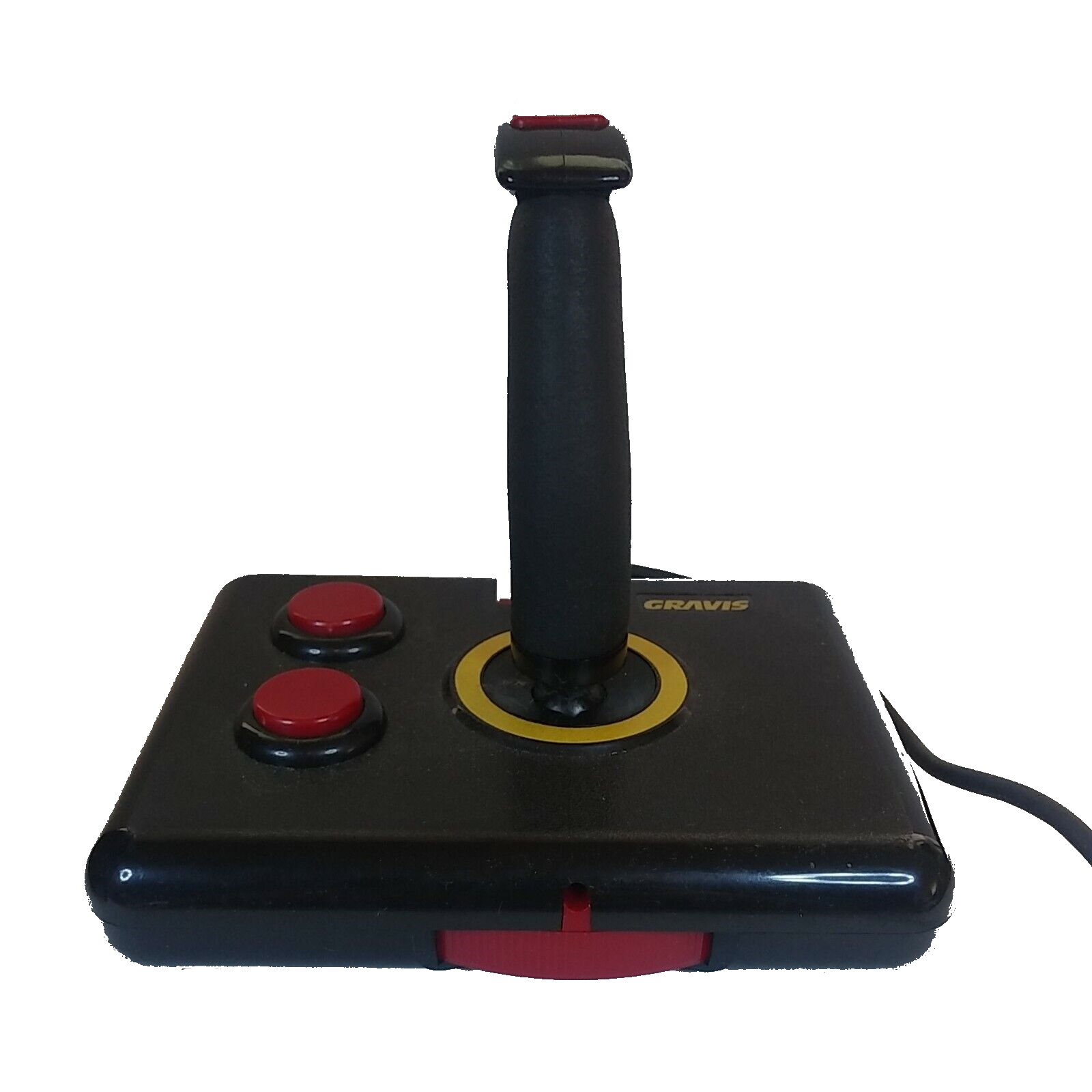 Analog Joystick Analog Joystick
Launched: 198x?
Interface: 15-pin analogue
Number of Axis: 2
Number of Buttons: 3
Price: -
More Images
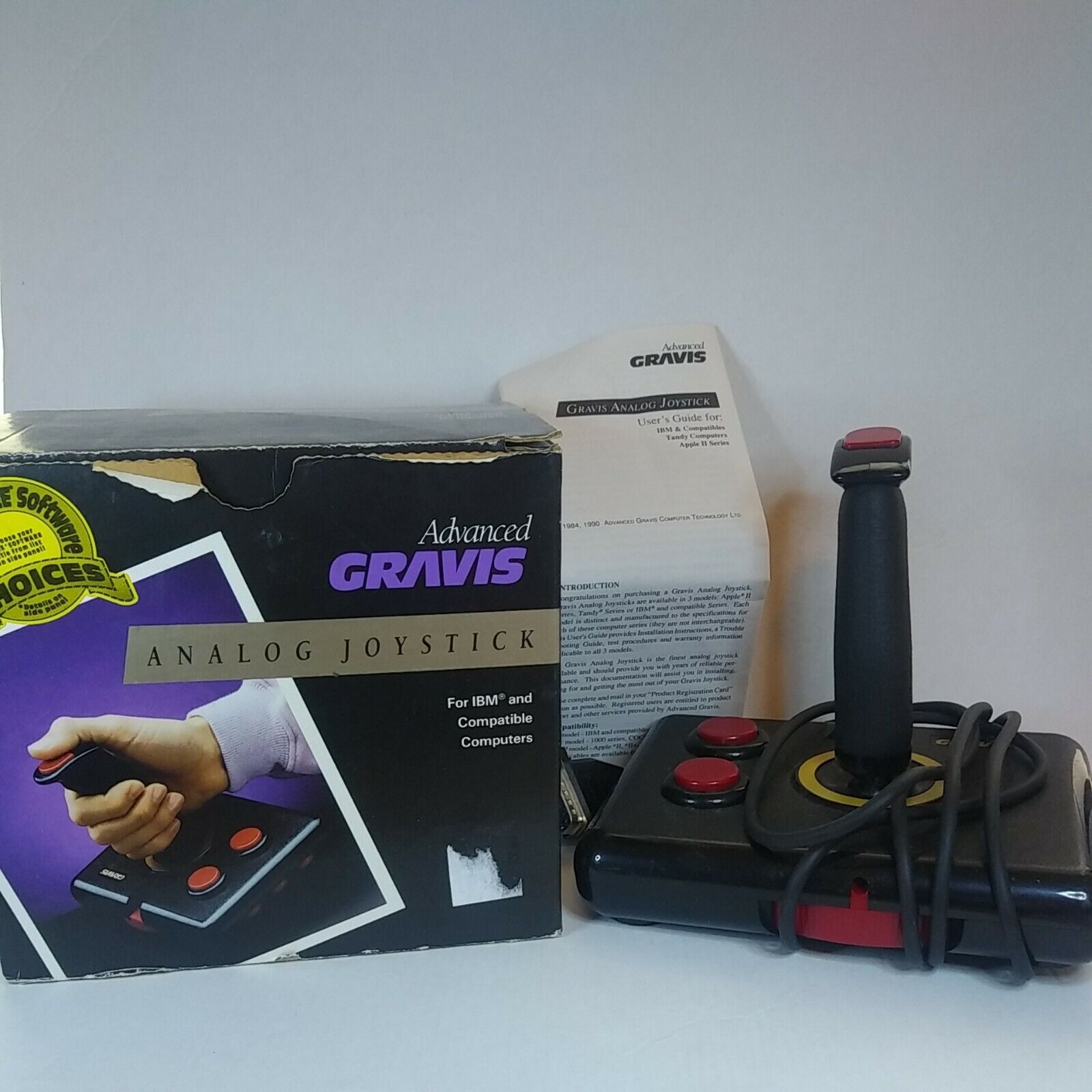 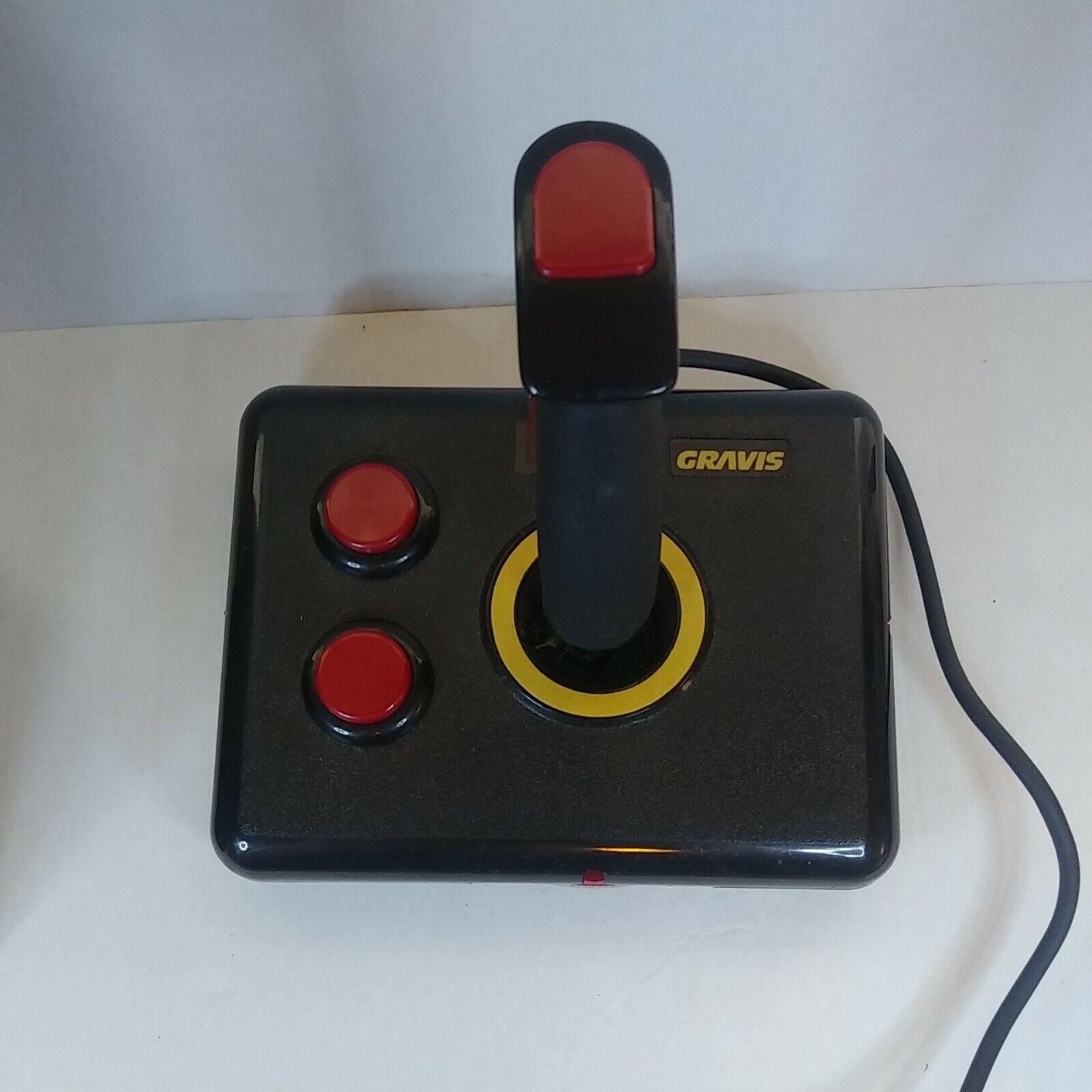 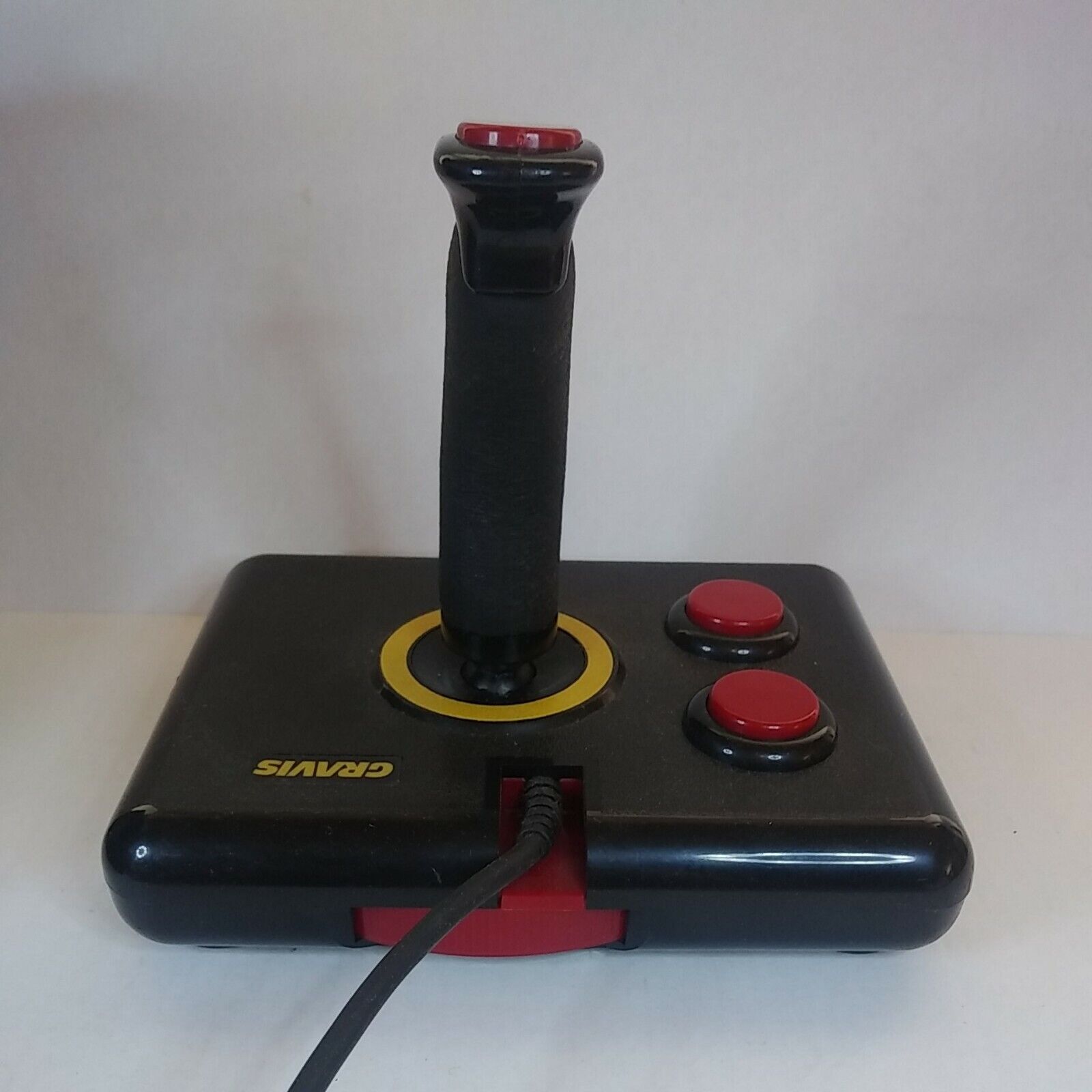
|
 MK VI MK VI
Launched: June 1986
Interface: 15-pin analogue
Number of Axis: 2
Number of Buttons: 3
Price: $49.95 + $5 S&H at launch
The MK VI features:
- Pistol grip handle
- 8 position tension control
- 3 independent fire buttons
- 1 year warranty
"[Comparing the CH Products Mach III with the Kraft Systems Premium and Wico Computer Command]:
My second choice [behind the Mach III] is the Gravis MK VI - the only joystick of the four with a pistol grip lever. The MK VI is also the only one that lets you adjust the lever tension and interchange the functions of the three buttons."
Mitt Jones, PC Magazine, September 1987
More Images
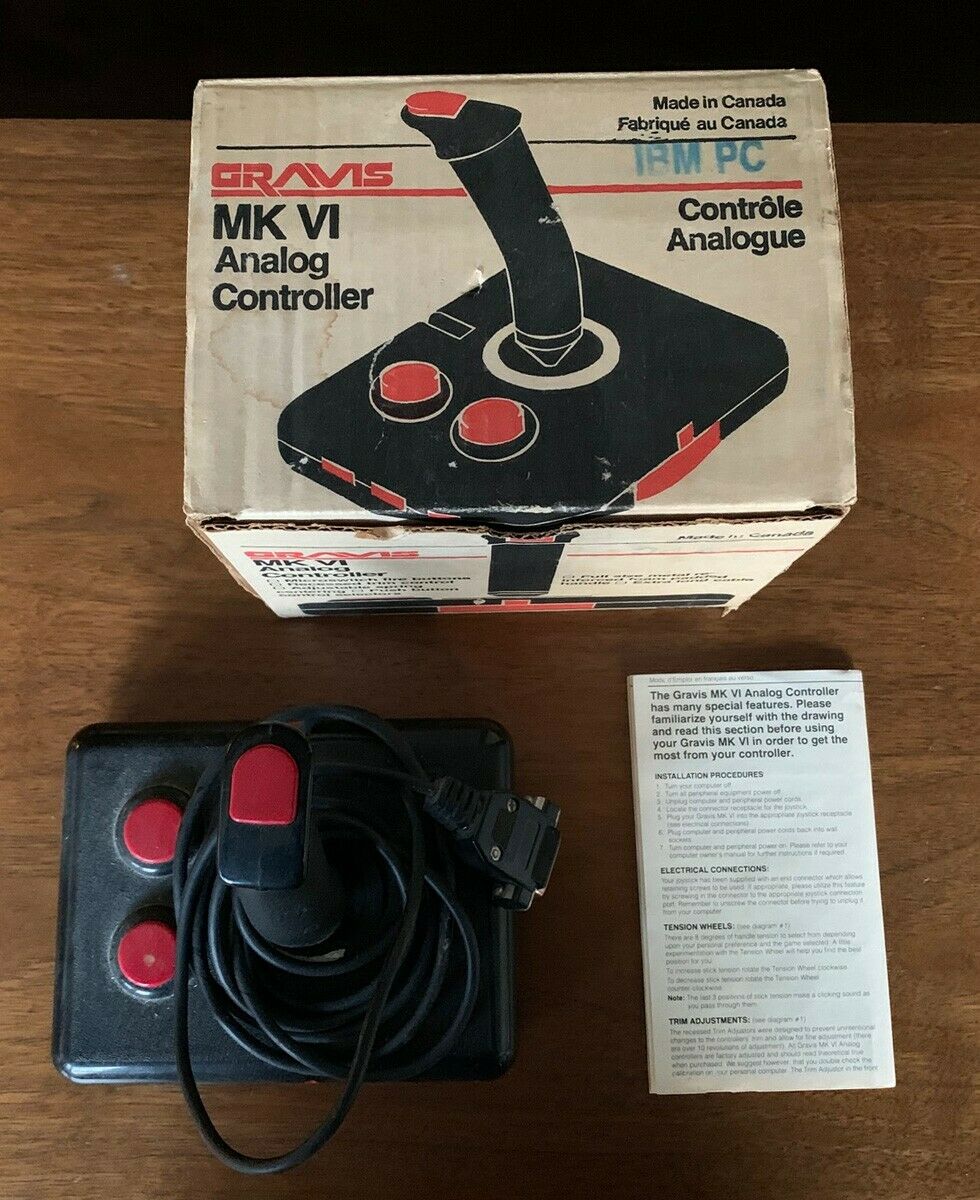 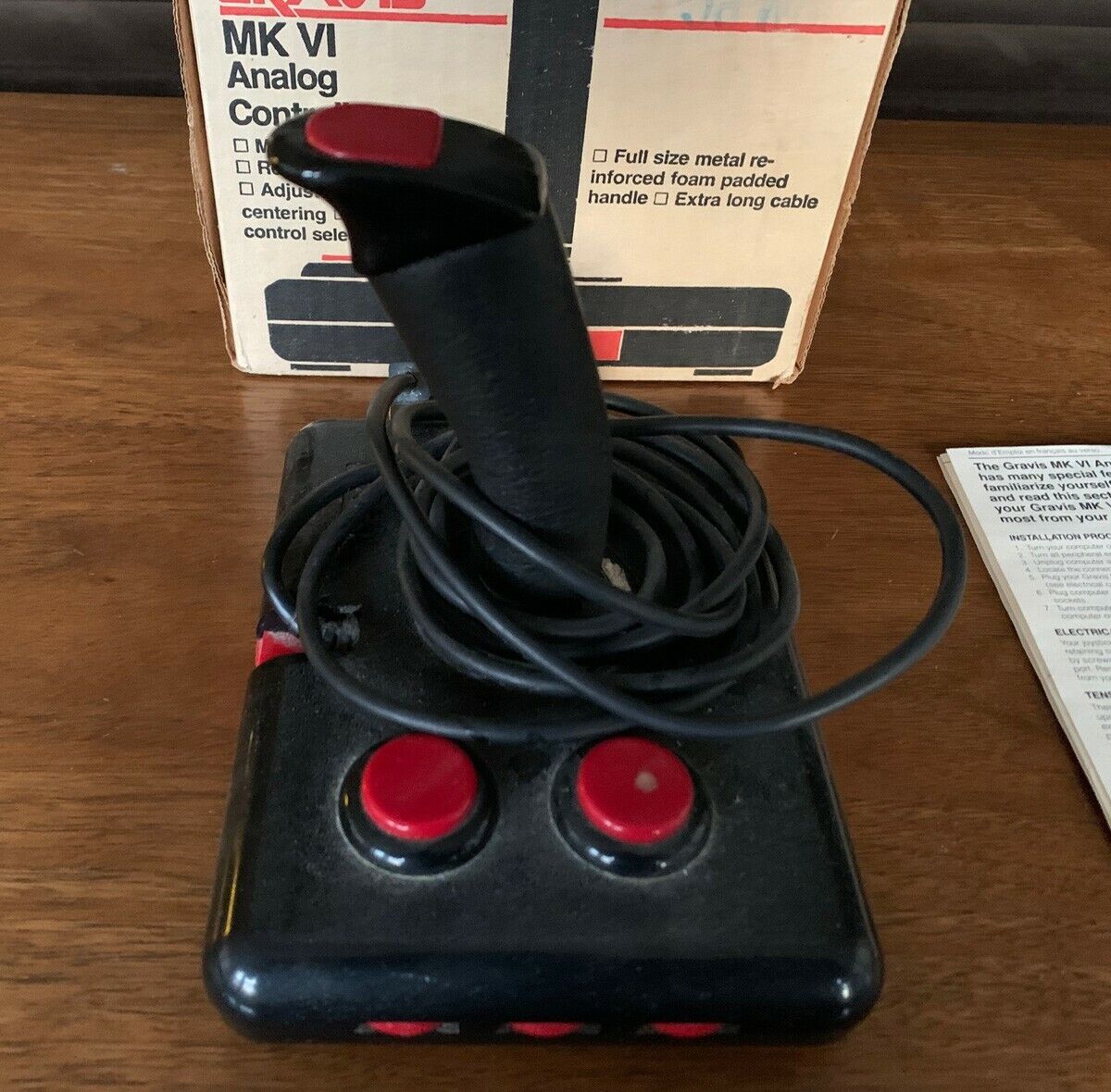 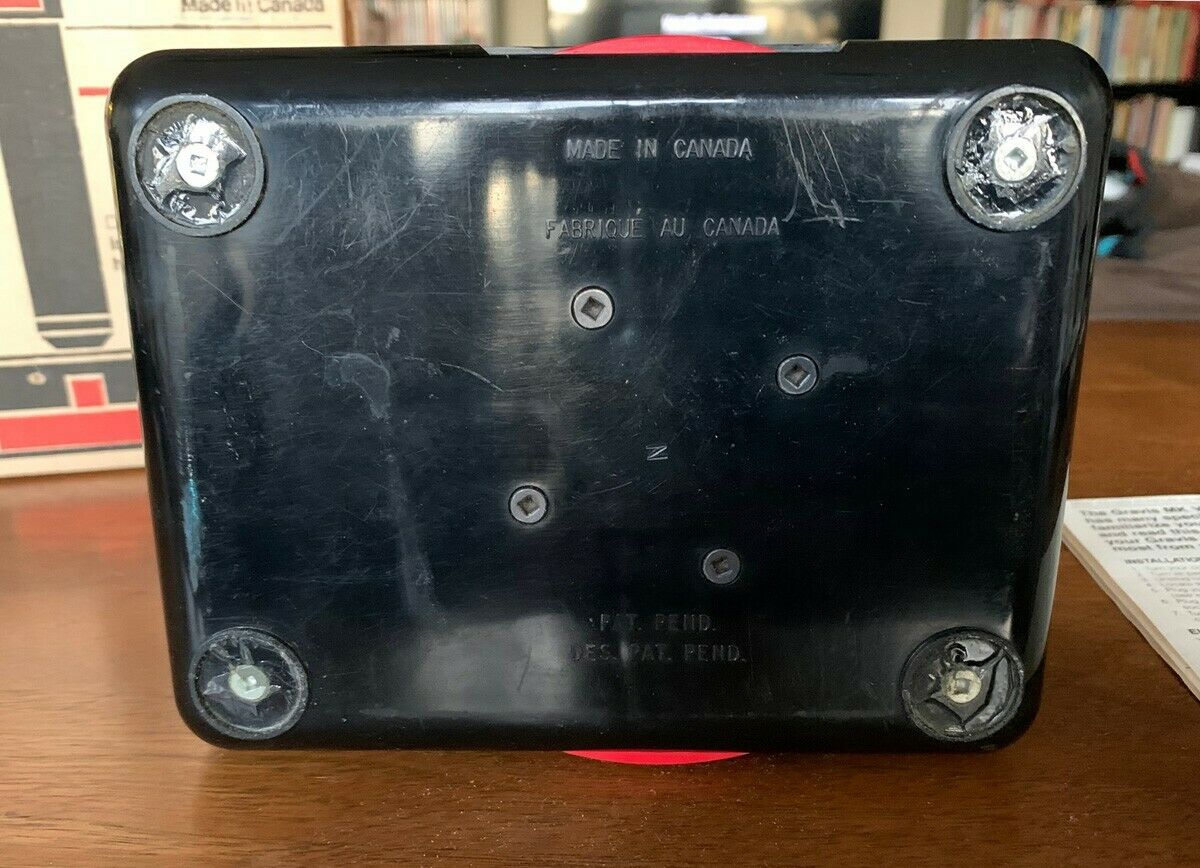  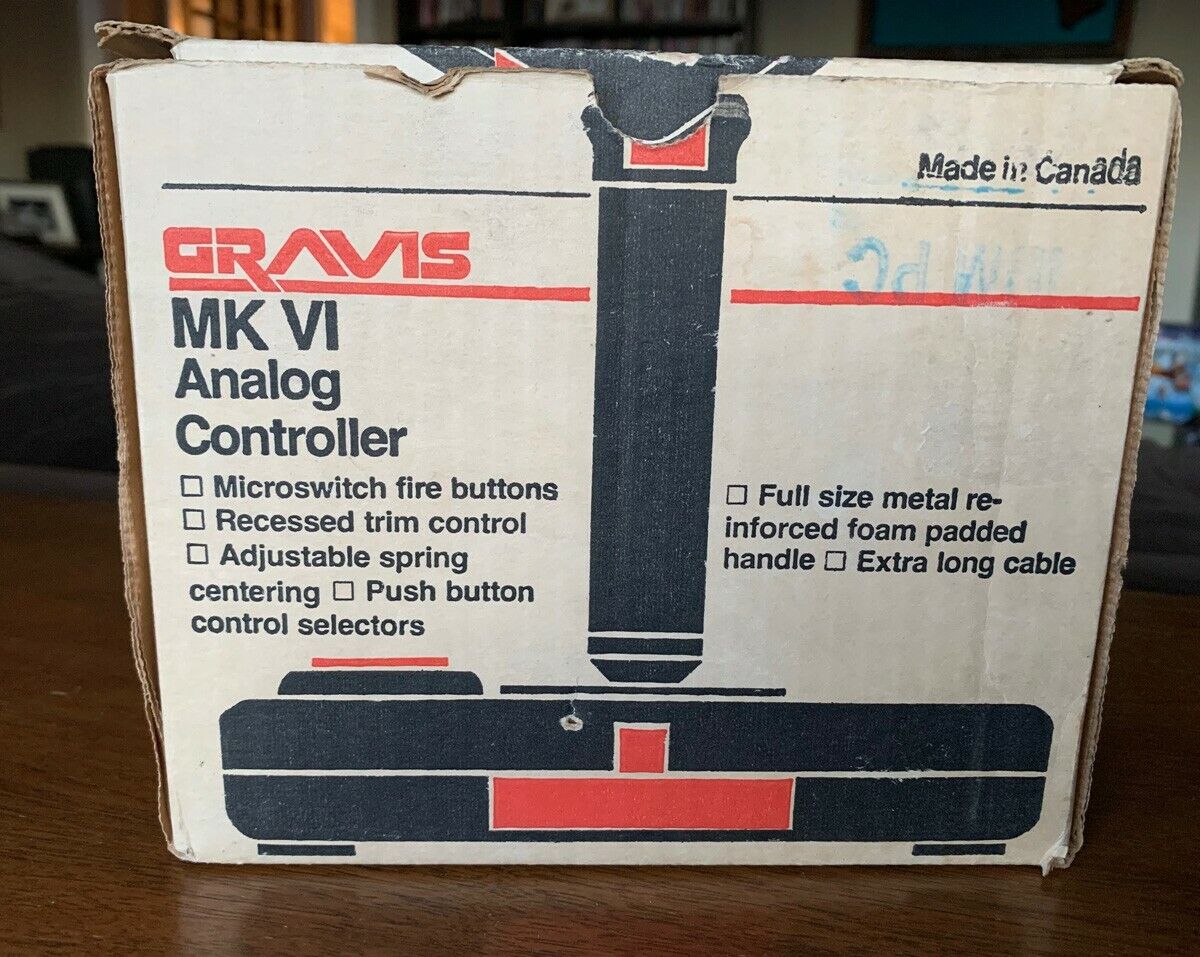  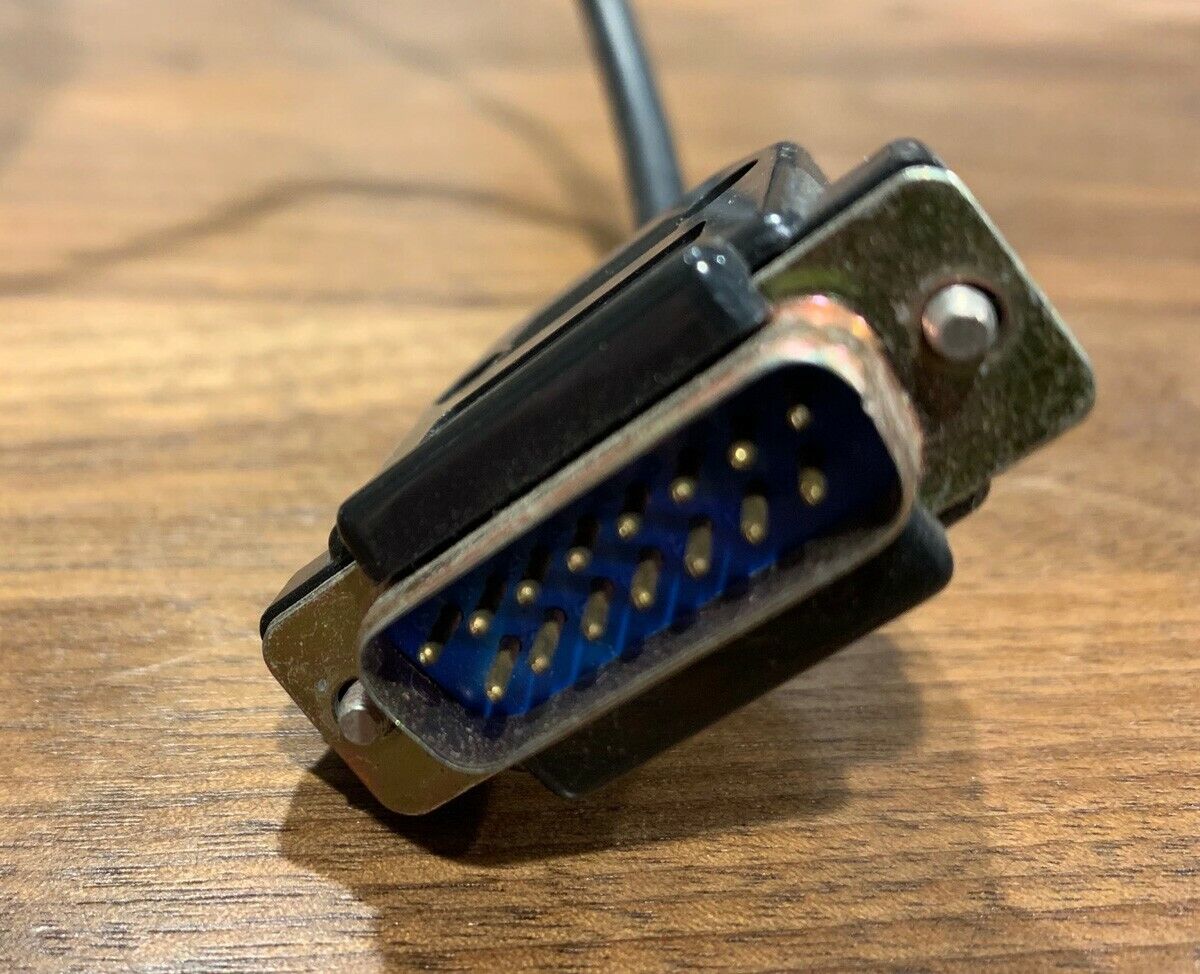
|
 PC Pro PC Pro
Launched: 1991
Interface: 15-pin analogue
Number of Axis: 2
Number of Buttons: 4
Price: -
More Images
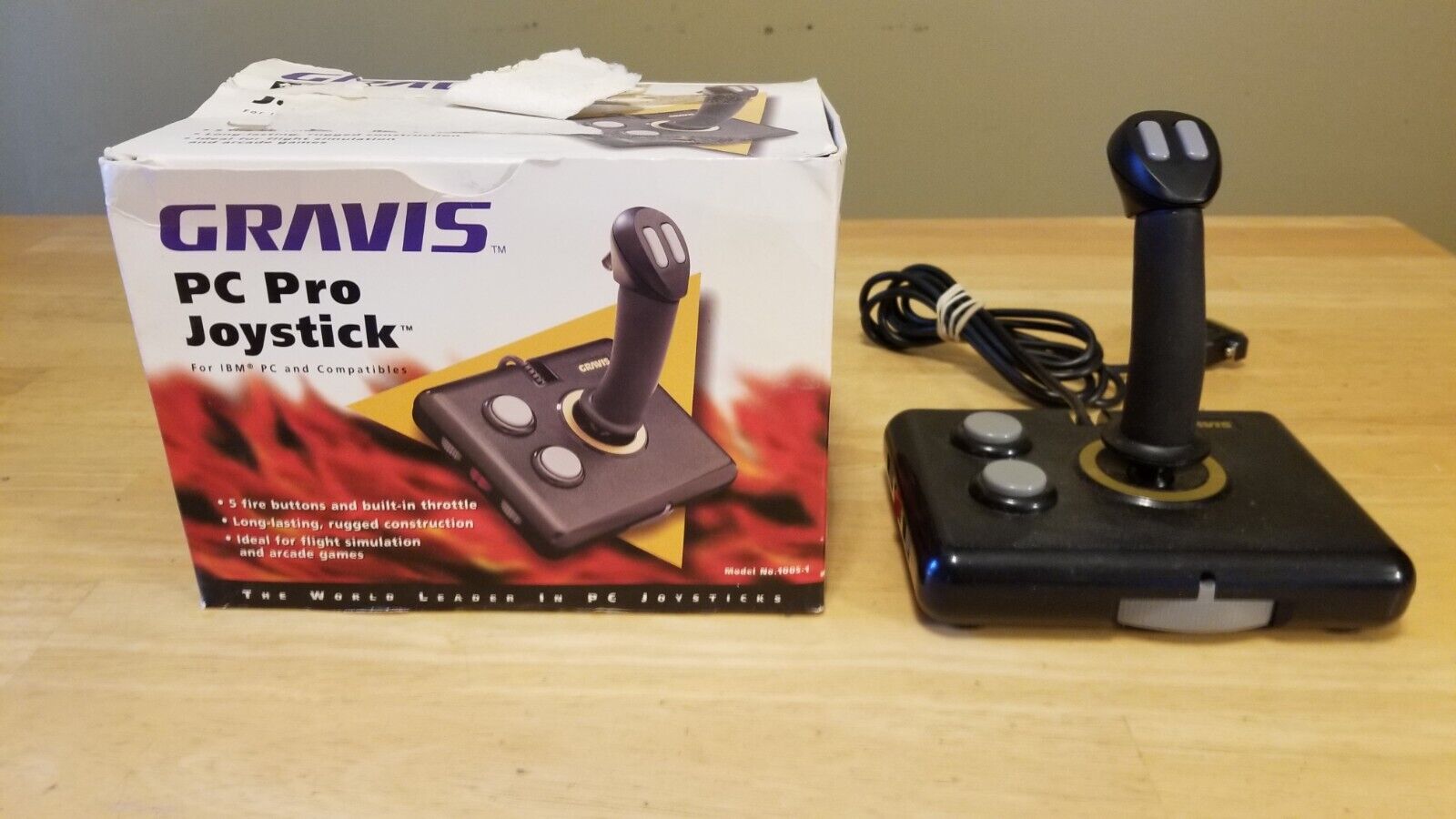 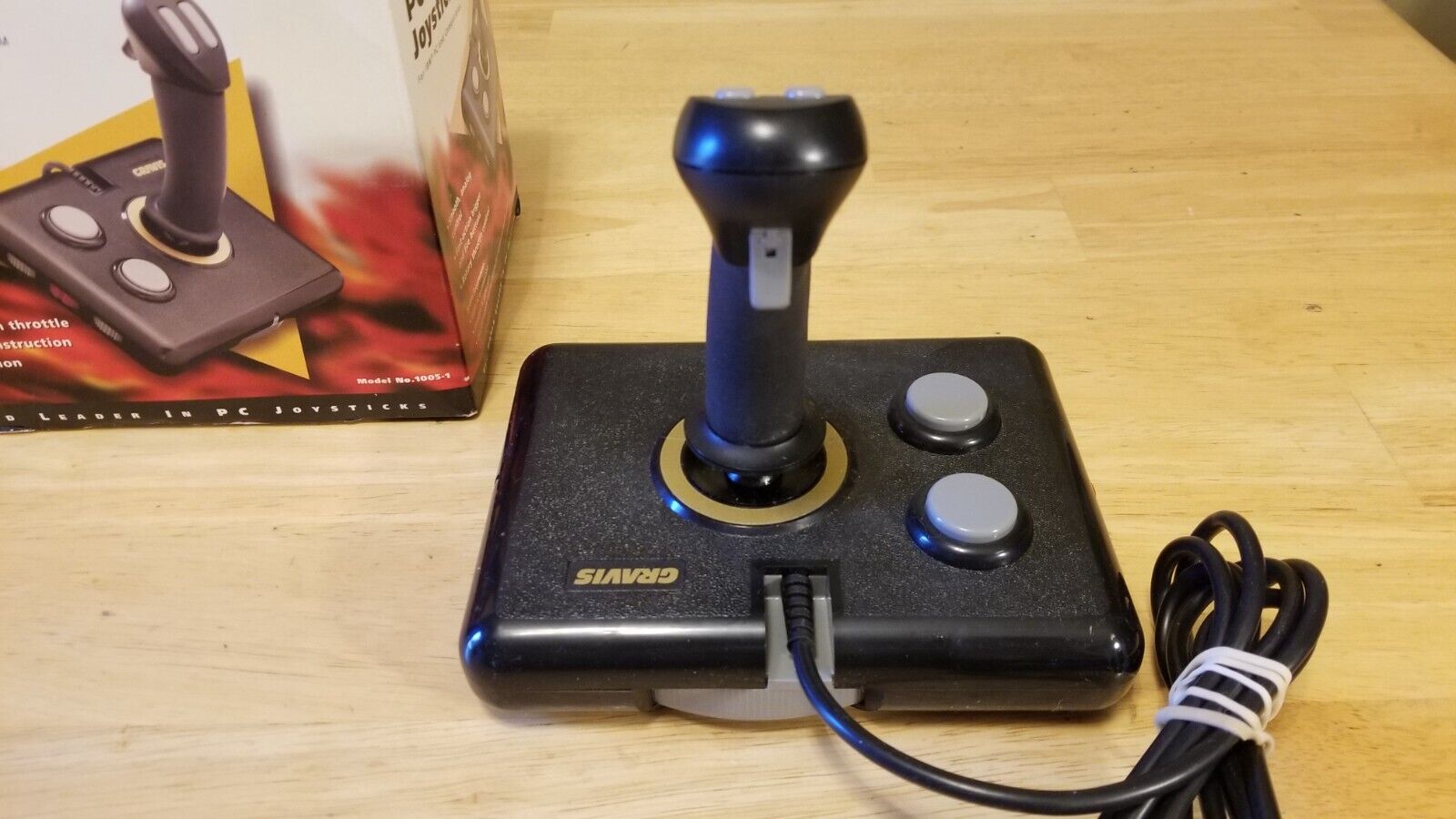 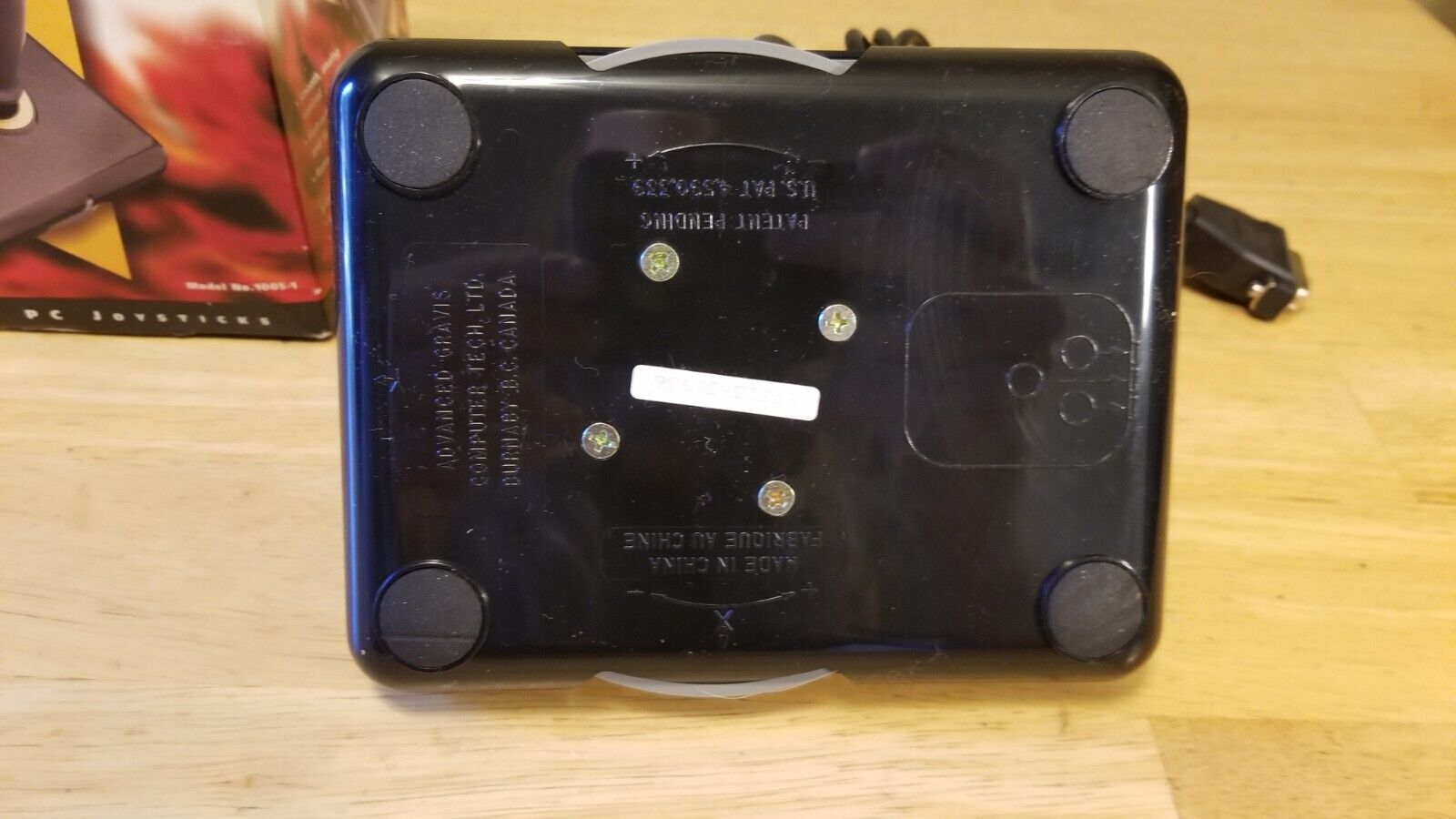 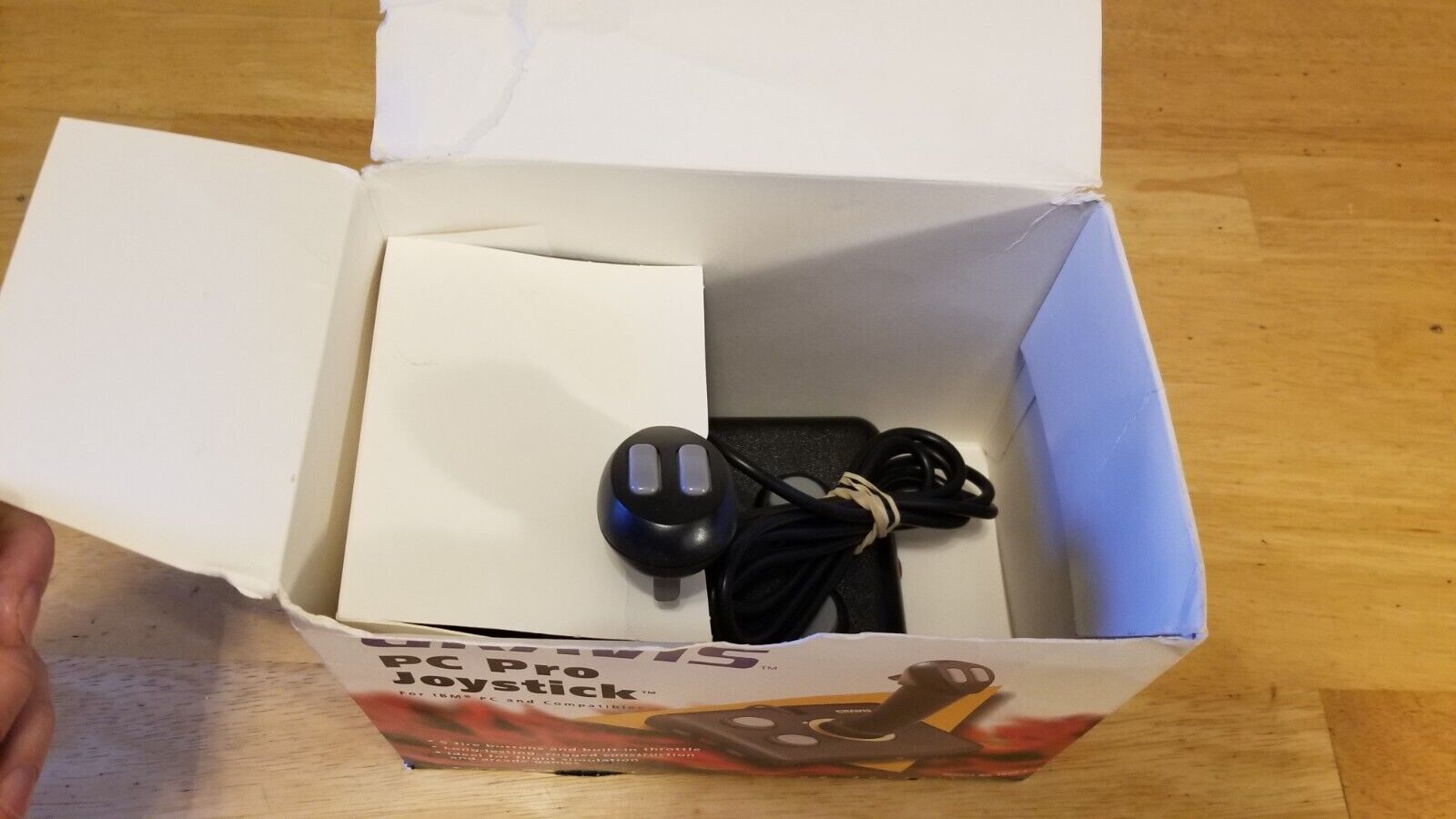 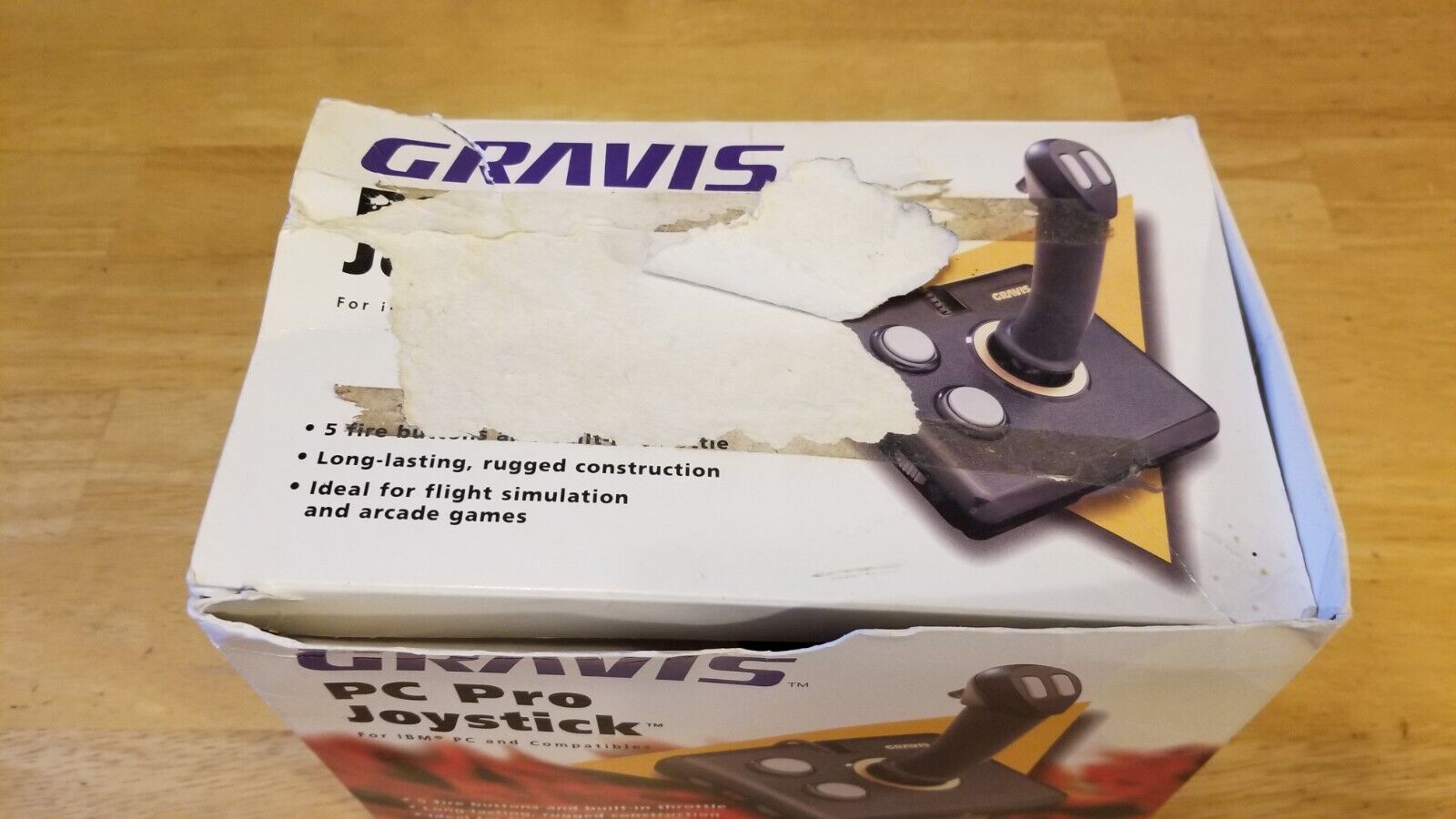 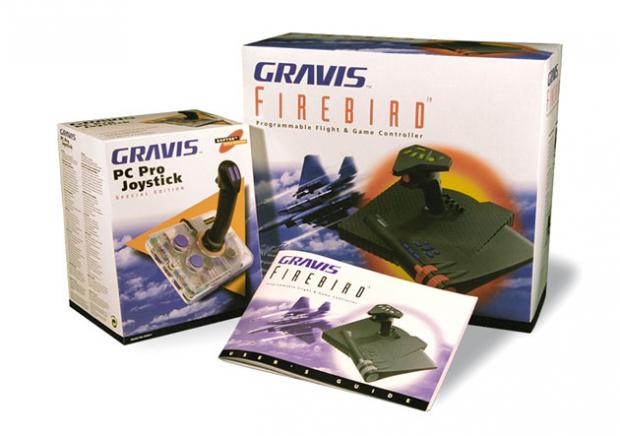
|
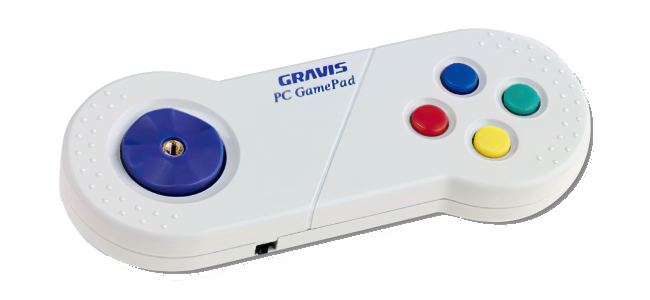 GamePad GamePad
Launched: 1993
Interface: 15-pin game port
Protocol: Standard analogue
Model Number: 4001-1, G42021
Number of Axis: 2
Number of Buttons: 4
The original Gravis GamePad became hugely popular on the PC, with solid construction and reliability. In the centre of the rounded D-pad you could screw in a small joystick for increased directional sensitivity.
Both at the top and bottom of the gamepad are switches. One of them removes the normal functionality from 2 of the buttons, and turns them into autofire variants of the first 2. This gave all four buttons functionality even in PC games that only supported two buttons on joysticks or for scenarios when two gamepads are connected with a Y-splitter. The other allows for left-handed operation by turning the workings of the D-pad and buttons upside down.
In a first for PC game controllers, the GamePad included four action buttons. By default, the IBM PC game port could only support two, so games had to be specially programmed to utilise all four on the Gravis pad. If a game didn’t support four buttons, you just flipped a switch on the lower edge of the pad, and the extra buttons became turbo versions of the original two.
More Images
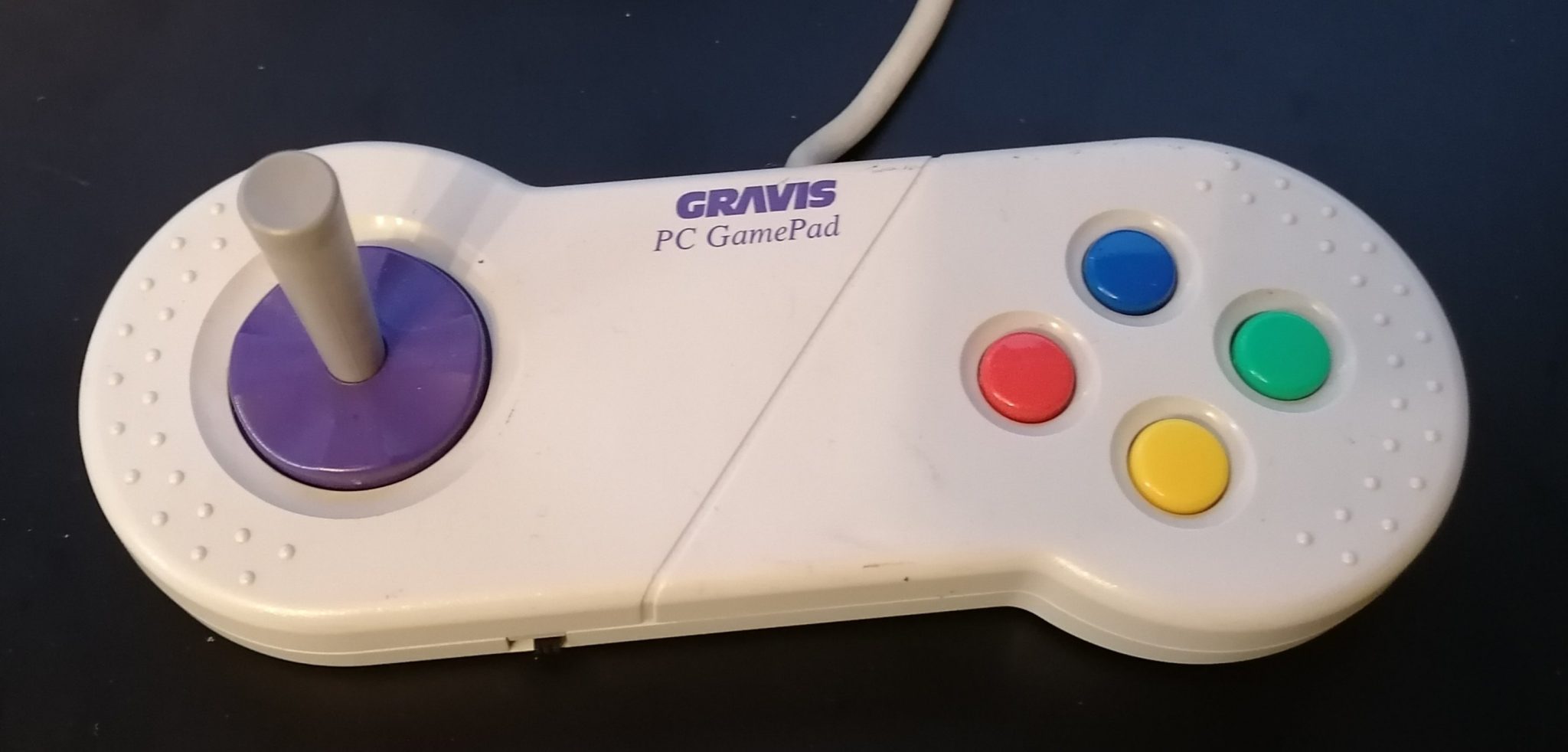 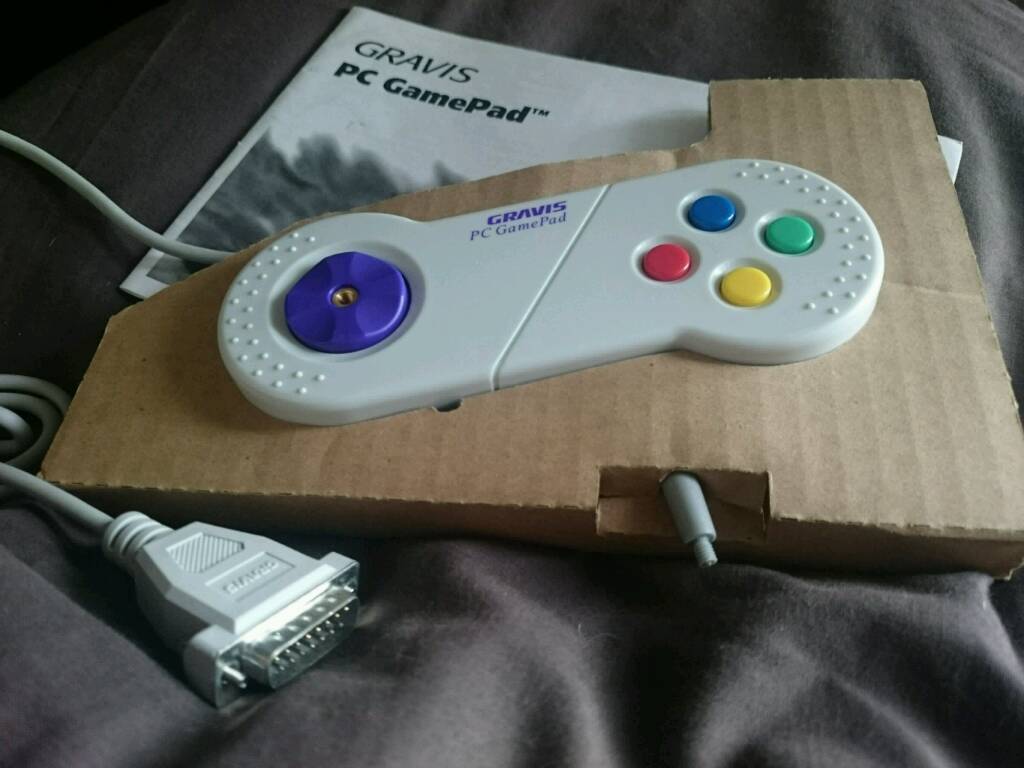
|
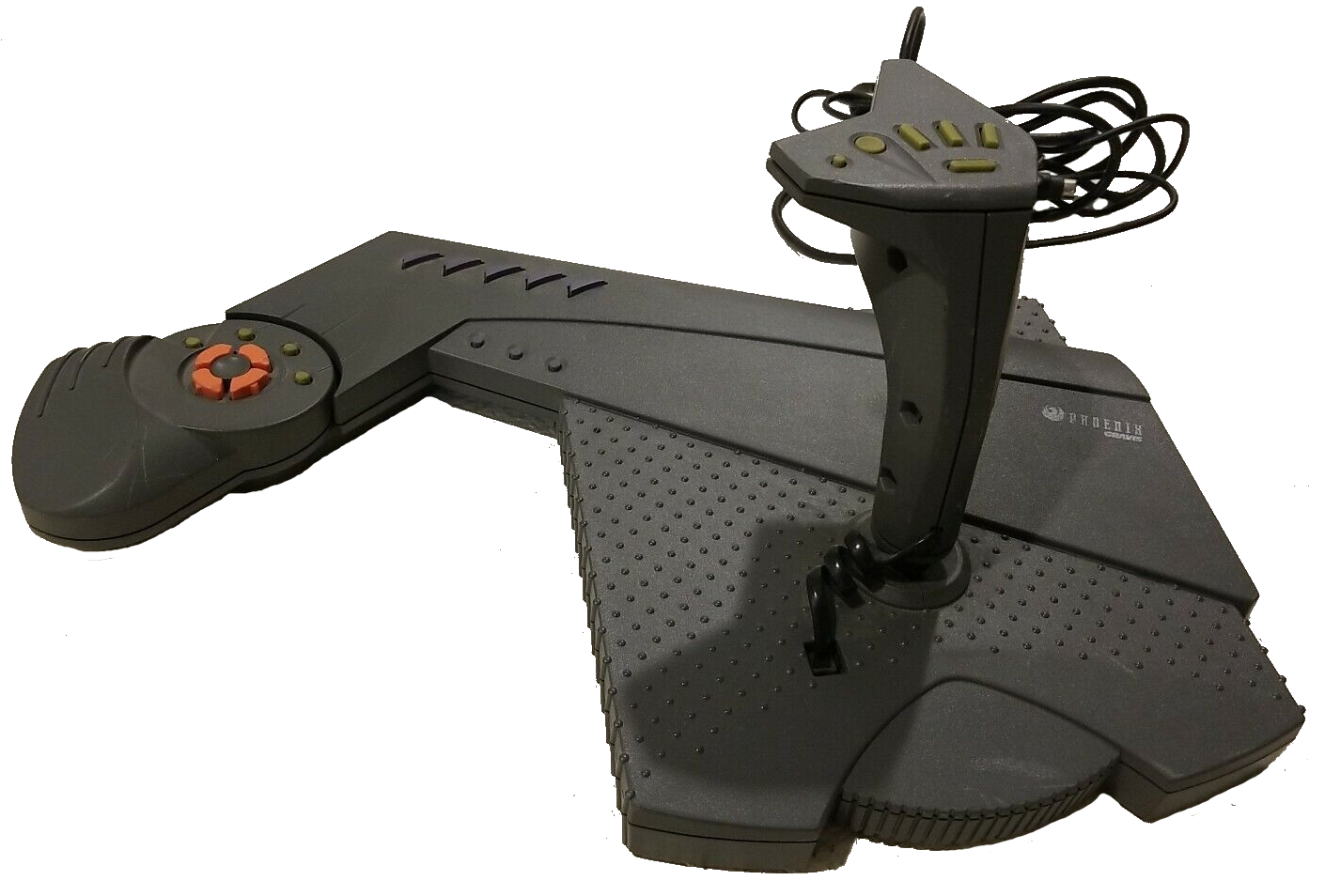 Phoenix Phoenix
Launched: 1994
Interface: 15-pin analogue
Protocol: N/A
Number of Axis: 2
Number of Buttons: 46
Price: $149.95

An advert excerpt from PC Magazine,
December 1994
More Images
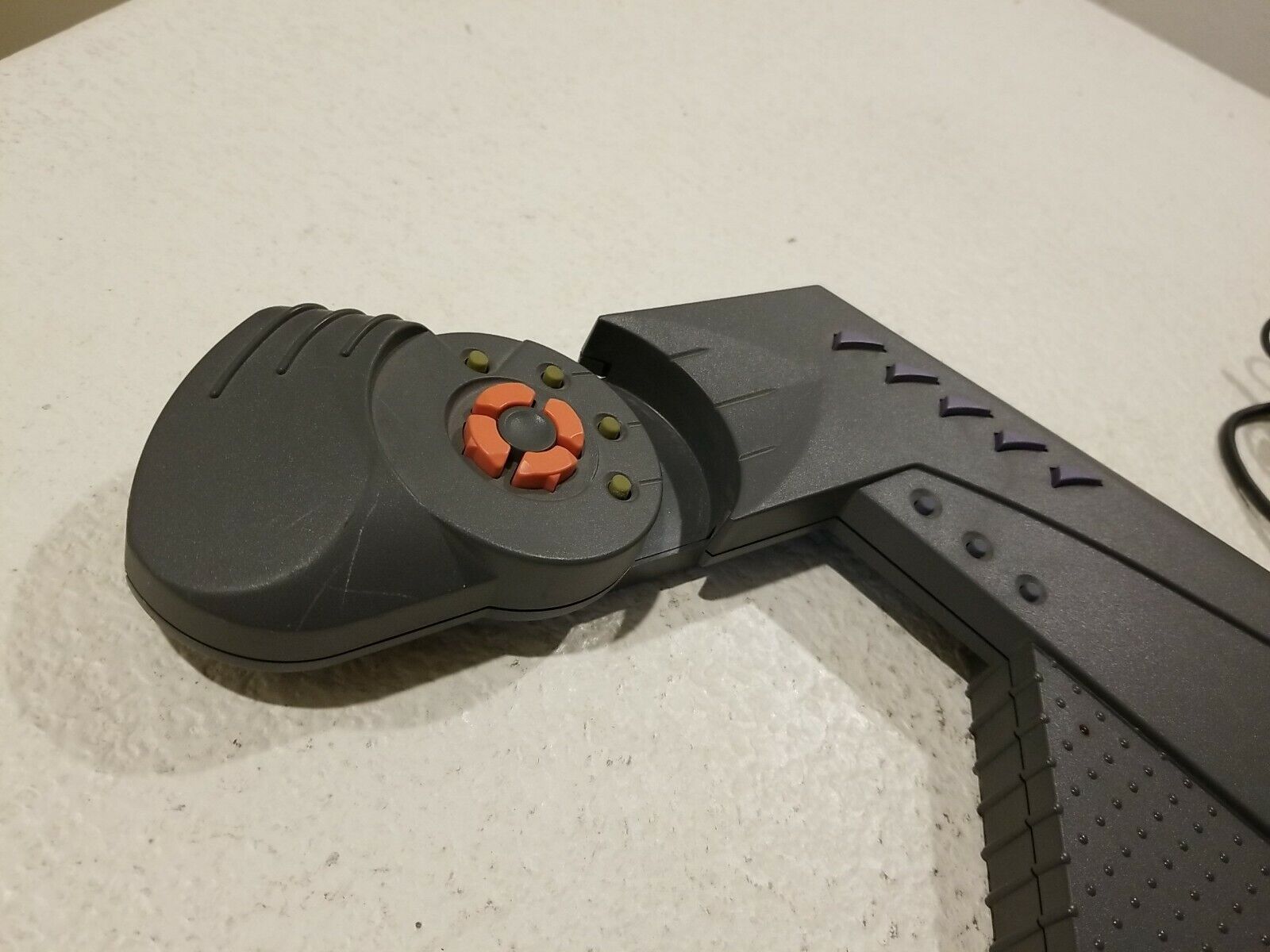 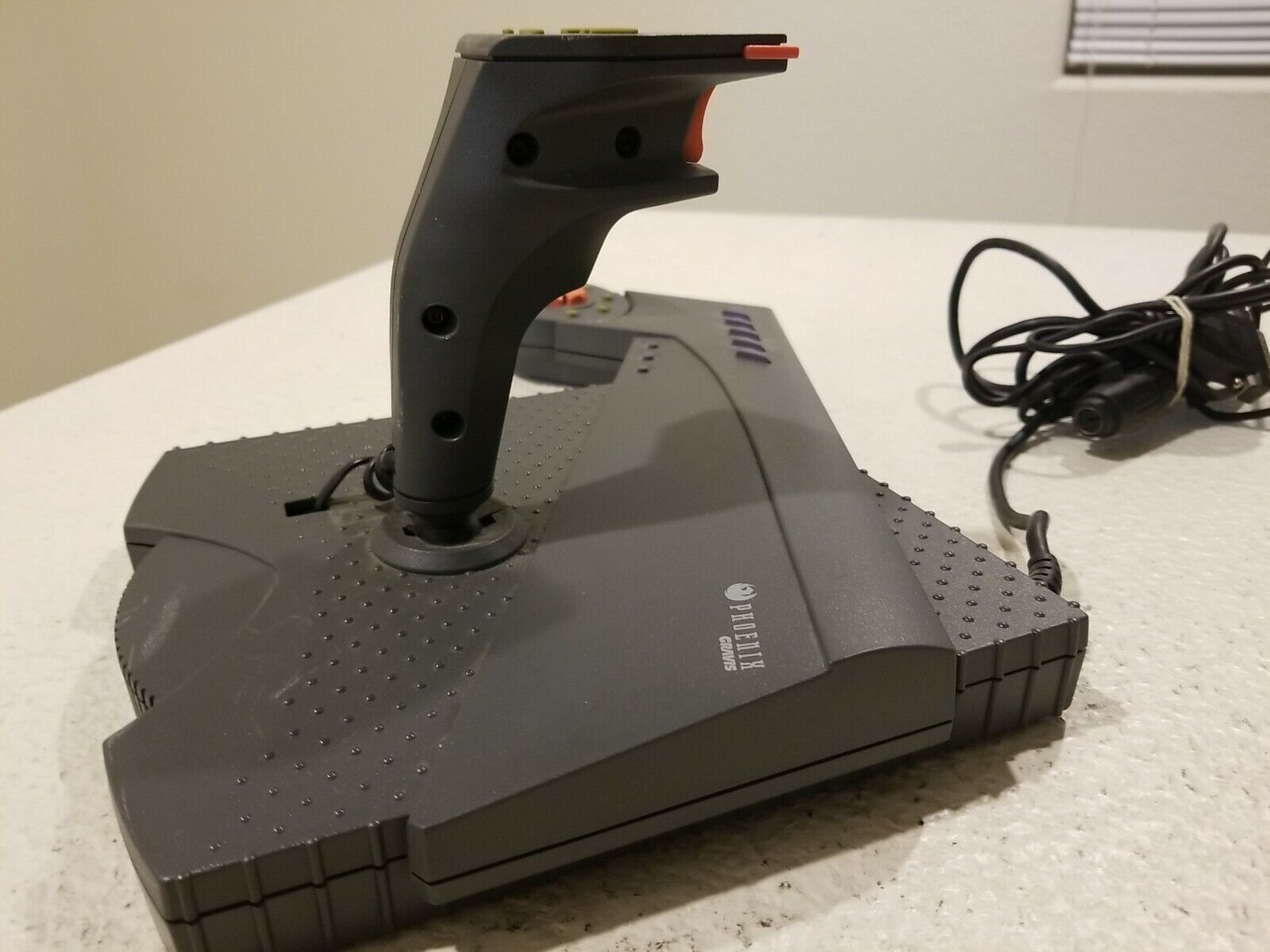 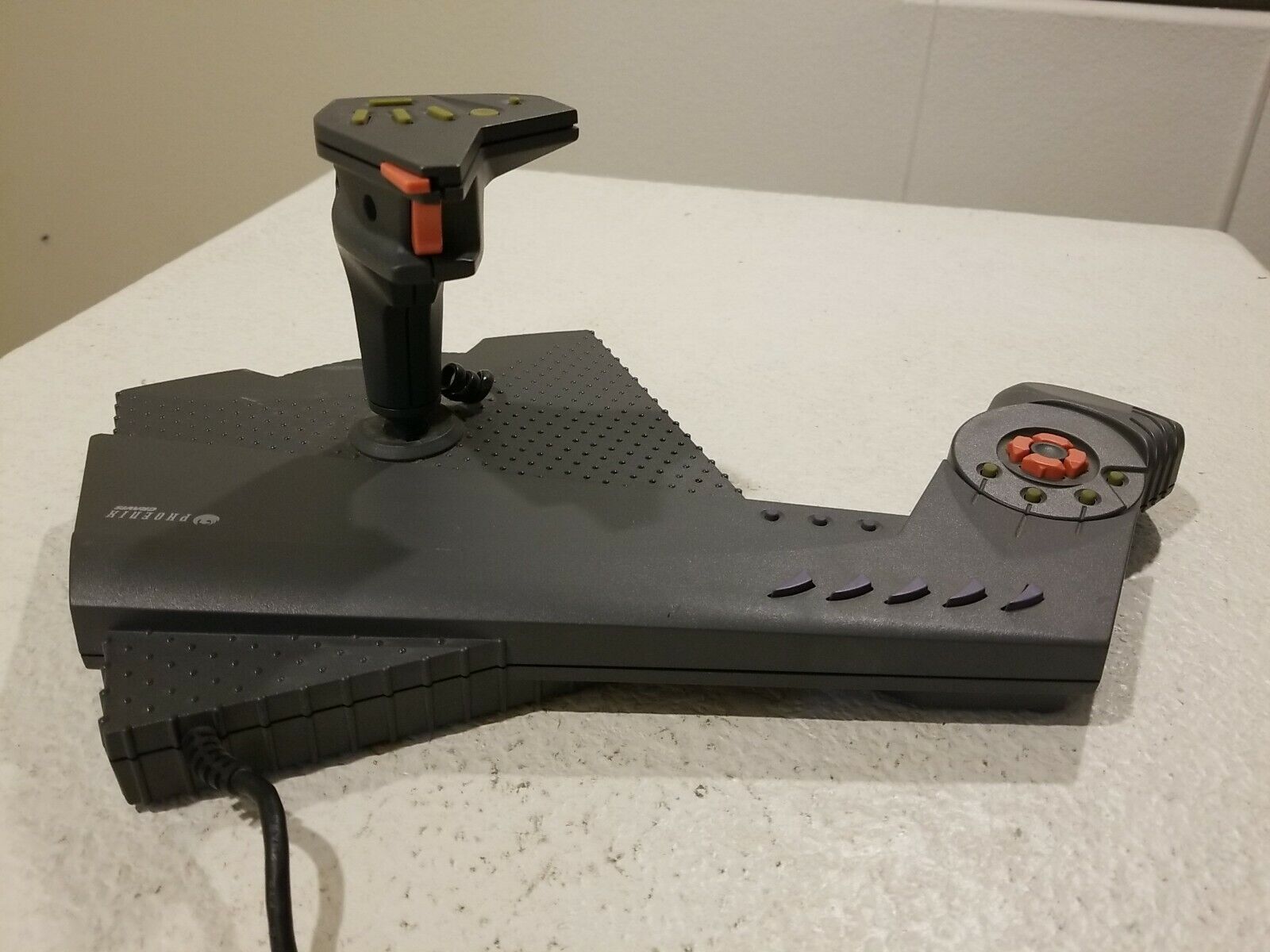 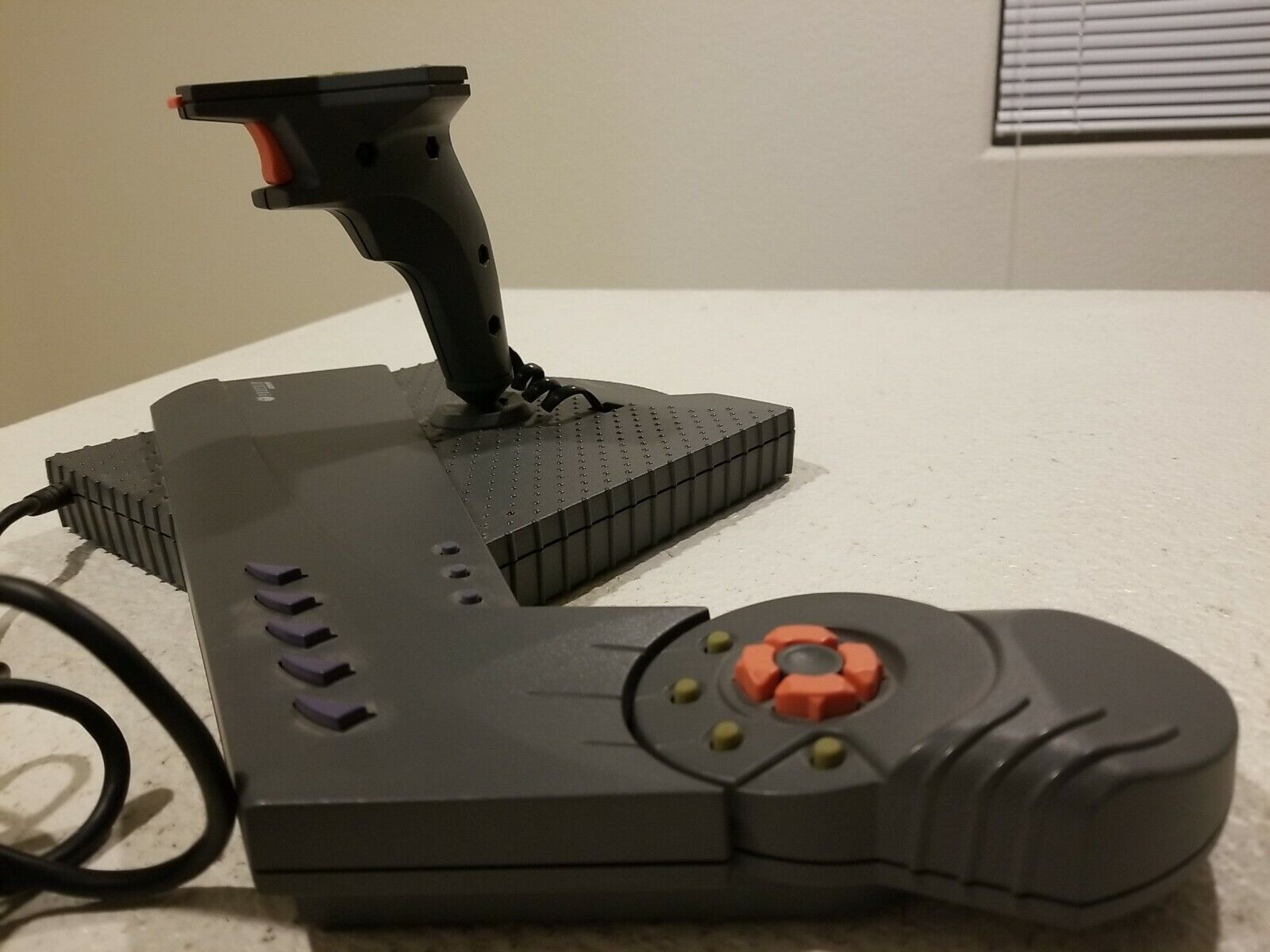
|
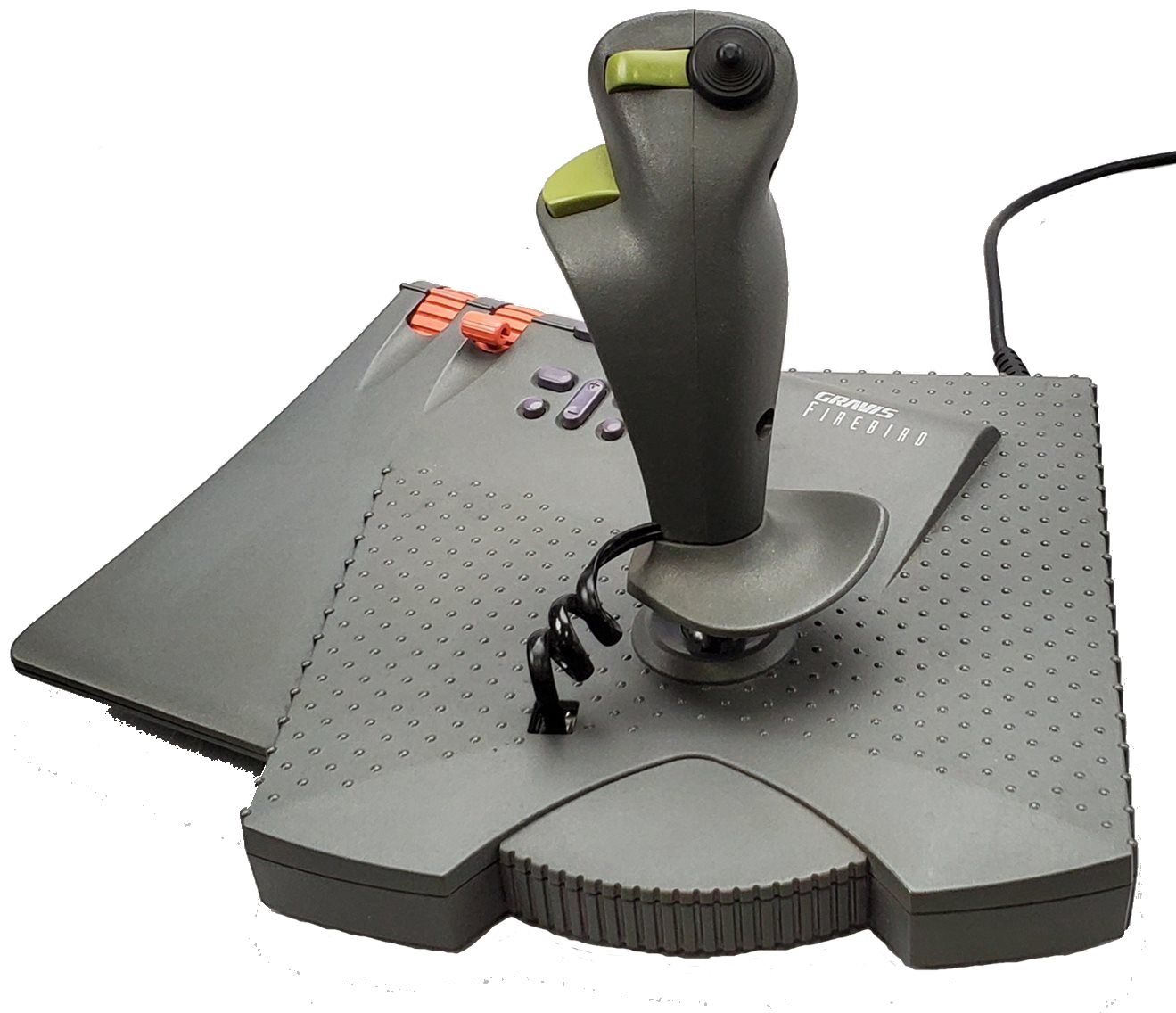 Firebird Firebird
Launched: 1996
Interface: 15-pin analogue
Number of Axis: 3?
Number of Buttons: 17
Price: -
"Advanced Gravis's first joystick, the Phoenix, was quite impressive visually, with a mouse-like throttle and rudder control and a large base with over 20 buttons. One of the gripes with the Phoenix was the fact it took up quite a bit of real estate on the desktop. So the Phoenix got a little brother: the Firebird. This stick is very similar to the Phoenix but is smaller and has fewer buttons (a mere 17). The Firebird also has a throttle and trim control built into the base.
Unlike any of the other sticks in this roundup, the Firebird is completely programmable. It plugs into the joystick and keyboard ports and allows you to assign keystrokes to each of the stick's buttons. The DOS configuration software utilizes a Windows-like interface to make programming the buttons an easy task. You can even program such things as two separate key functions so that a button will execute one as a key press and another as a key release. Finally, you can generate a PCX-format button diagram to help you remember what settings you assigned to each button.
The Firebird's stick is fairly
comfortable and has two trigger buttons on the handle. The top of the handle is crawling with buttons, all small but within easy reach of the thumb. By the time you read this, Advanced Gravis hopes to have released a new handle for the Firebird, one more curved and ergonomic. An upgrade will be available to current owners.
The Firebird worked well with Mech Warrior 2, Wing Commander III, and U.S. Navy Fighters. In Fact, we relied heavily on the programmability of the stick for all these games."
Bernard H. Yee, PC Magazine, February 1996
More Images
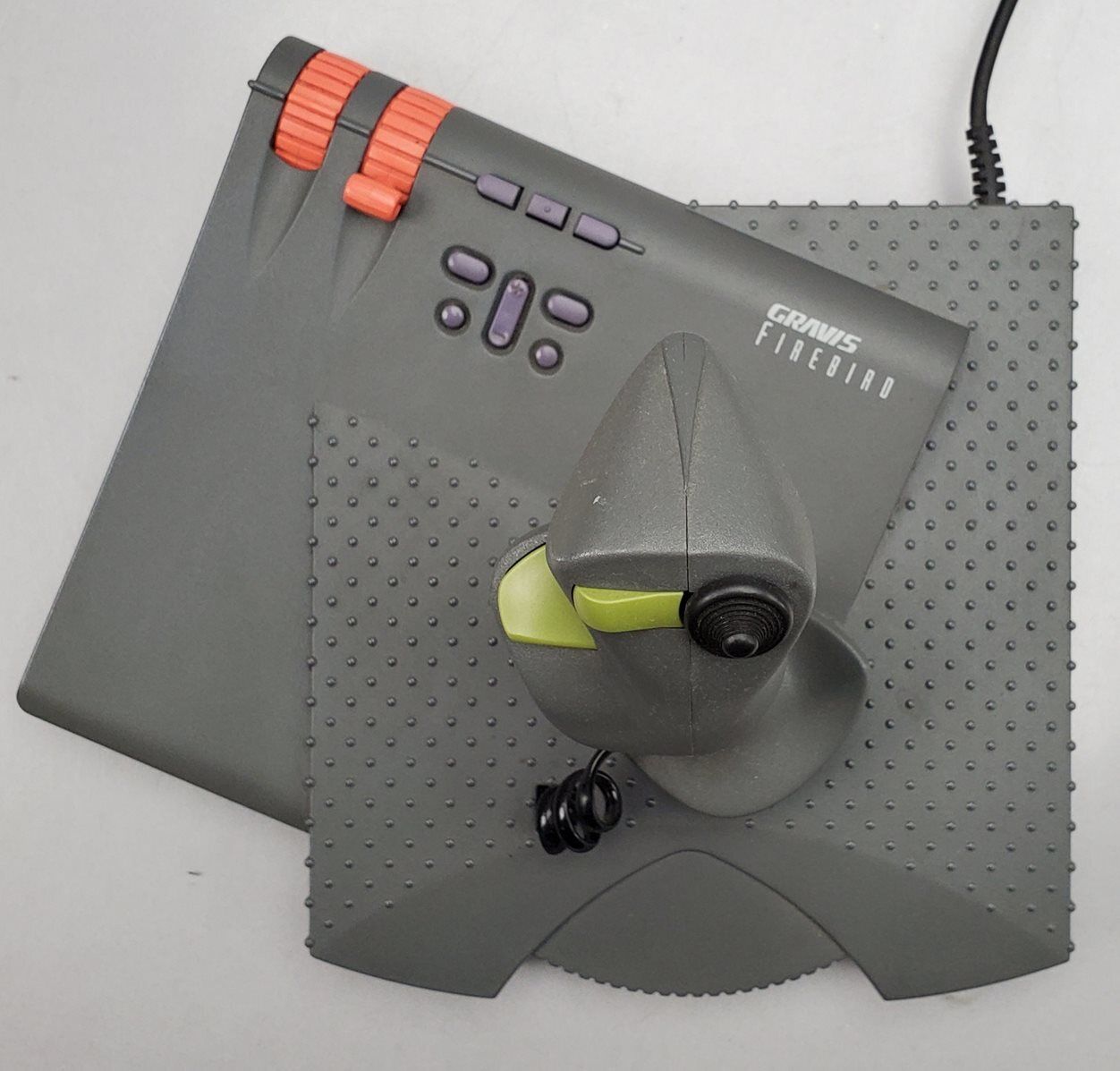 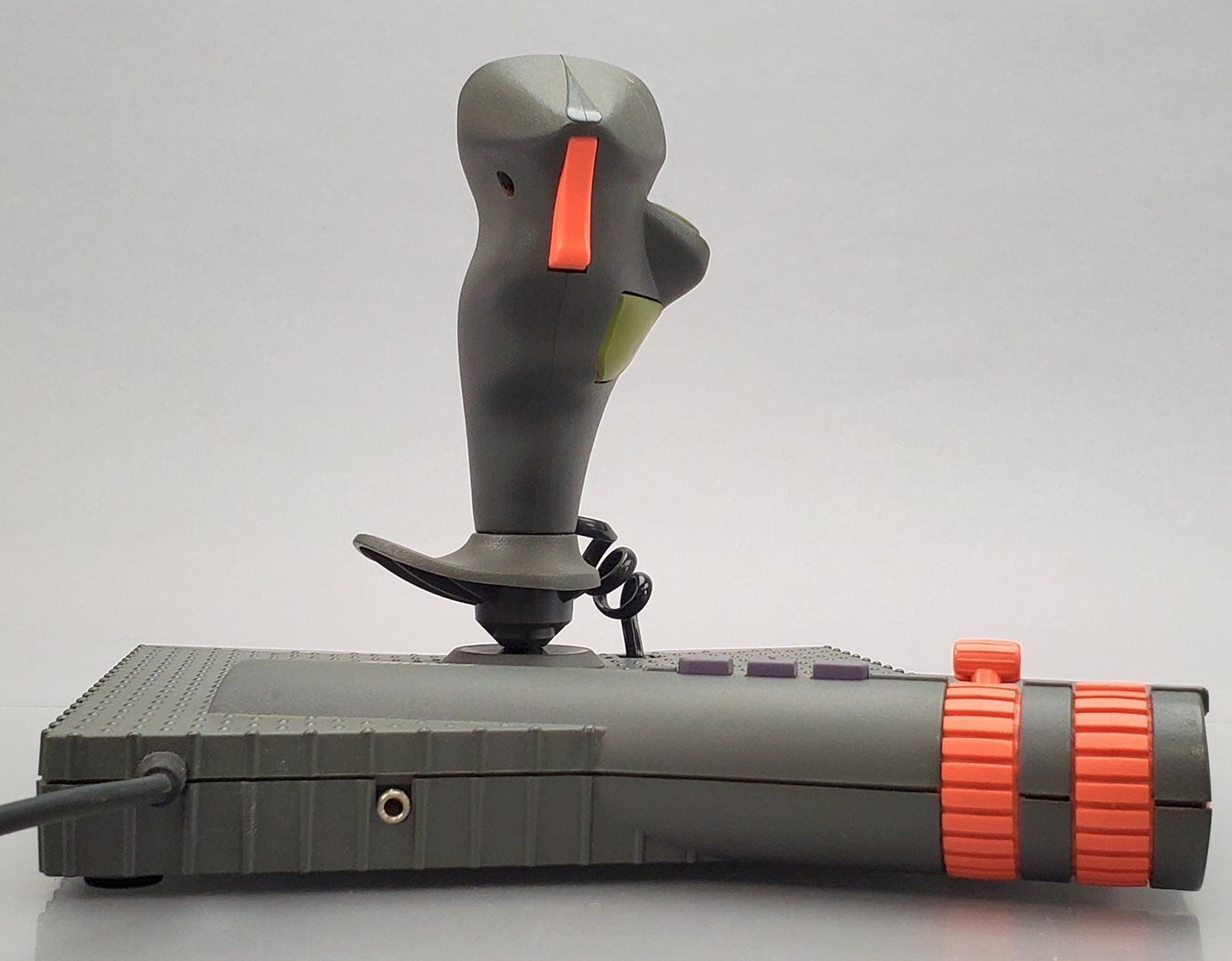 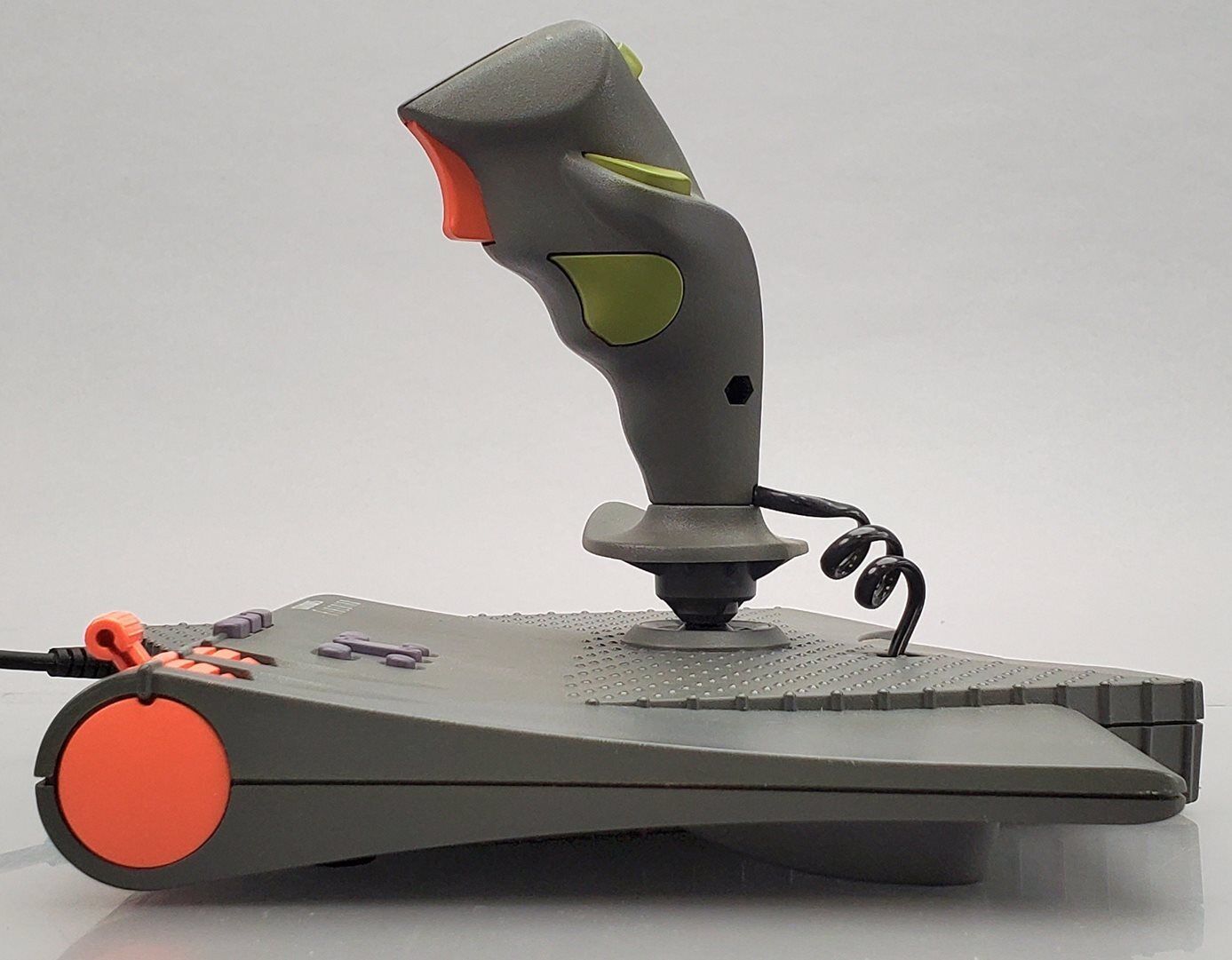 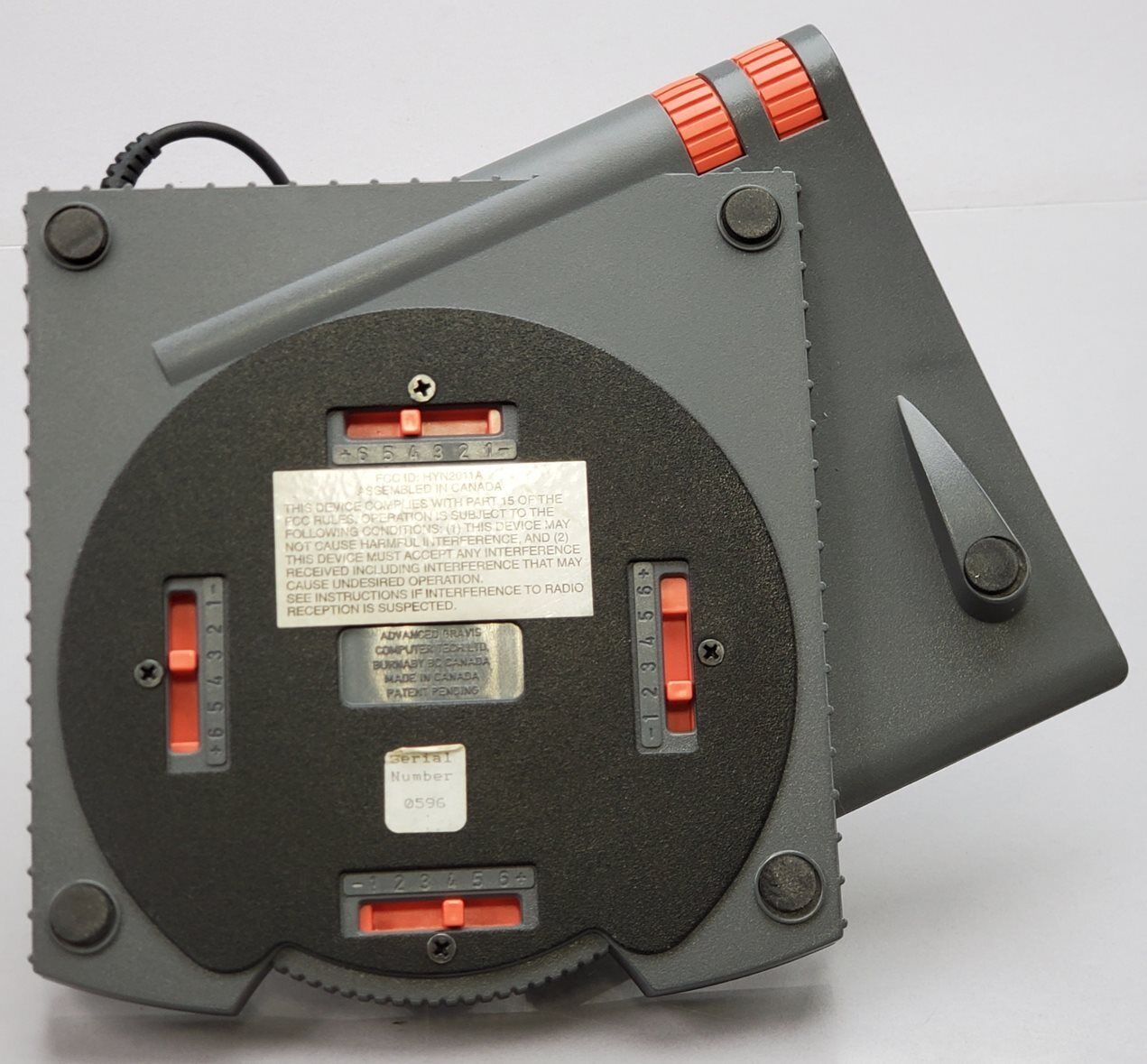 
|
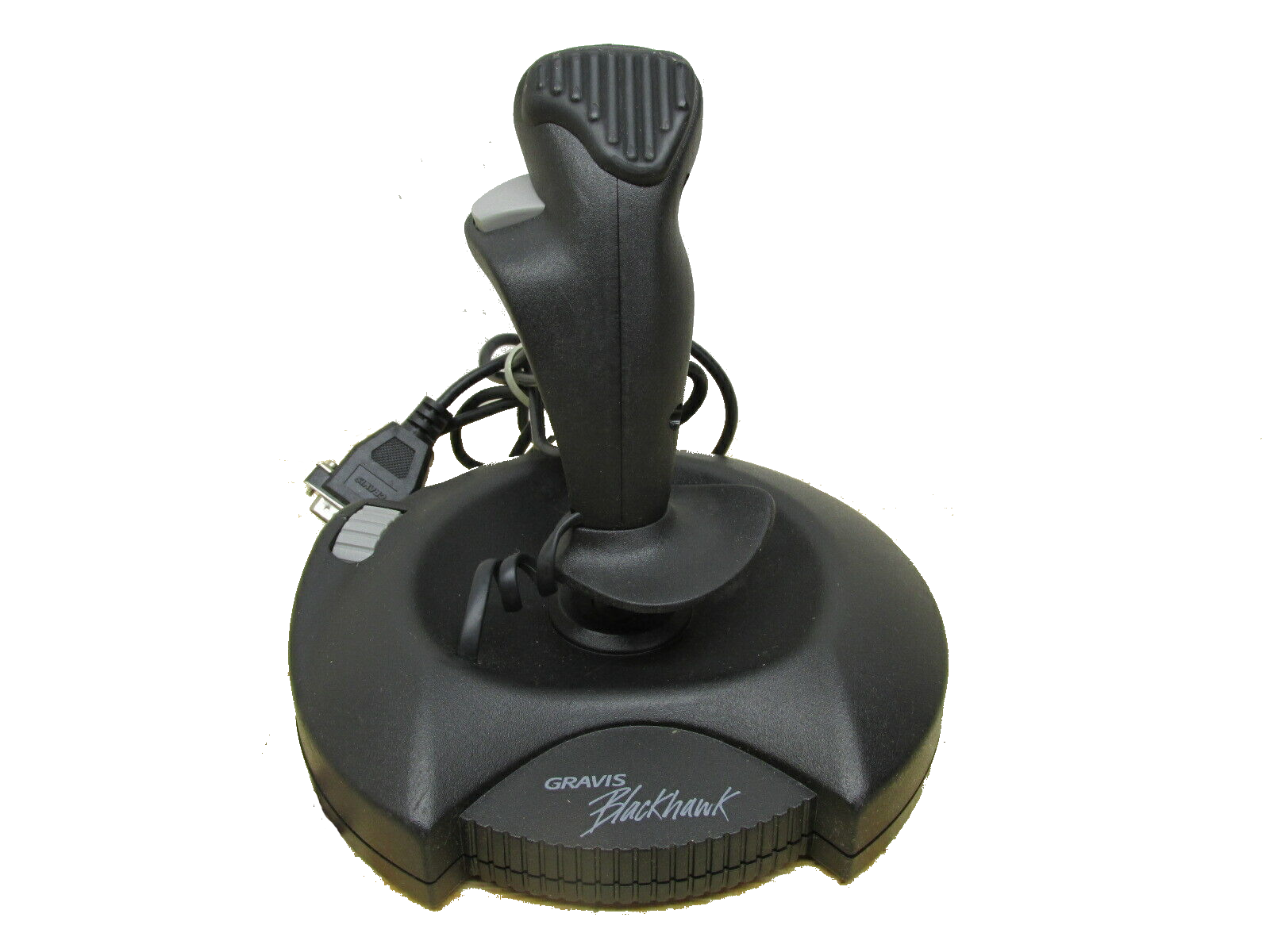 Blackhawk Blackhawk
Launched: 1997
Interface: 15-pin analogue
Number of Axis: 2
Number of Buttons: 4
"While a multitude of button and features appeals to some game players' innate need for bigger and better toys, most of us would be happy with something simpler.That's where the Gravis Blackhawk comes in.
The Blackhawk is no larger in diameter than
a mouse pad, so it can fit easily next to the keyboard on most desktops. And the compact design comes without a sacrifice in usability.
The joystick's handle is ergonomically shaped to feel comfortable in your hand, which is great if you like to spend hours playing Quake. There are three buttons on the handle and one on the base, but the latter button is a bit out of the way. We found ourselves having to look down a lot to find it.
The Blackhawk is easy to install: You simply turn your PC off, plug the stick into the game port, and turn the PC back on. Windows 95 automatically recognizes the stick, so all that's left to do is calibrate it.
The only major drawback of the Blackhawk
is its lack of a hat switch, a deficiency that looms large for flight-sim fans. But for action games and even some science fiction games, the Blackhawk has a lot going for it. Given its street price of about $30 or less, we believe that many game fans will accept the Blackhawk even without the hat switch - especially if their tastes tend toward such titles as MDK and Duke Nukem 3D."
SM, PC Magazine, November 1997
More Images
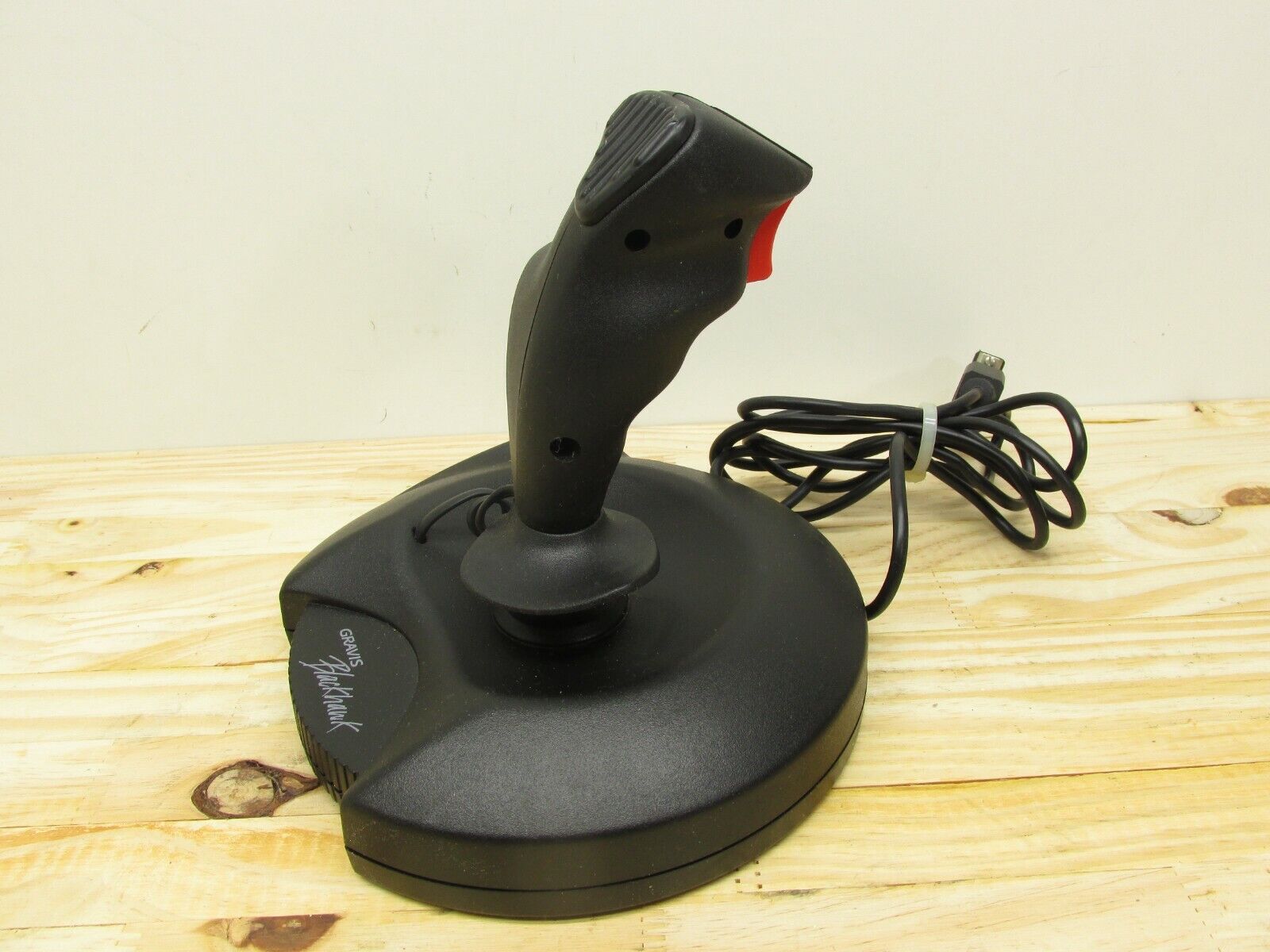 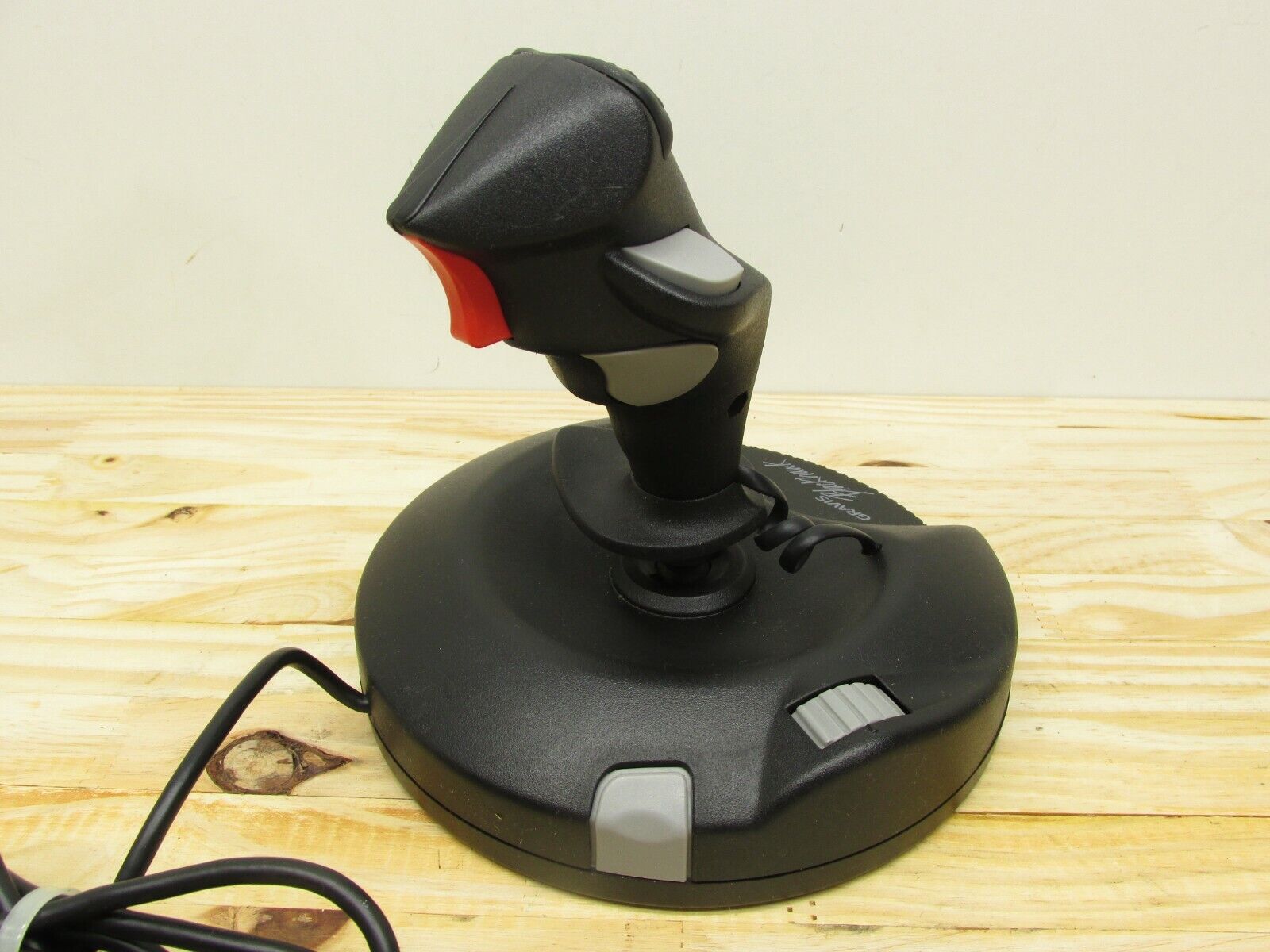 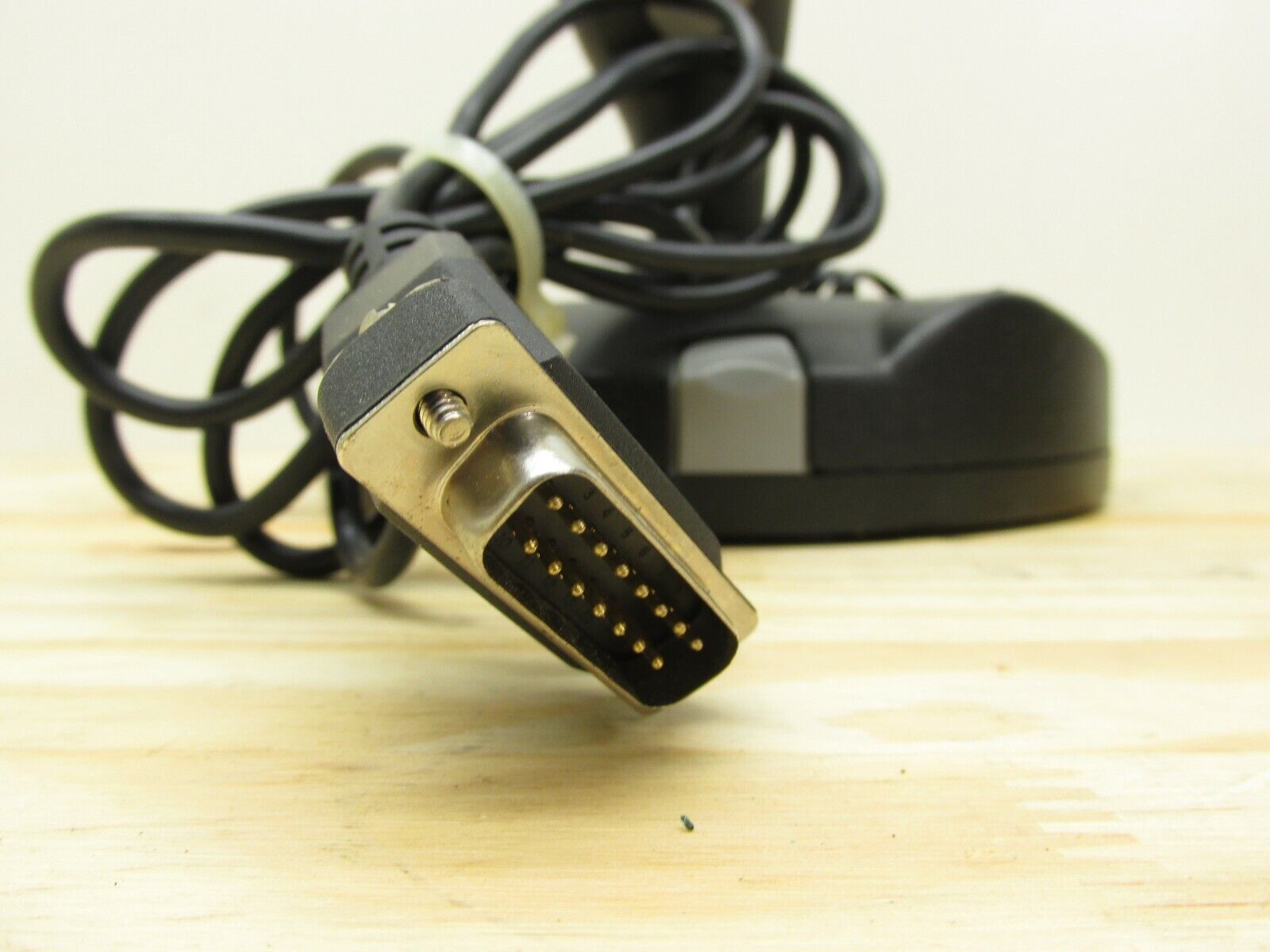 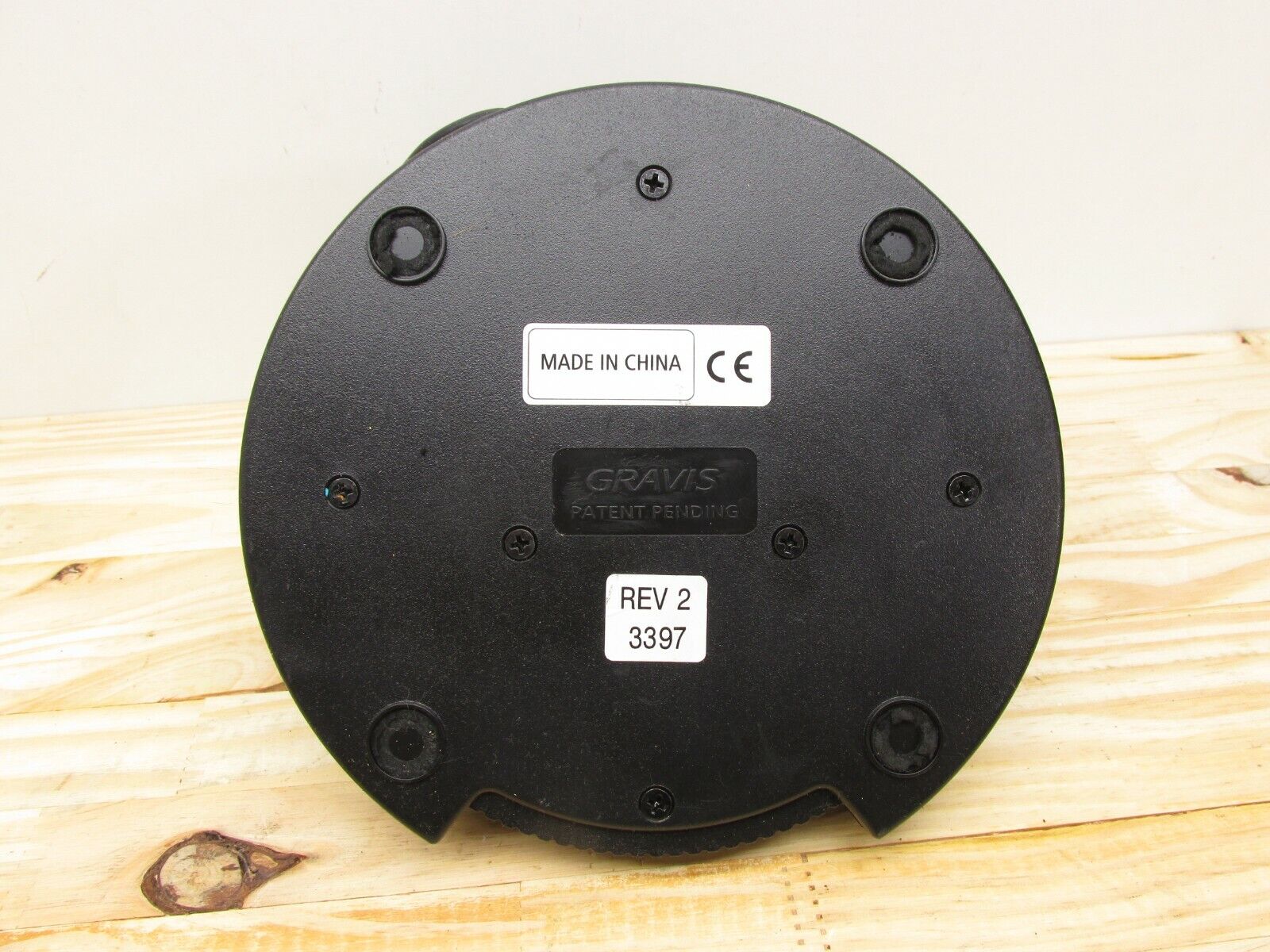 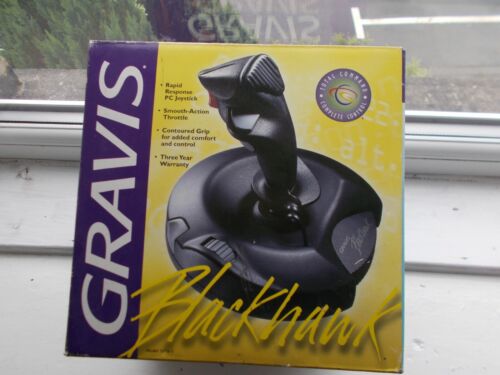  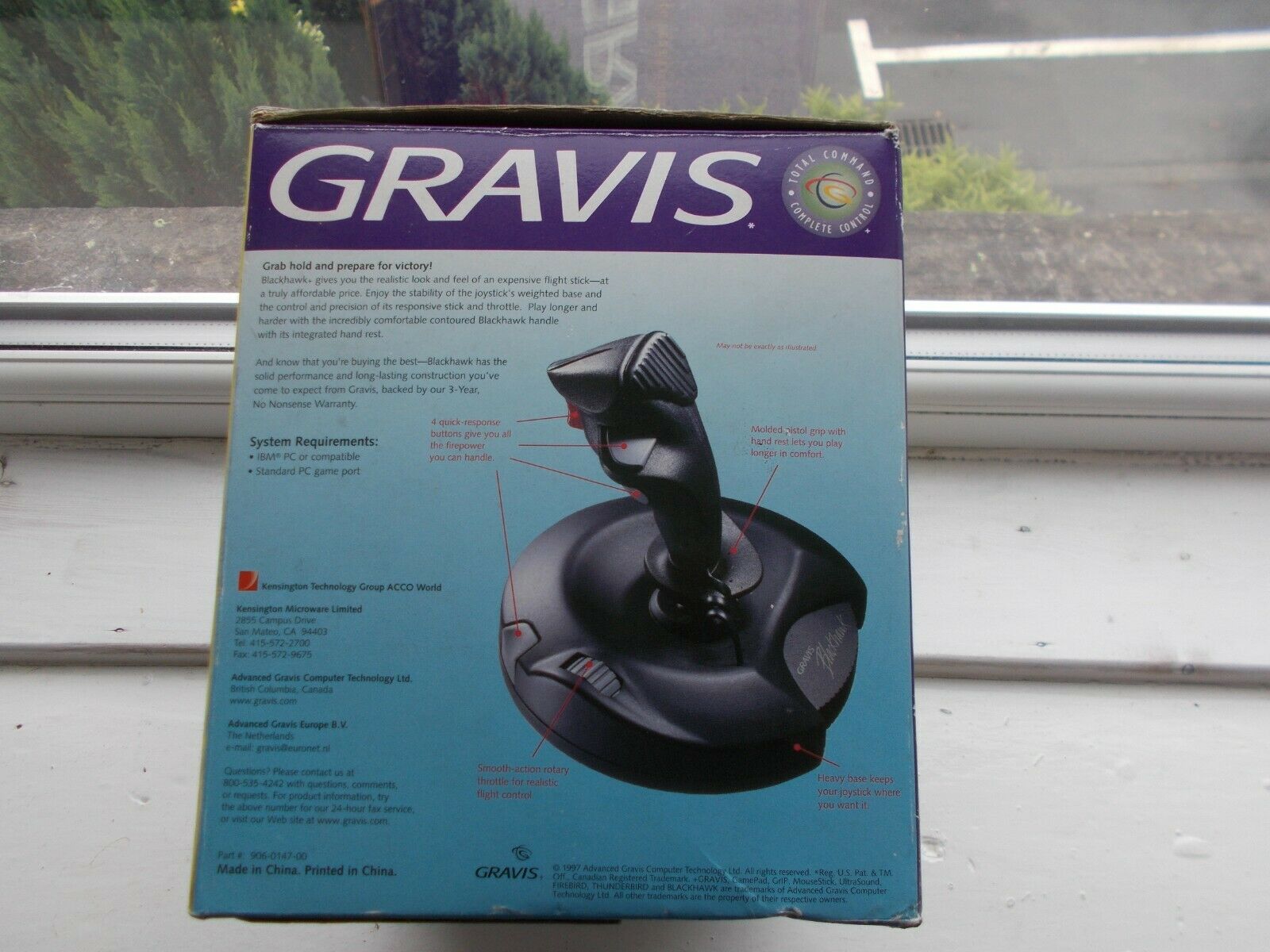 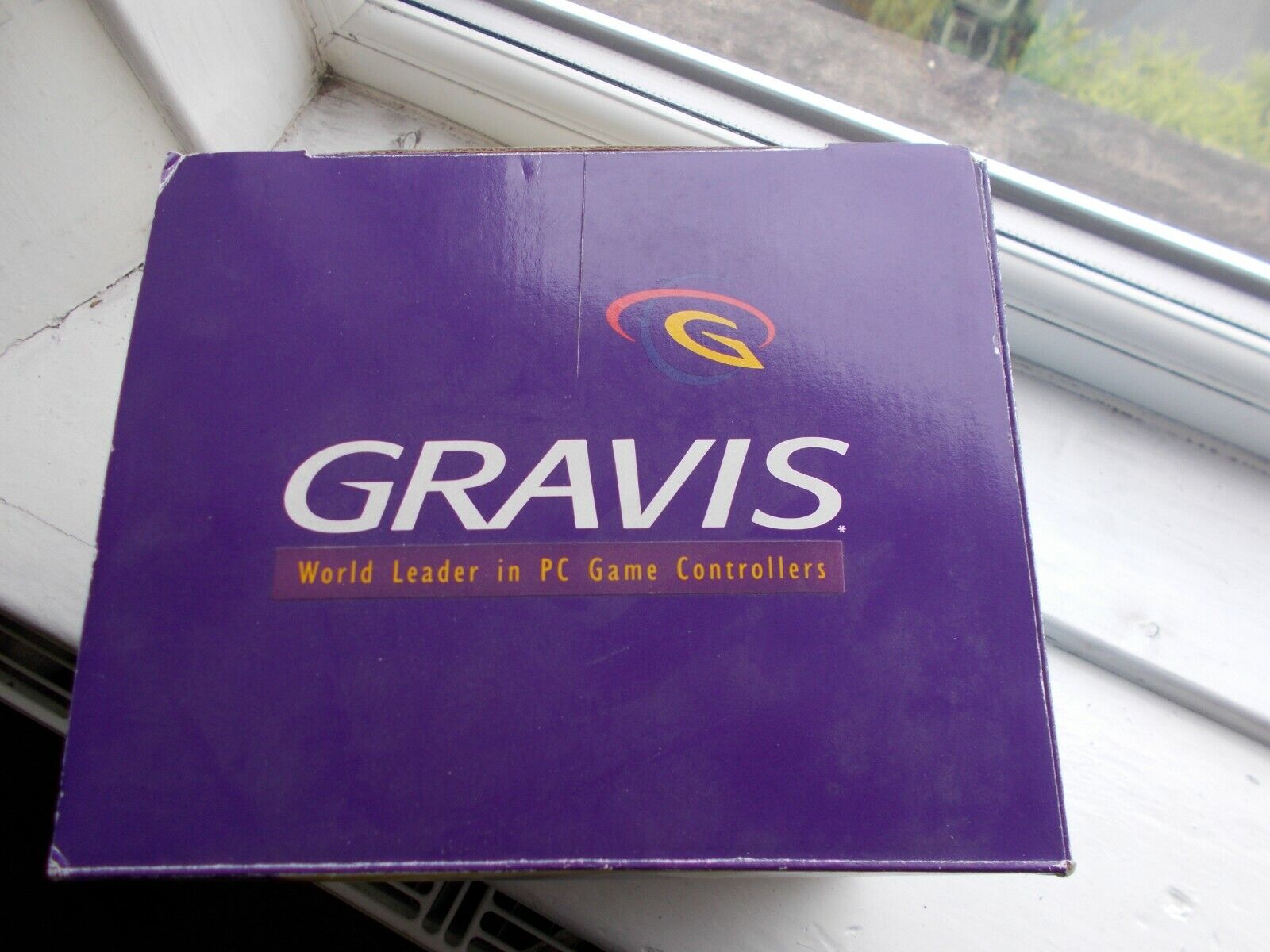 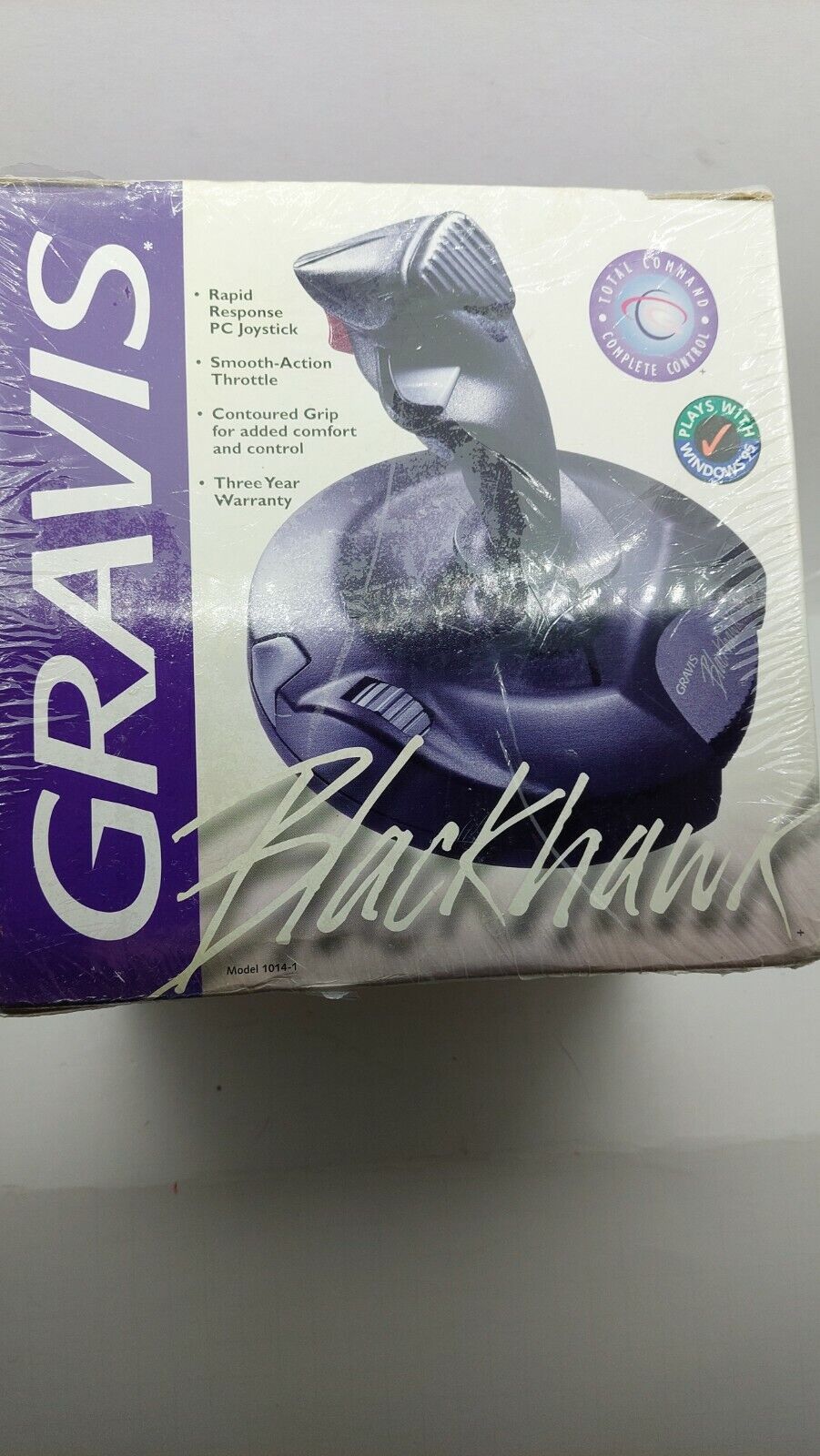
|
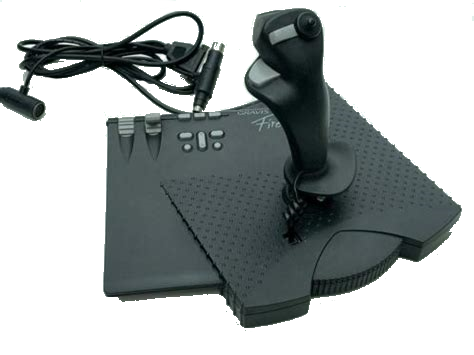 Firebird 2 Firebird 2
Launched: 1997
Interface: 15-pin analogue
Number of Axis: 3
Number of Buttons: 13
"If you're the kind of player who needs all the coolest toys he can get, Gravis has the joystick for you. Descended from the many-buttoned Phoenix and its little brother, the Firdbird, the Firebird 2 is an ergonomically designed, programmable joystick.
The Firebird 2 boasts 13 buttons and an eight-way directional hat switch. The joystick is housed in a larger-than-average base; we had to clear off a big chunk of desktop real estate
for it. We suppose the Firebird 2 has to be big because it can store so much data: You can assign up to 106 keystrokes, distributed among the stick's buttons. This feature lets you program entire strings of keyboard input - which are then activated by a single button.
The Firebird 2's handgrip
is comfortable and comes with a hand rest for prolonged use. Turn the stick over and you'll find that the base has four sliders, used to adjust the tension for each of the joystick's directional axes.
Installation is one area where the Firdbird 2 falls flat. First you have to power down the computer and plug the stick into the game and keyboard ports. Then you plug the keyboard into the Firebird 2's pass-through socket. Finally, you have to install the software. Fortunately, the software is intuitive and simple to install, but we feel that with the advent of digital joysticks, keyboard pass-through sockets should be a thing of the past.
While this joystick definitely isn't for everyone, those longing to have lengthy keyboard commands a mere button-press away will want to get their hands on it."
SM, PC Magazine, November 1997
More Images
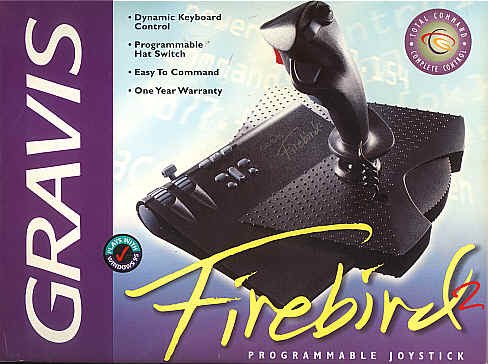
|
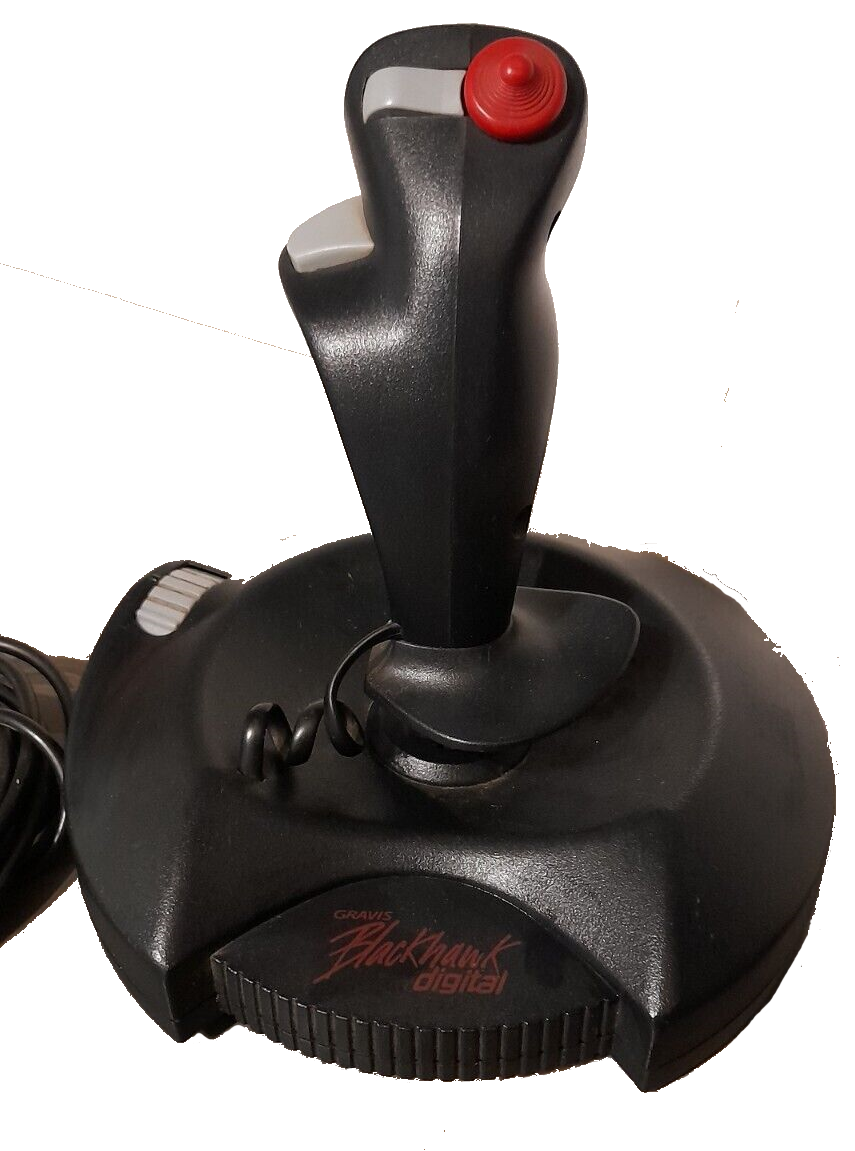 Blackhawk Digital Blackhawk Digital
Launched: 199x?
Interface: 15-pin analogue
Protocol: Gravis GrIP
Number of Axis: 2
Number of Buttons: 4
"Joysticks Get a GrIP
The PC's Game Port hasn't advanced since Pong was in its heyday. Back then it didn't really matter that a joystick exacted a performance penalty of up to 15 percent, or that you were limited to two joysticks with just two buttons each per computer - hardly enough for serious gamers today.
A new technology from Advanced Gravis, maker of joysticks and gamepads, is designed to bring the game-port standard up to fighting weight. The Gravis Interface Protocol (GrIP) is a high-speed digital communications interface - it is upward-compatible with the forthcoming Universal Serial Bus - that supports up to four players on a single PC. Since it's bidirectional, it can send information from the joystick to the game and from the game to the joystick. The new interface supports multiple axes for 3-D play as well as proportional buttons, so you can not only direct a player to kick a soccer ball but also indicate how hard to kick it.
According to Advanced Gravis, the protocol is able to transmit joystick position and status to software ten times as fast as existing standards.
GrIP's ability to communicate bidirectionally could open the game controller market to innovative new devices such as tactile-feedback joysticks and controllers with private video screens that display special weapons or strategic information you don't want your opponents to see. To connect a GrIP joystick or other type of game controller to a game port, you'll need the Gravis GrIP Multi-Port 'breakout box,' which supports four GrIP devices. The first controller that works with the breakout box is the eight-button Gravis GrIP Game Pad ($19.95). The company expects to consider proposals from hardware manufacturers that want to implement the technology.
Major game developers, including Electronic Arts and Virgin Interactive, have been working with the technology since May, and the protocol is supported by Windows 95's
Direct Input specification - a standard by which all Windows 95 applications communicate with input devices. Most new PC games should support Direct Input by mid-1996."
Carol Levin, PC Magazine, October 1995
More Images
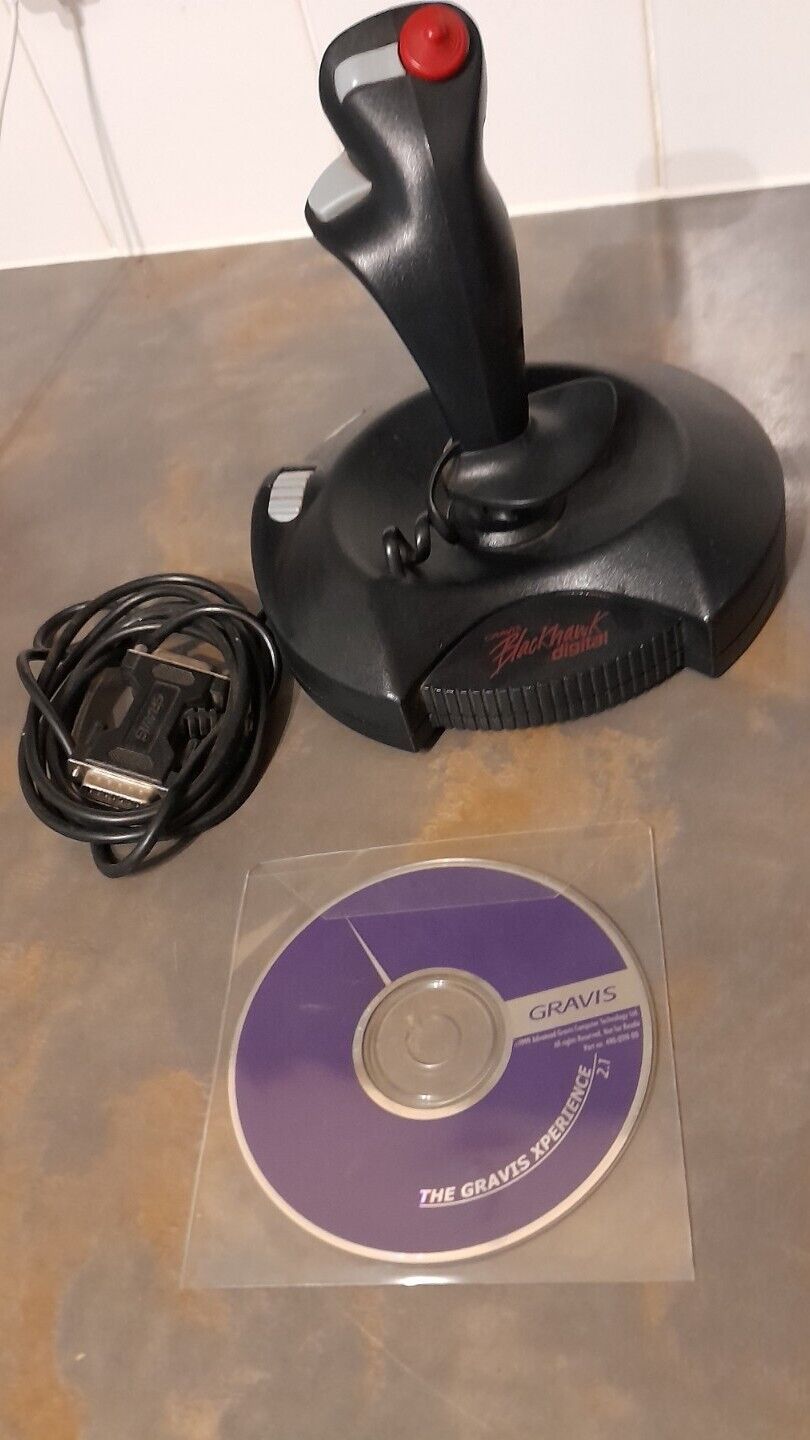 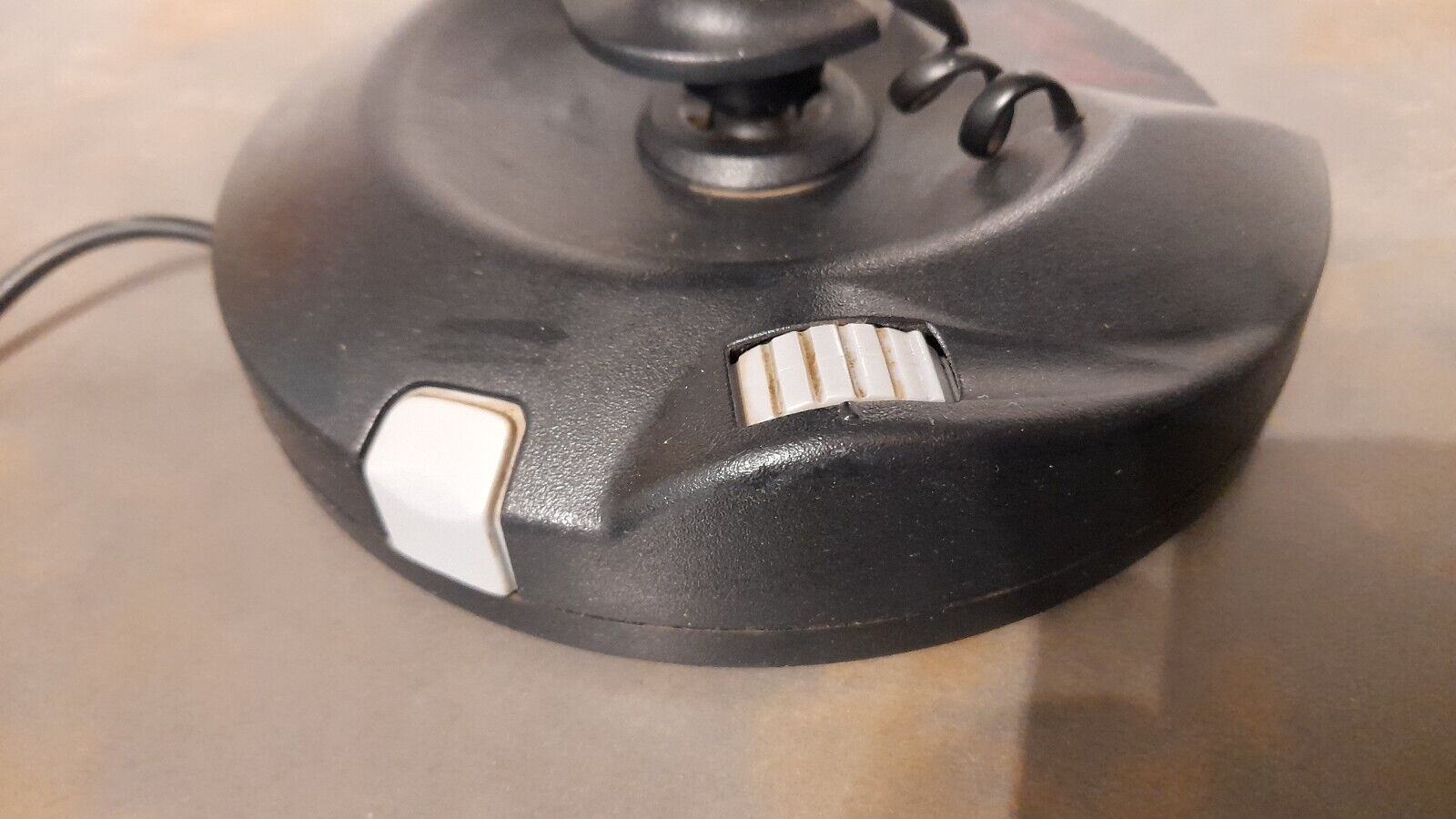 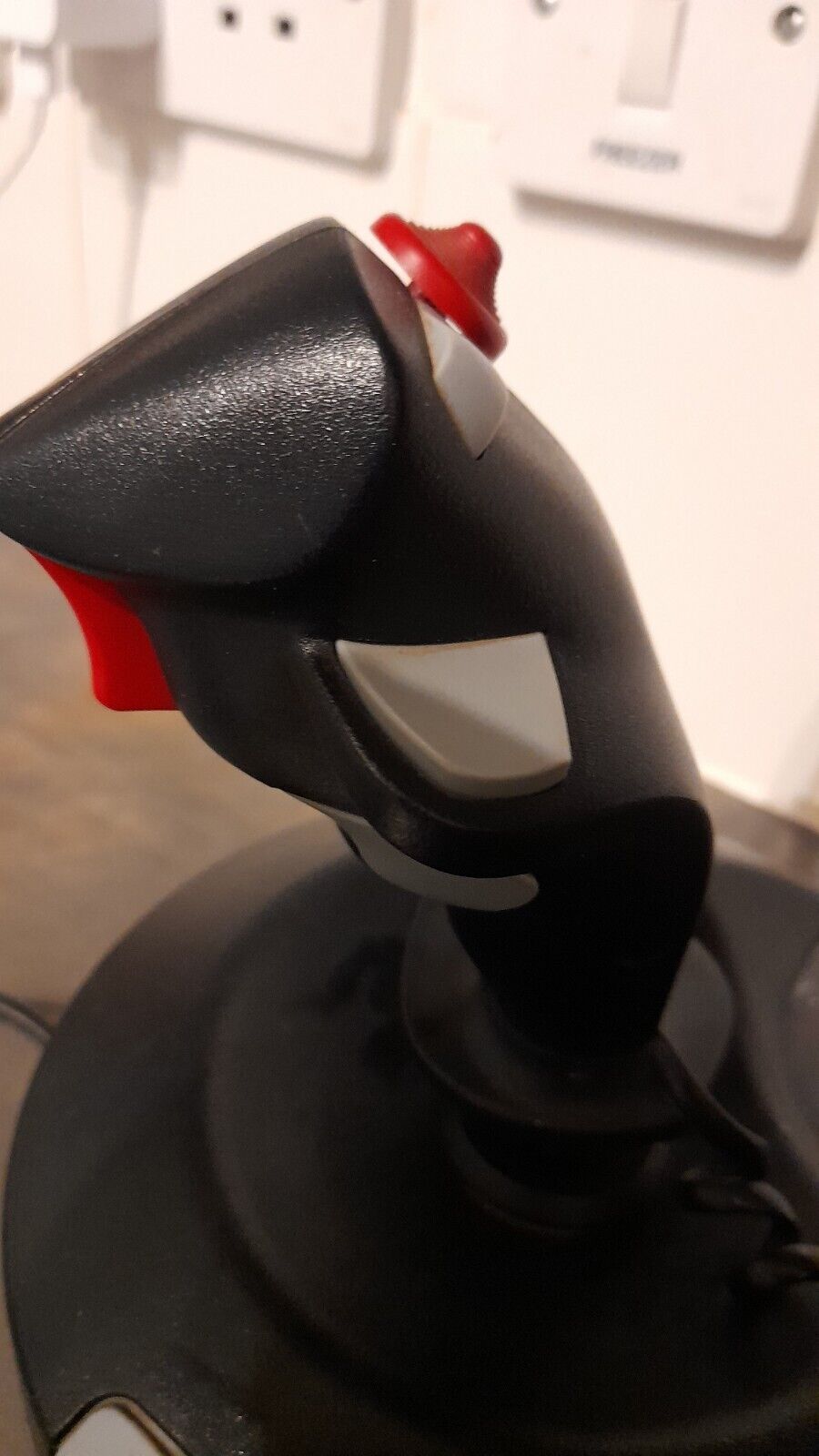 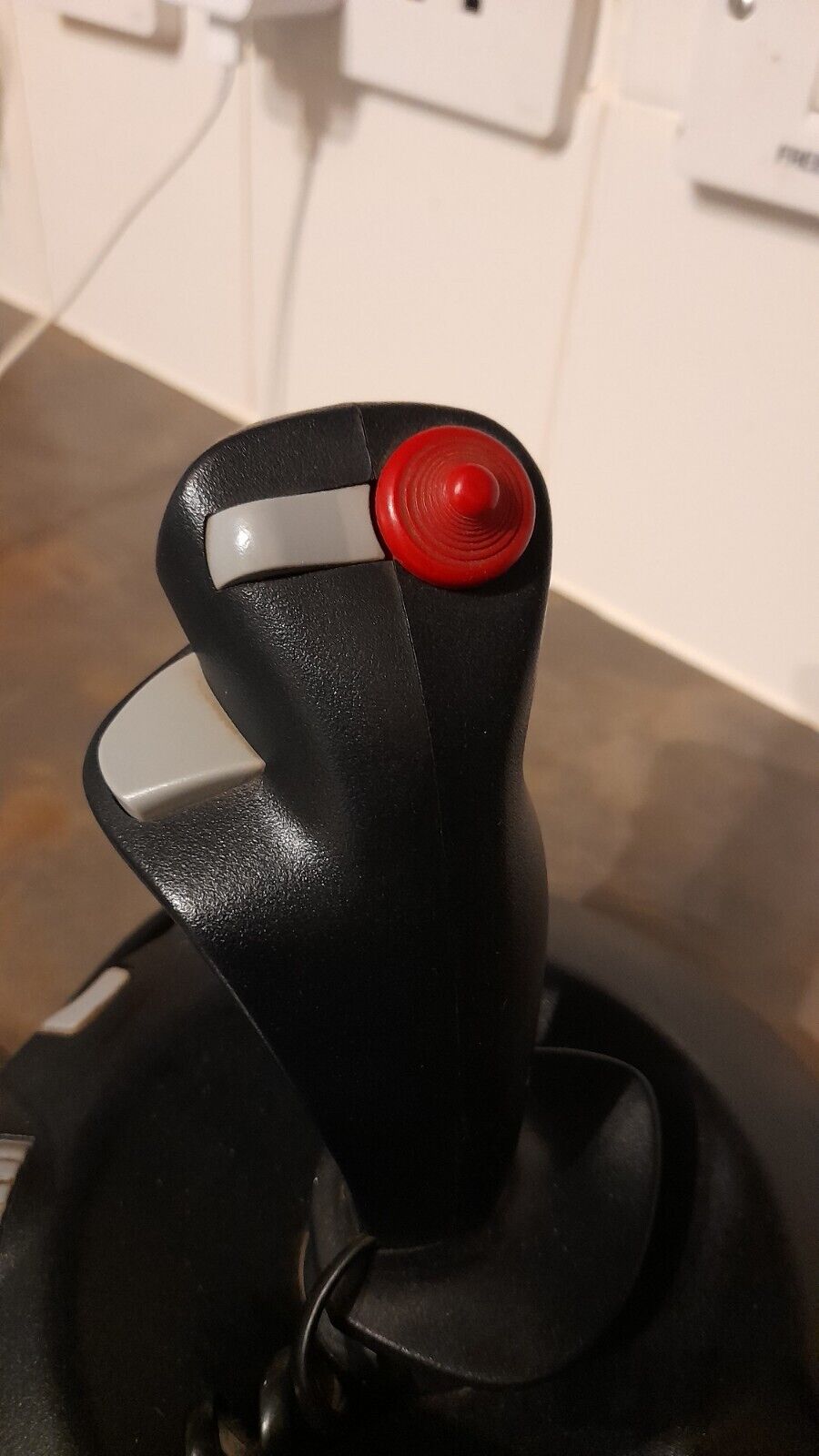 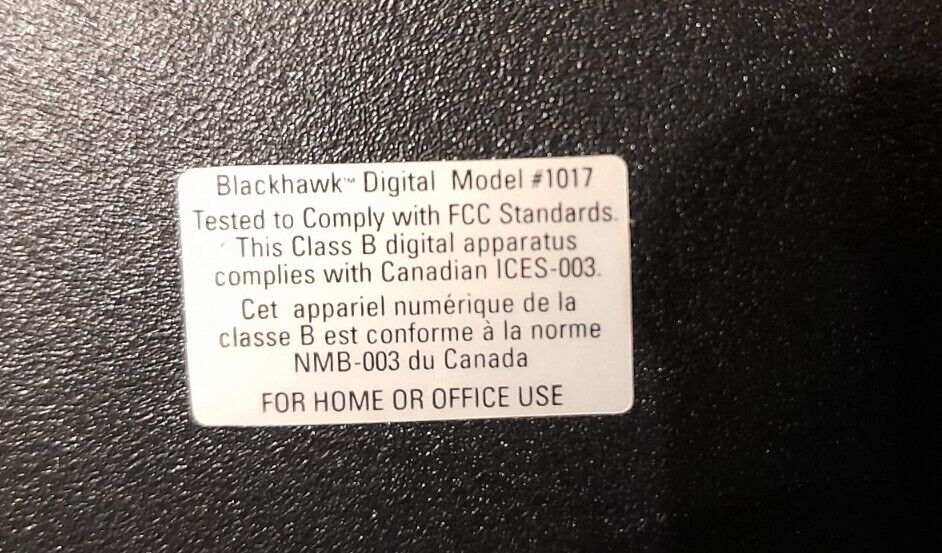 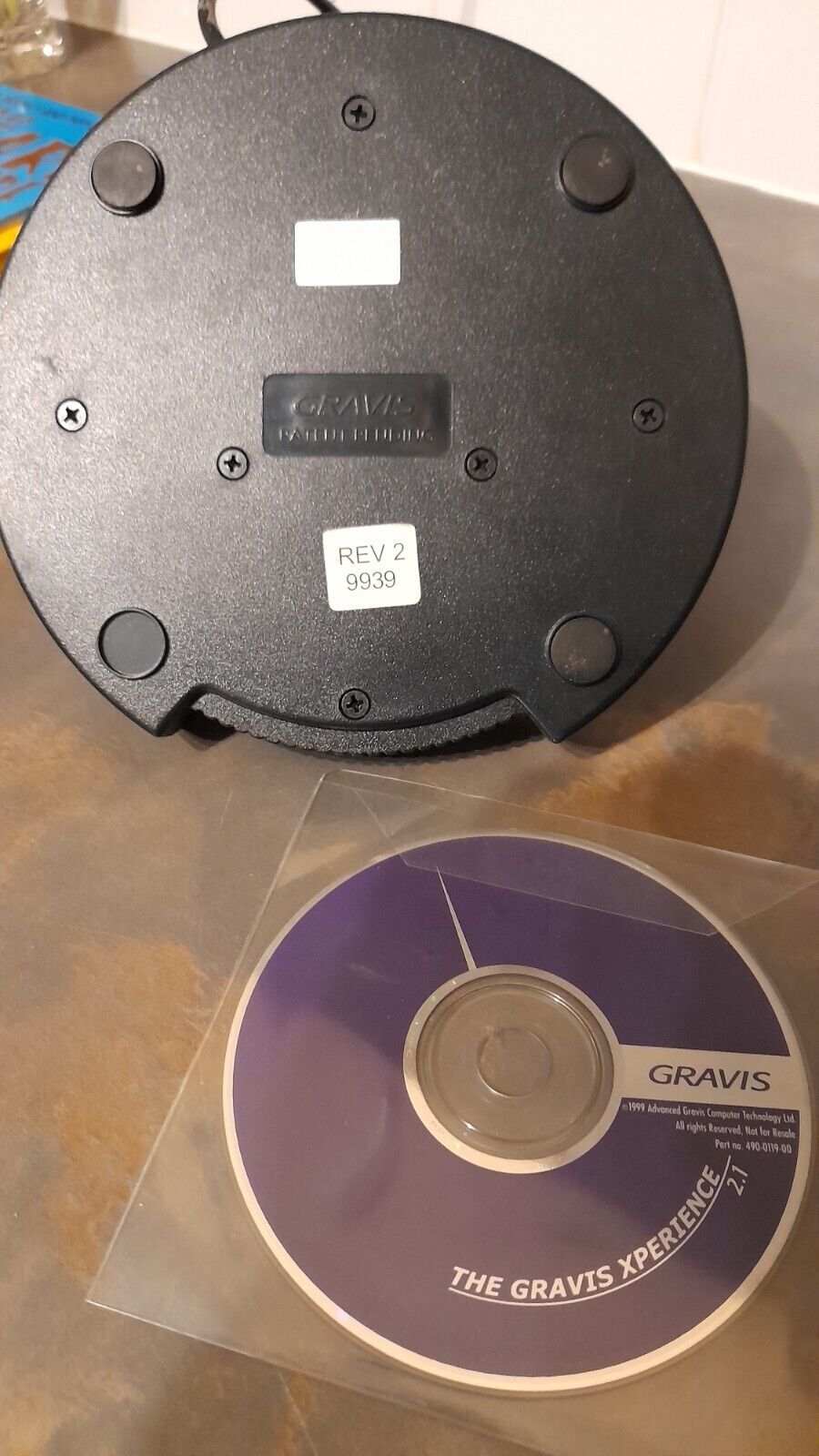 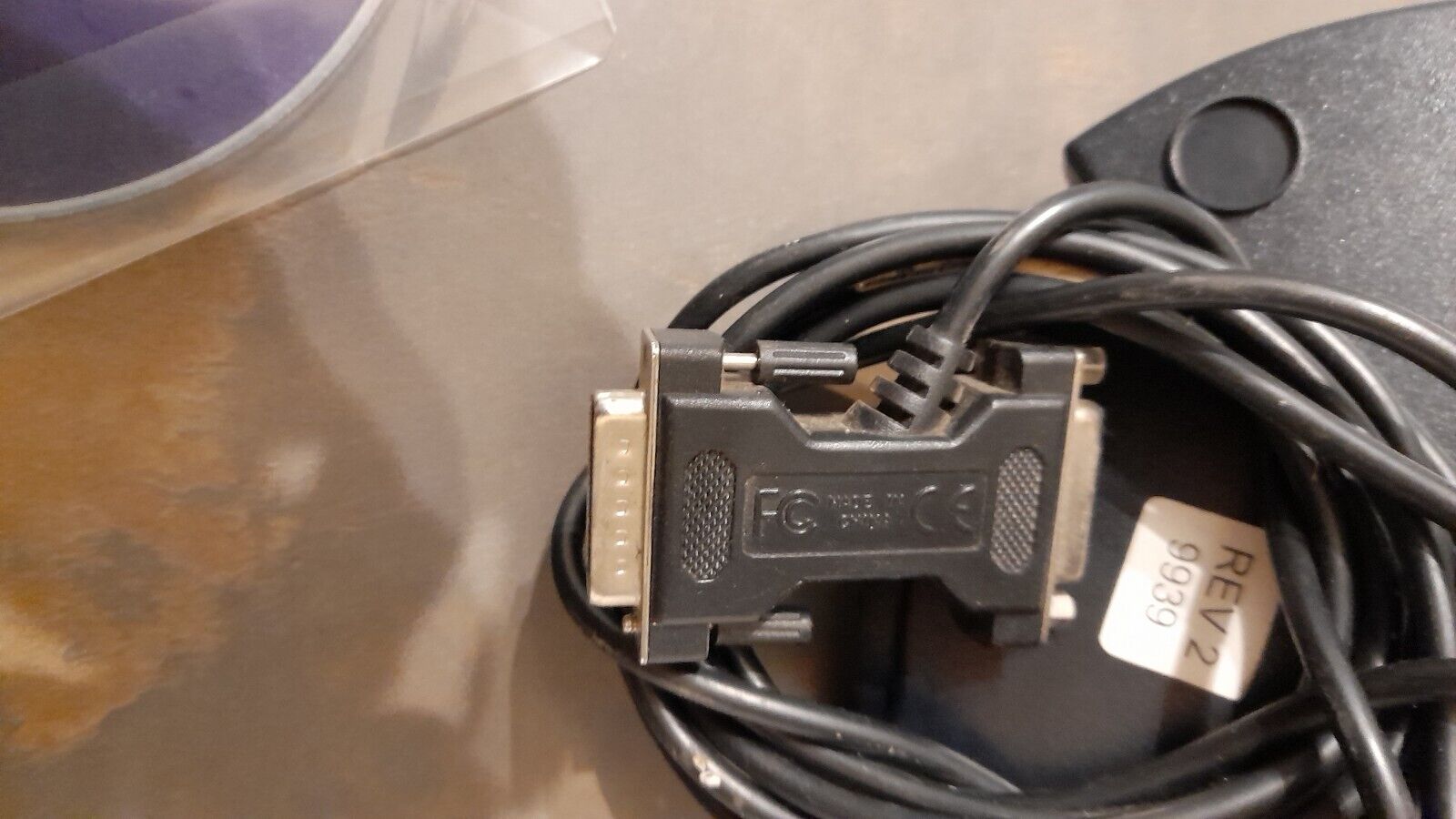 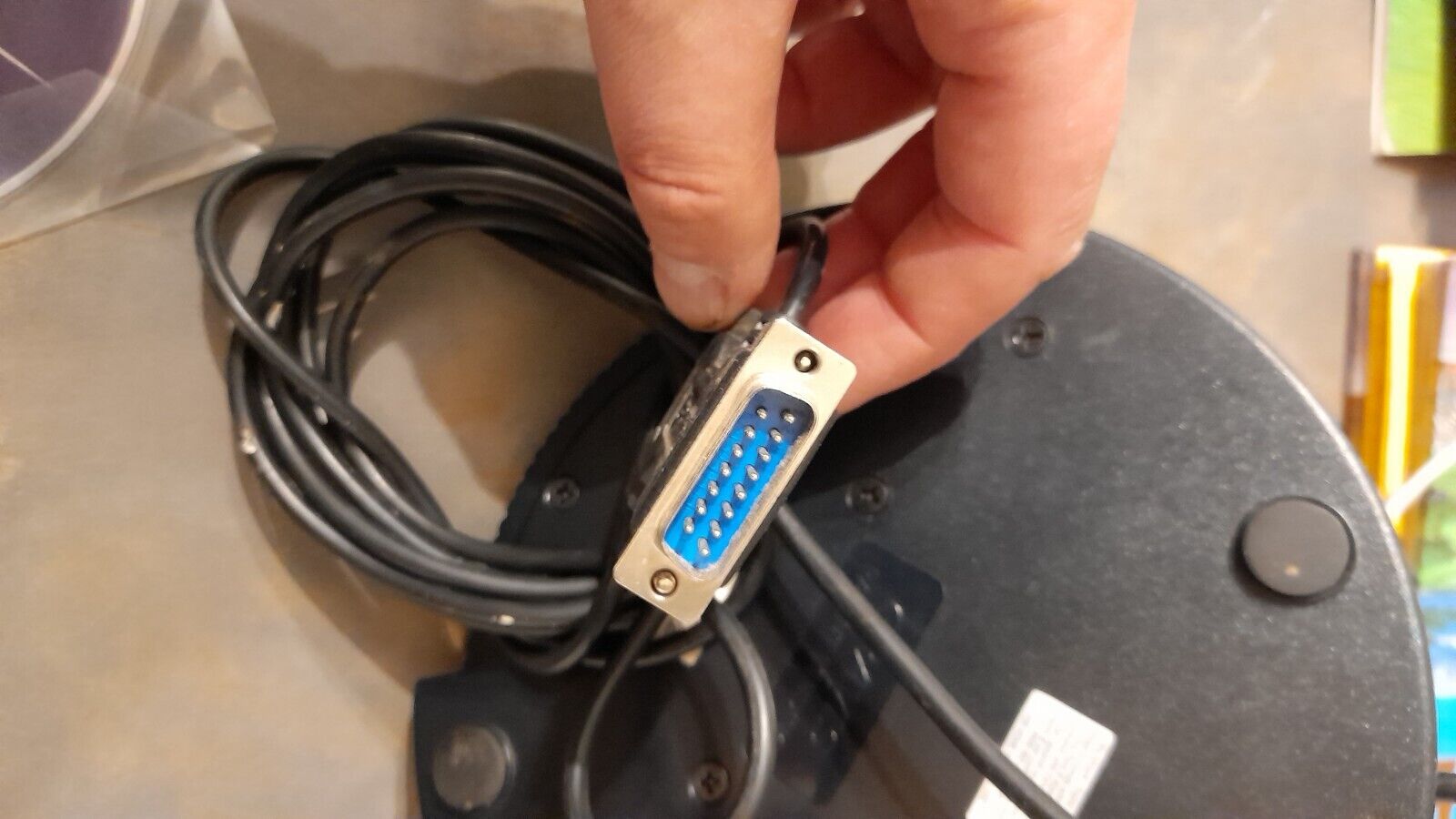 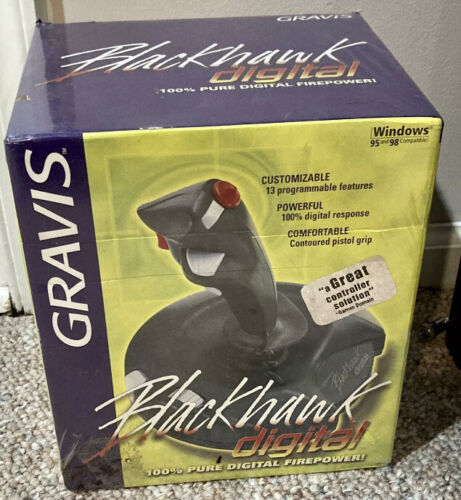 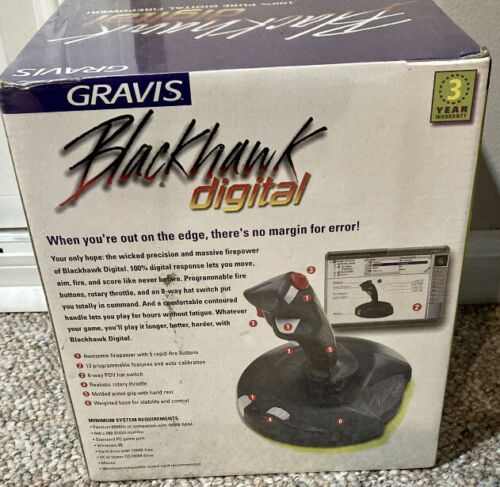
|
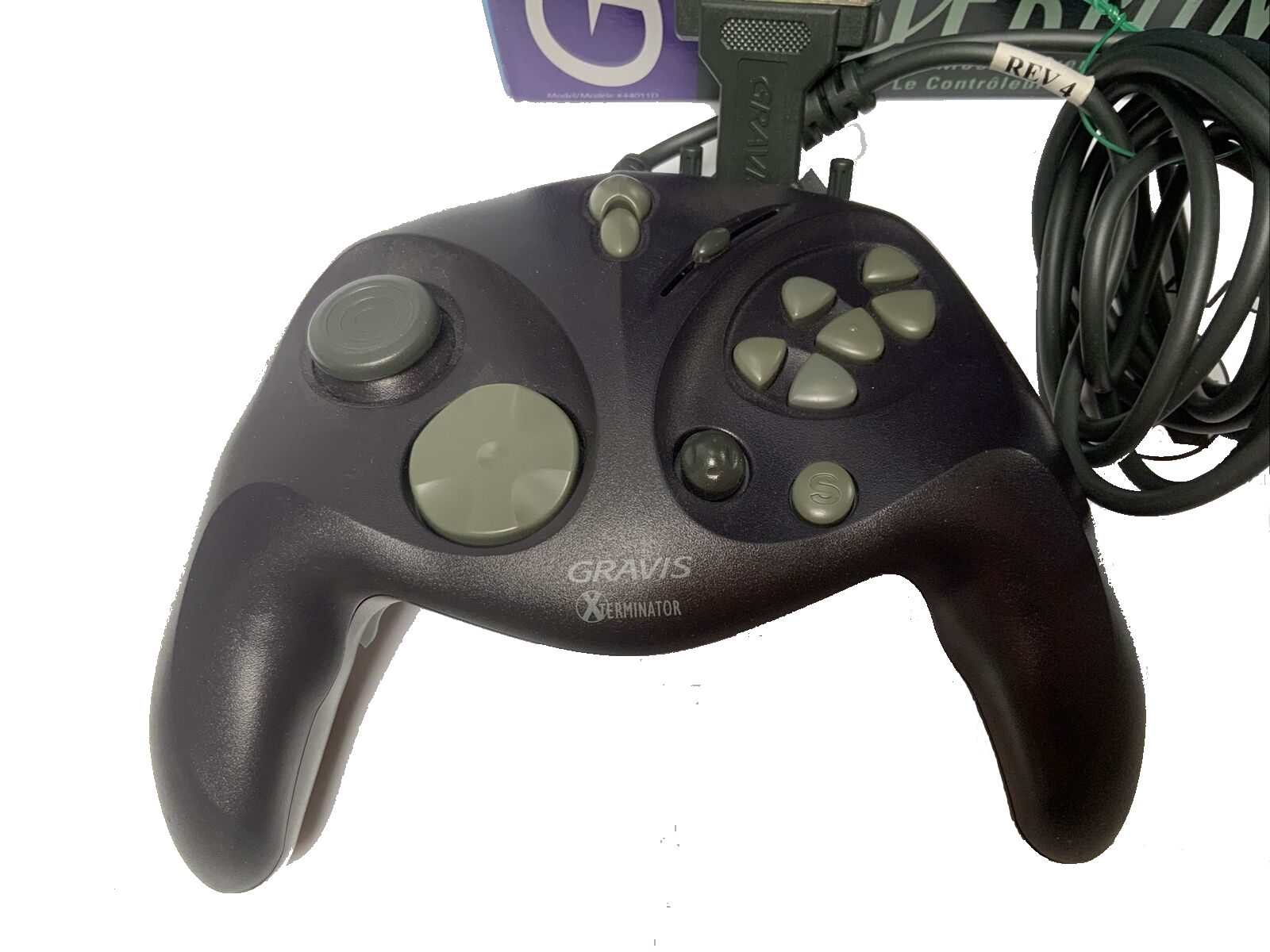 Xterminator Xterminator
Launched: 199x?
Interface: 15-pin analogue
Number of Axis: 2
Number of Buttons: 10
More Images
 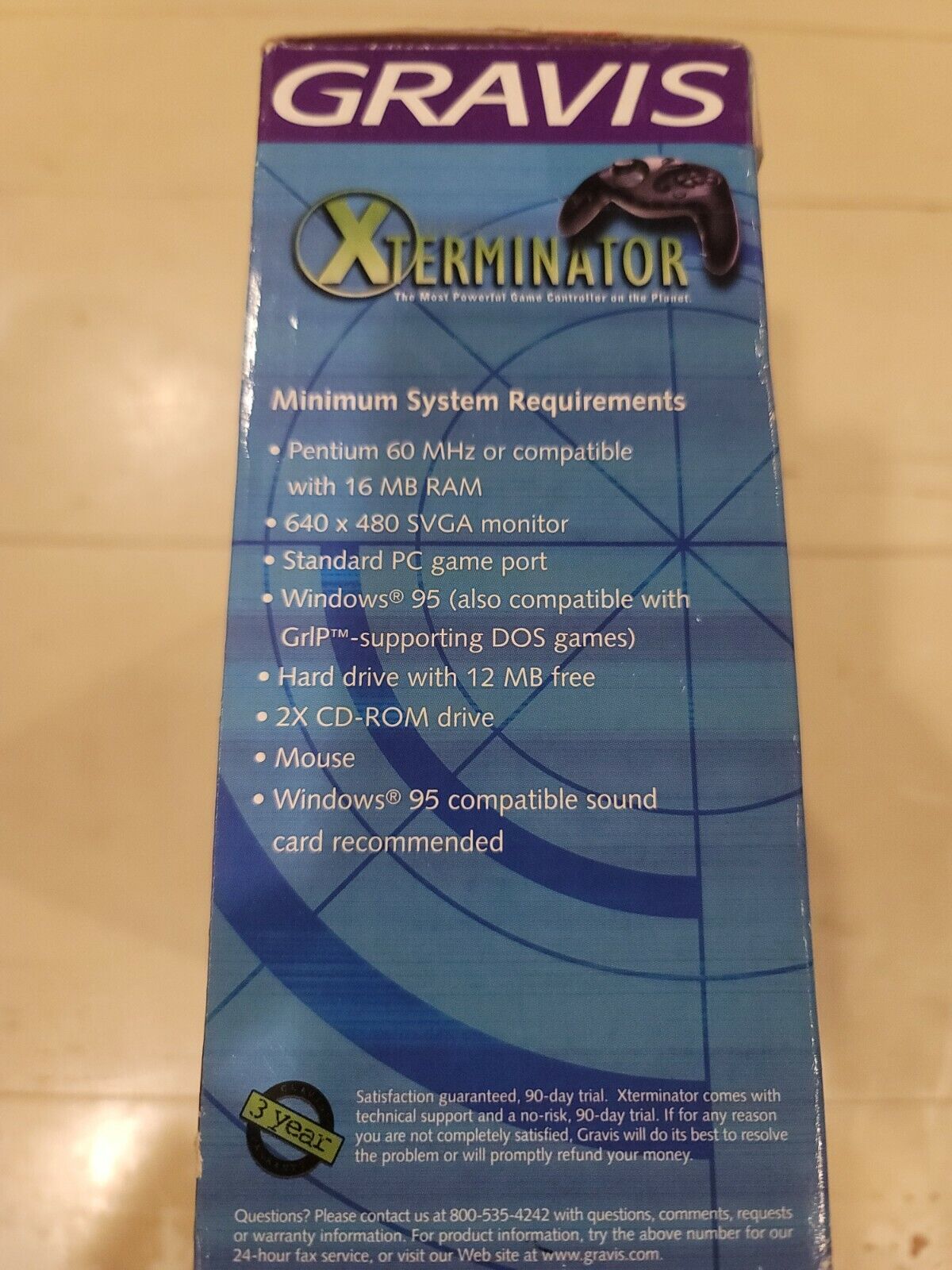 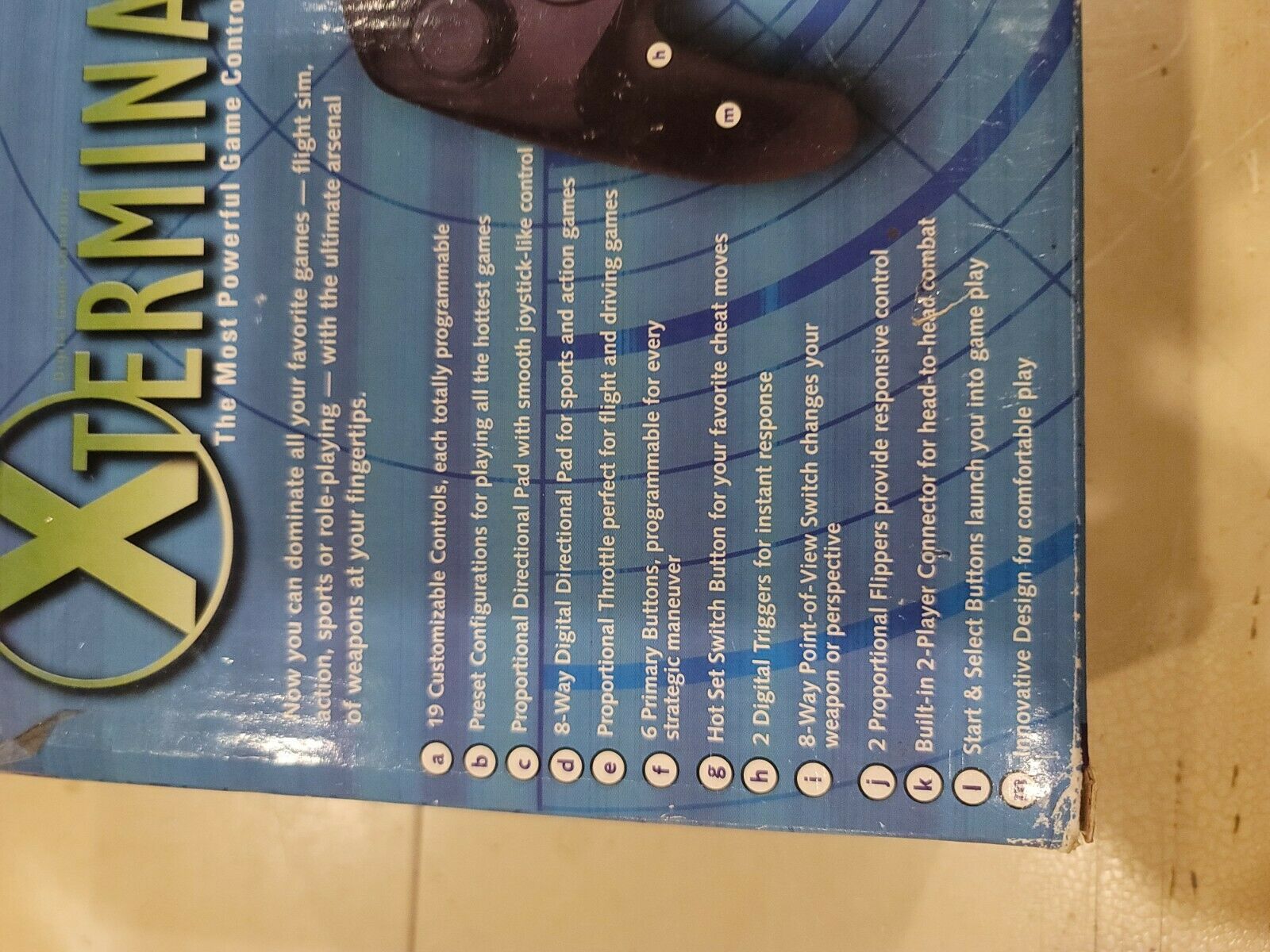 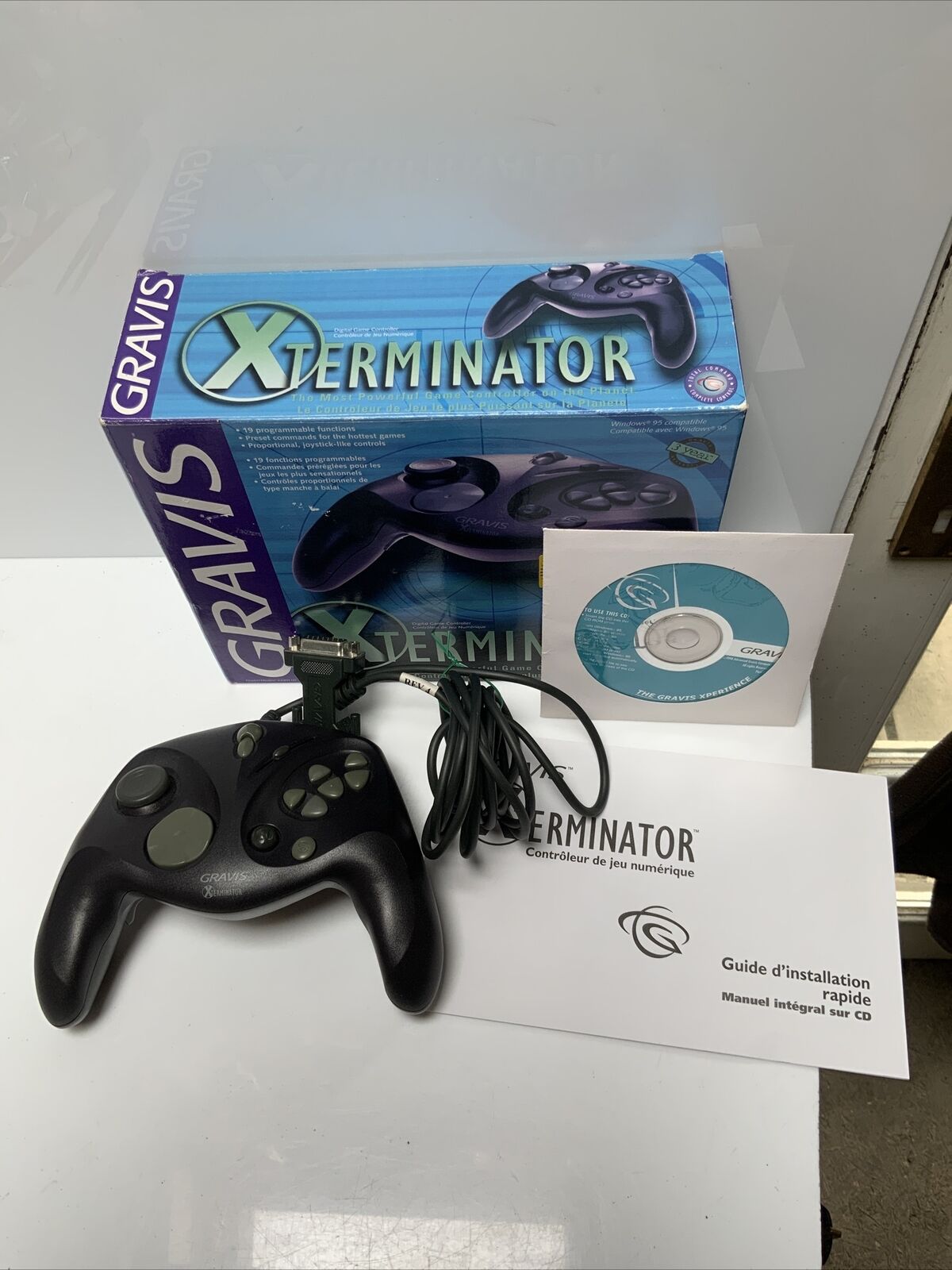 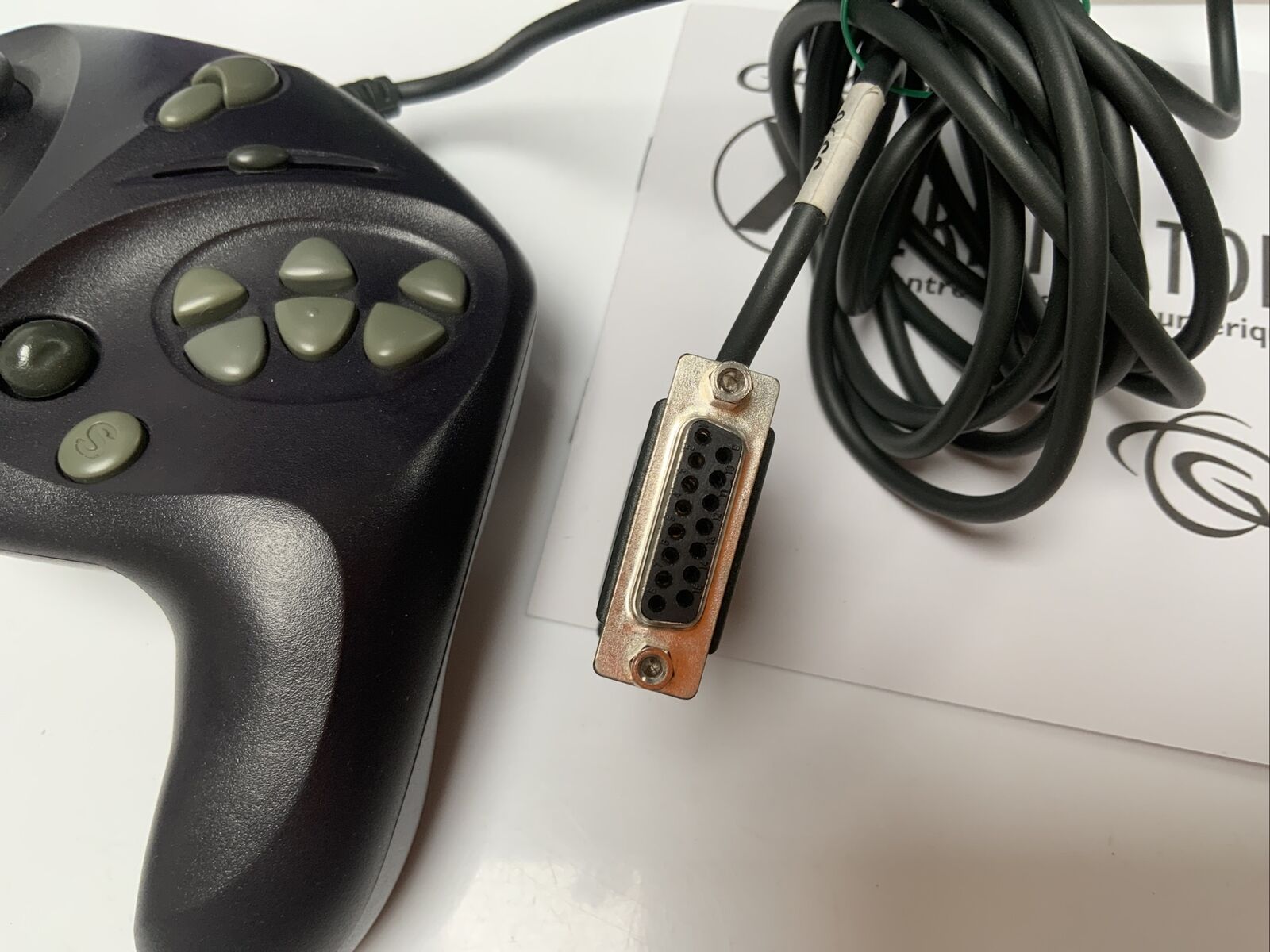 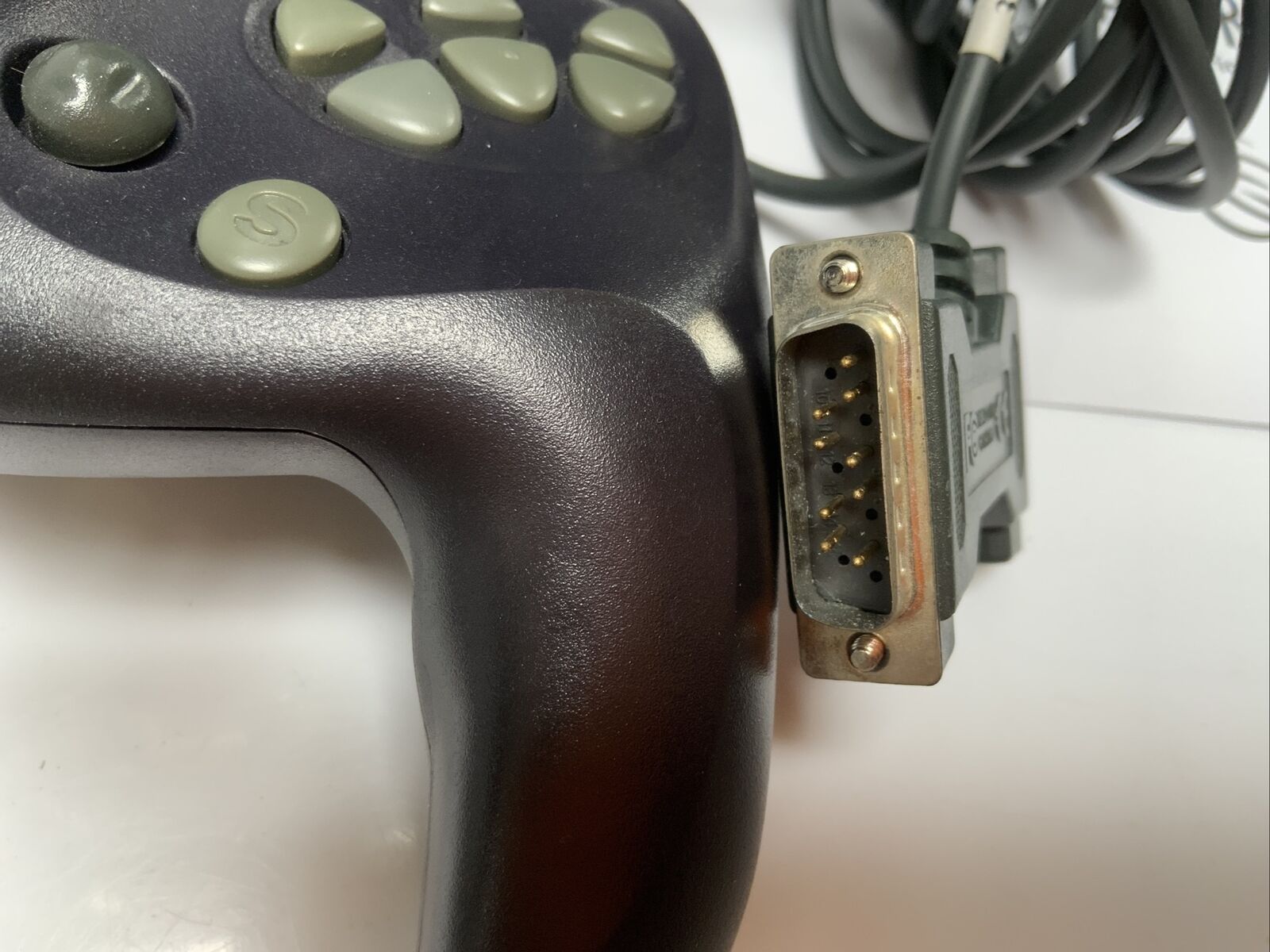  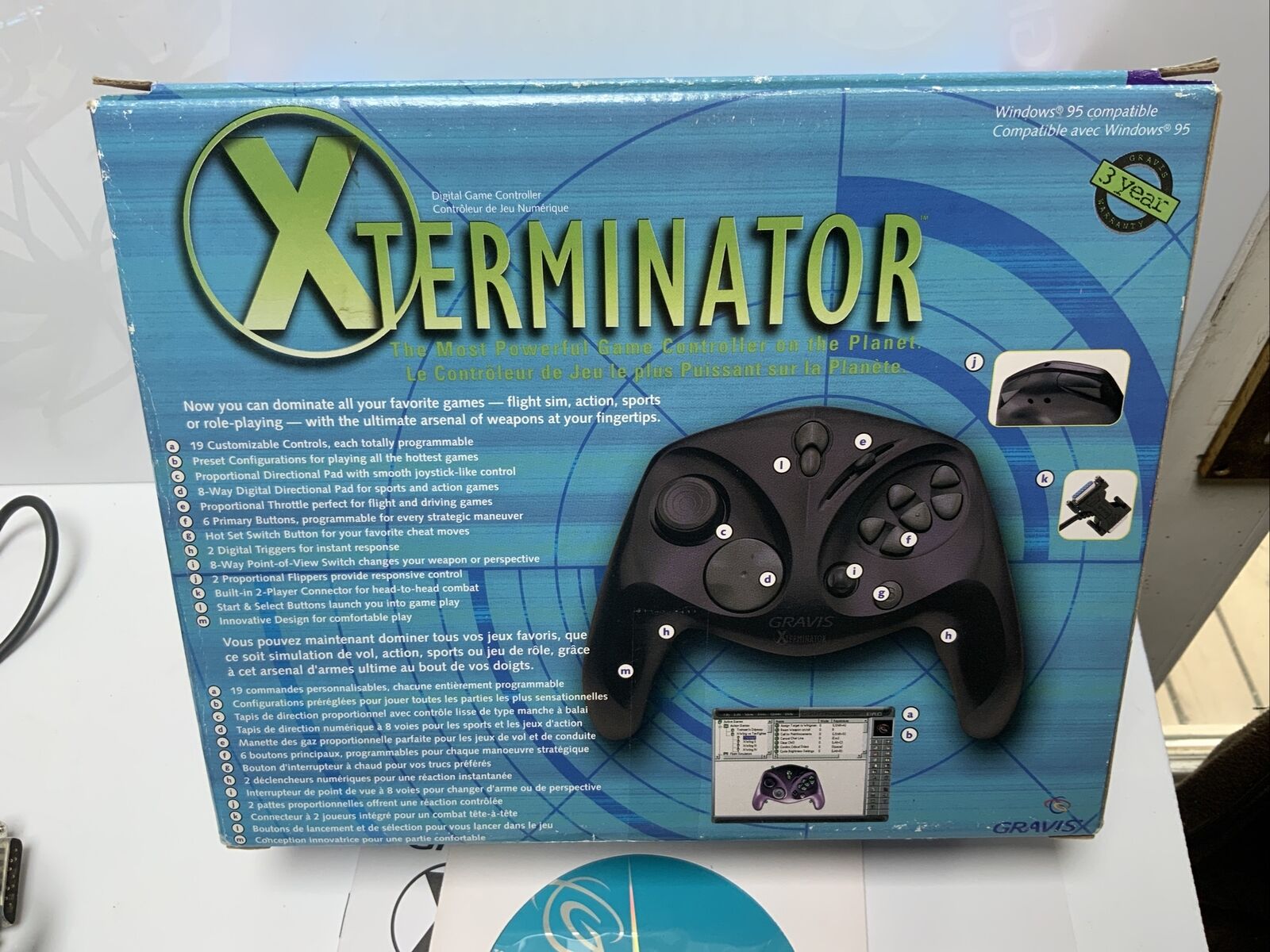 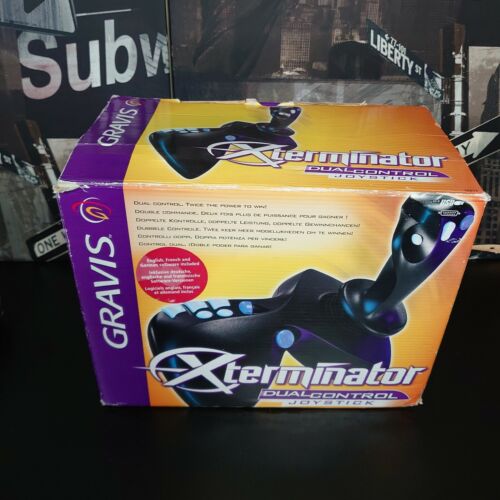 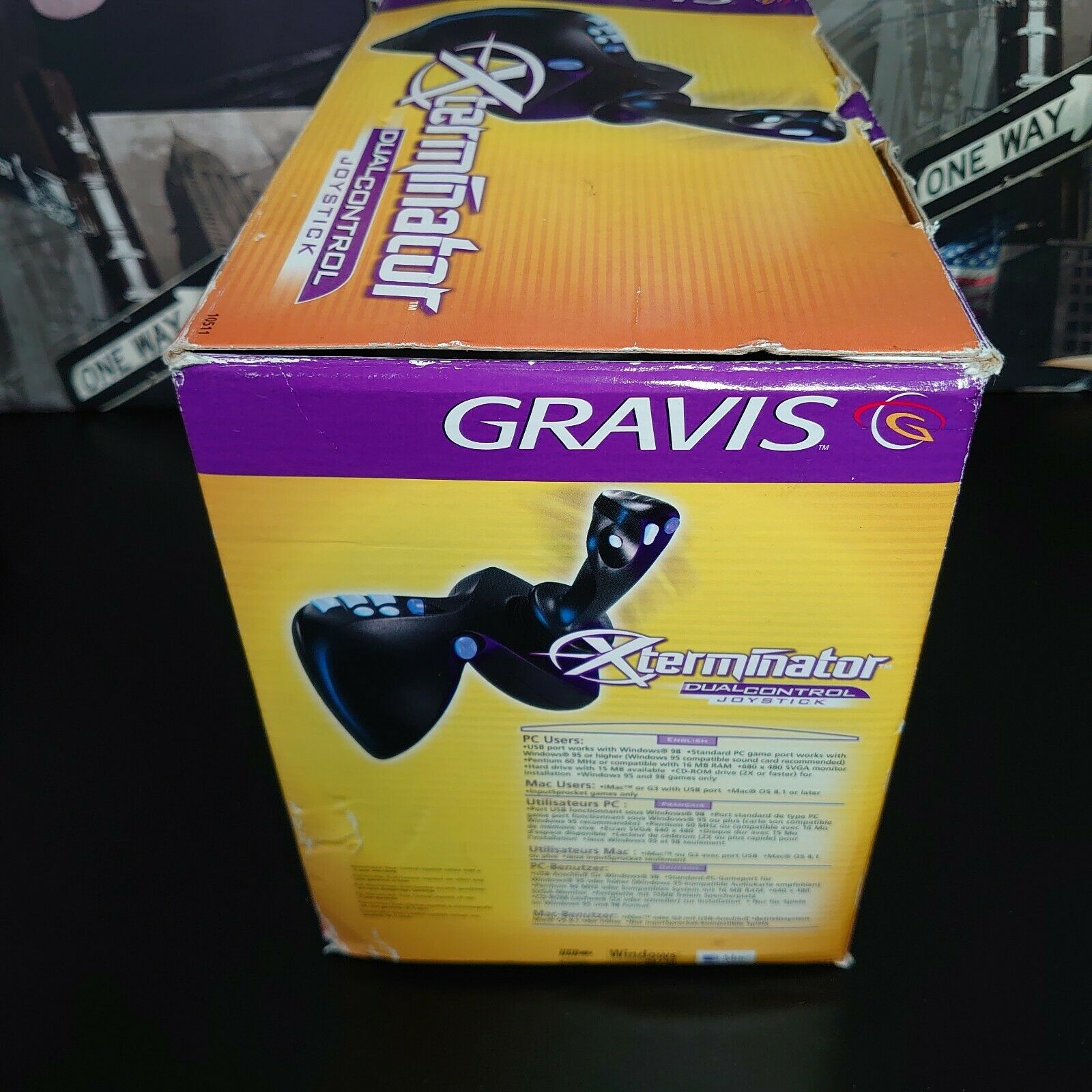 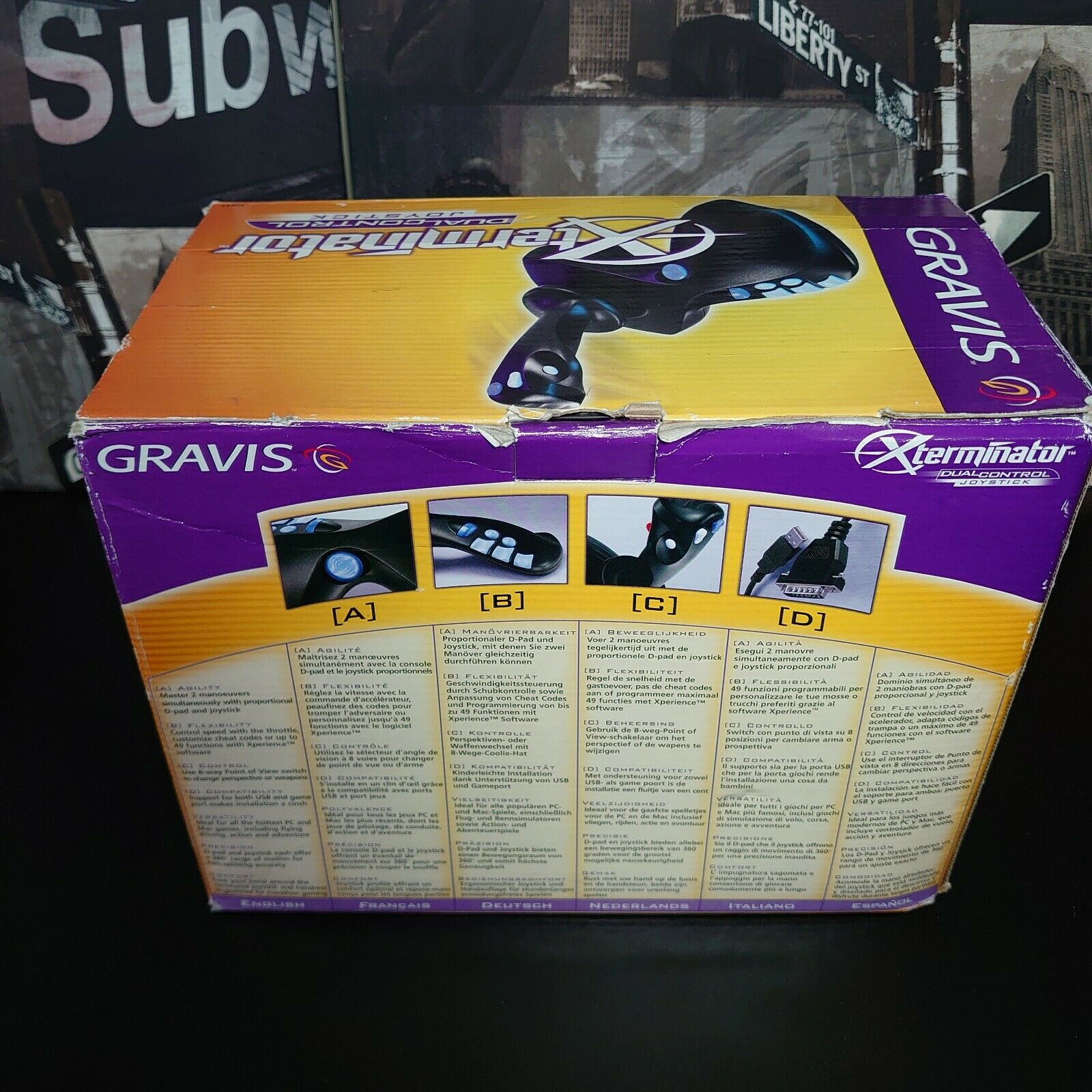 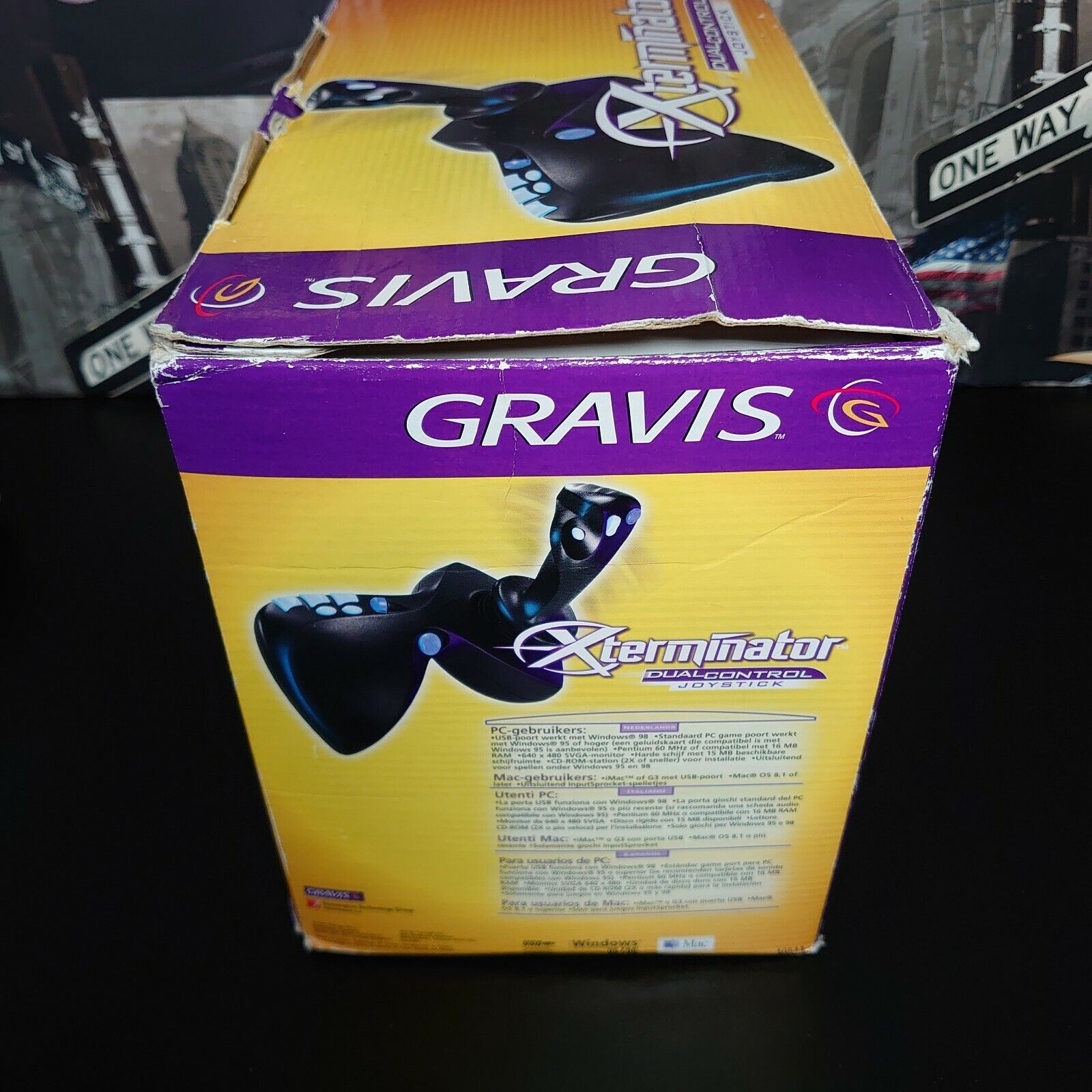 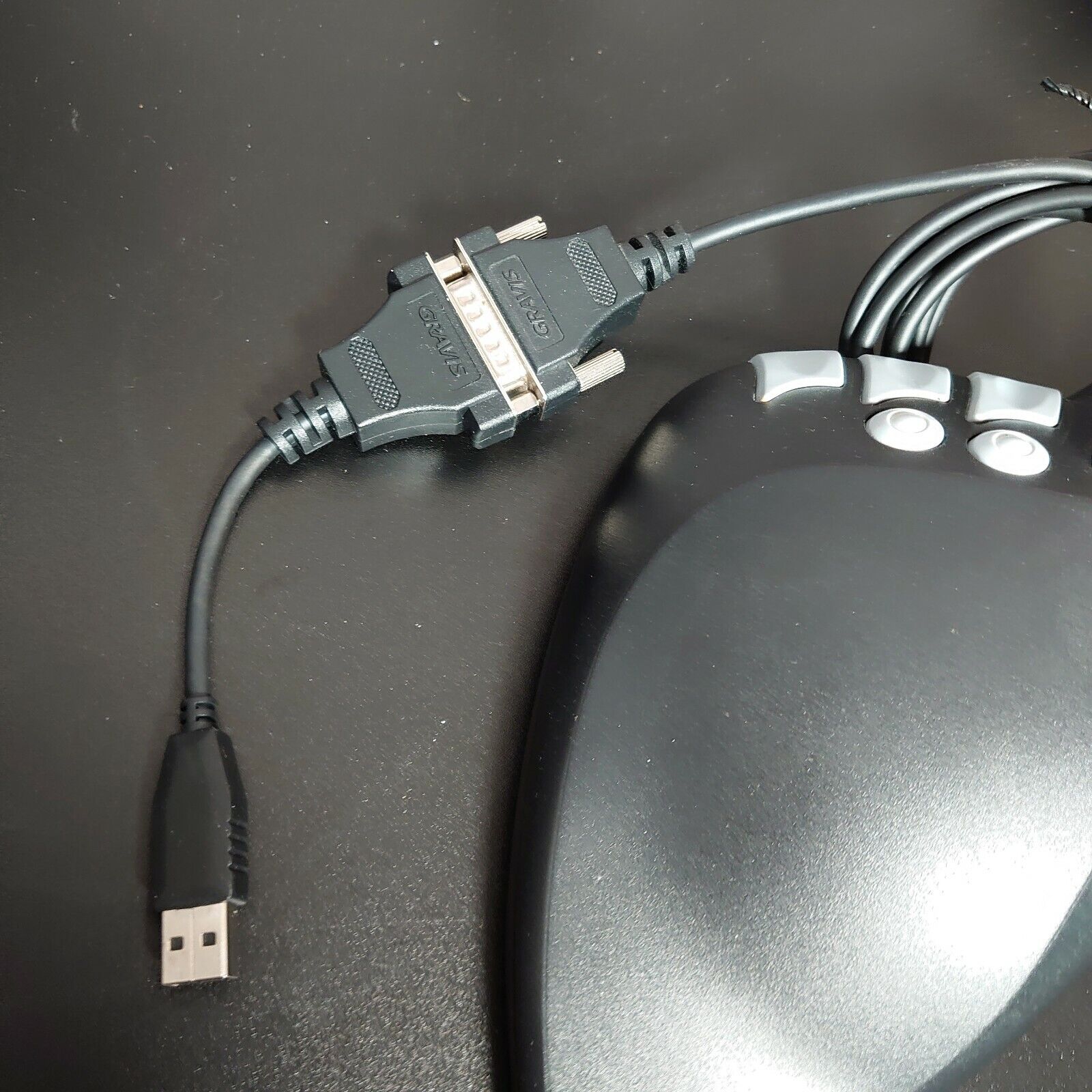 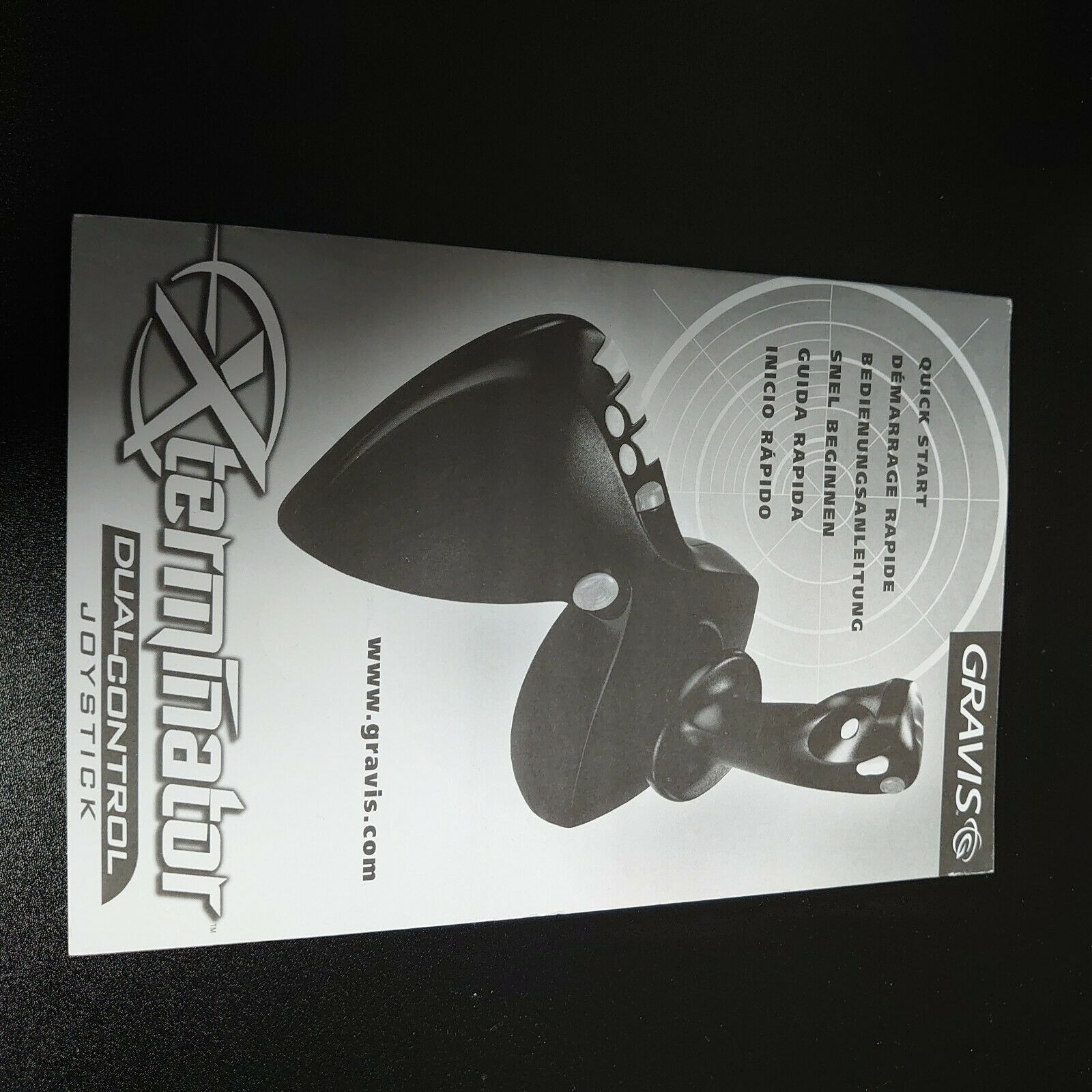
|
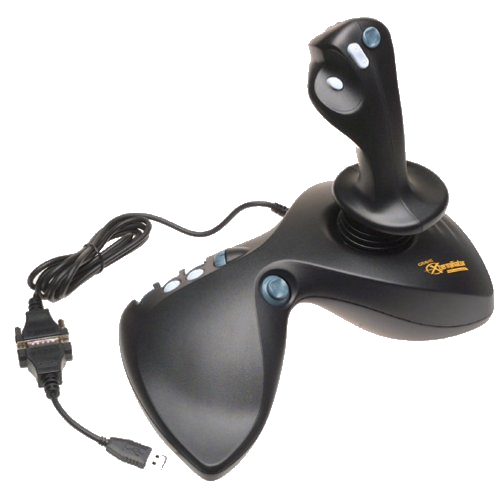 Xterminator Dual Control Xterminator Dual Control
Launched: 2000?
Interface: USB
Number of Axis: 3
Number of Buttons: 10
More Images
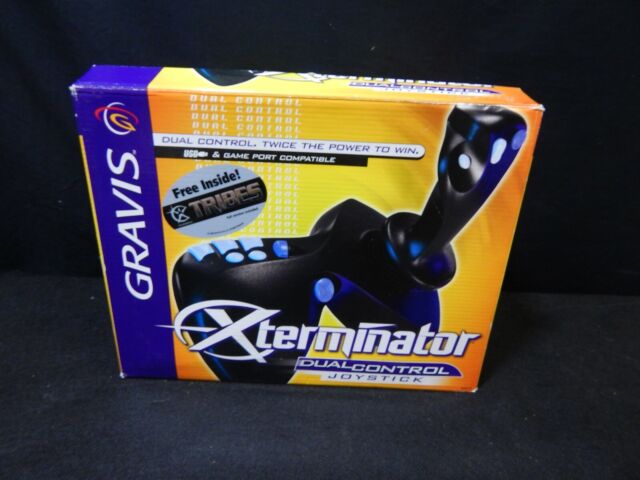 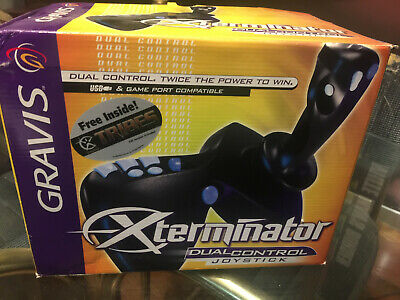 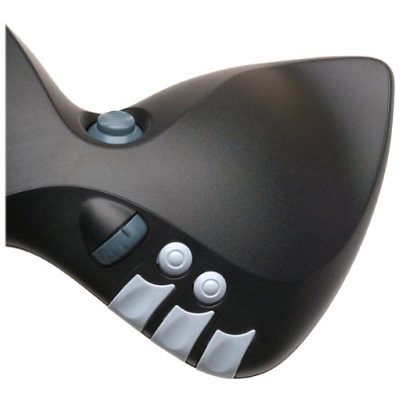 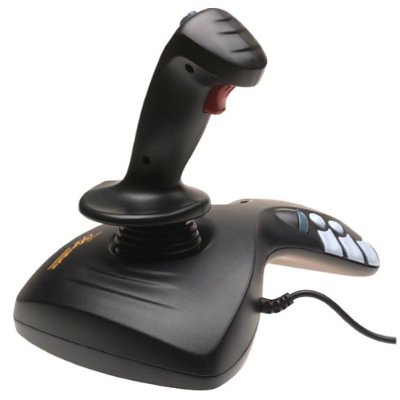
|
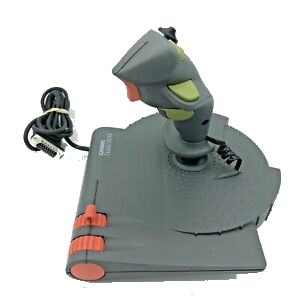 Thunderbird Thunderbird
Launched: 199x?
Interface: 15-pin analogue
Number of Axis: 2
Number of Buttons: 4
More Images
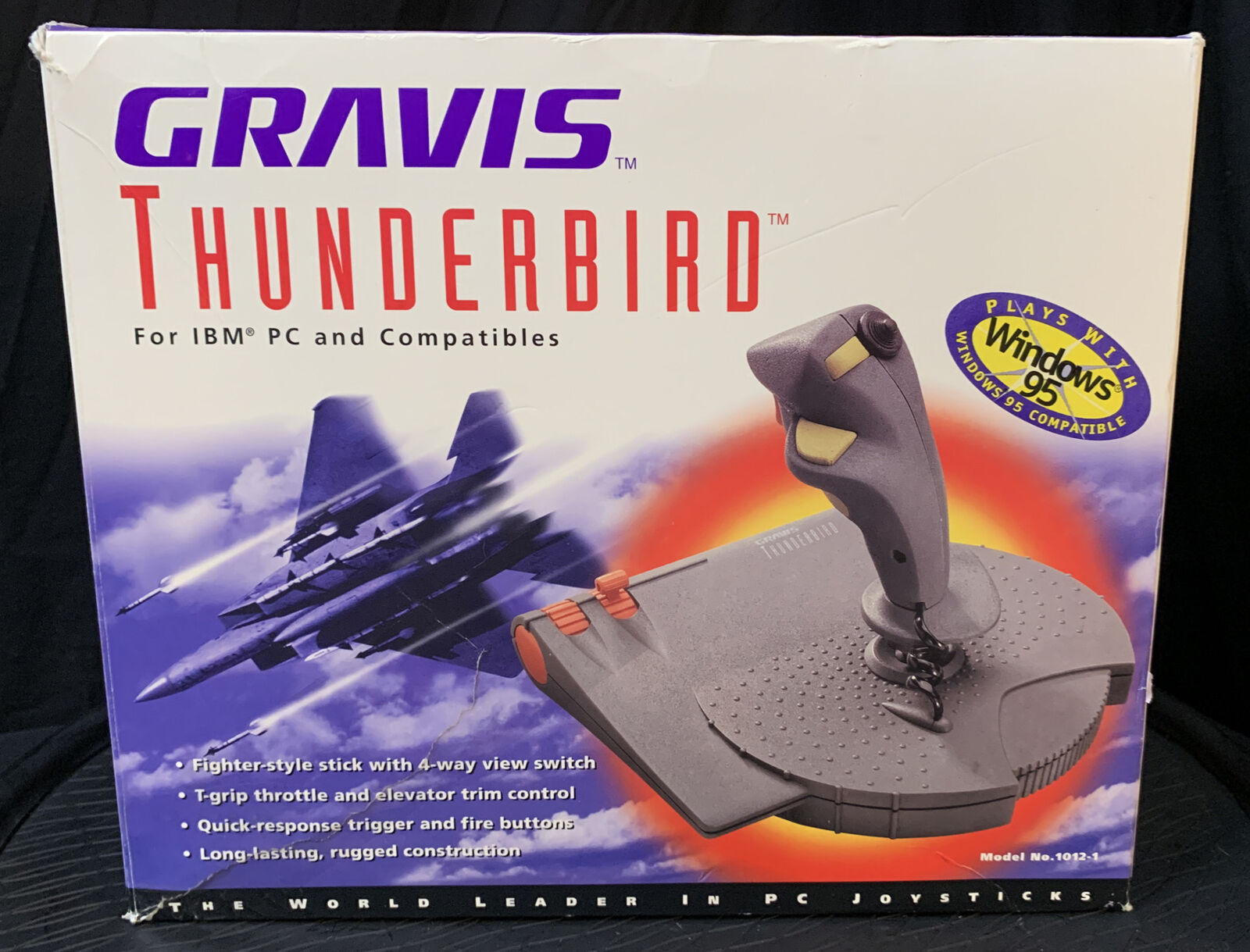 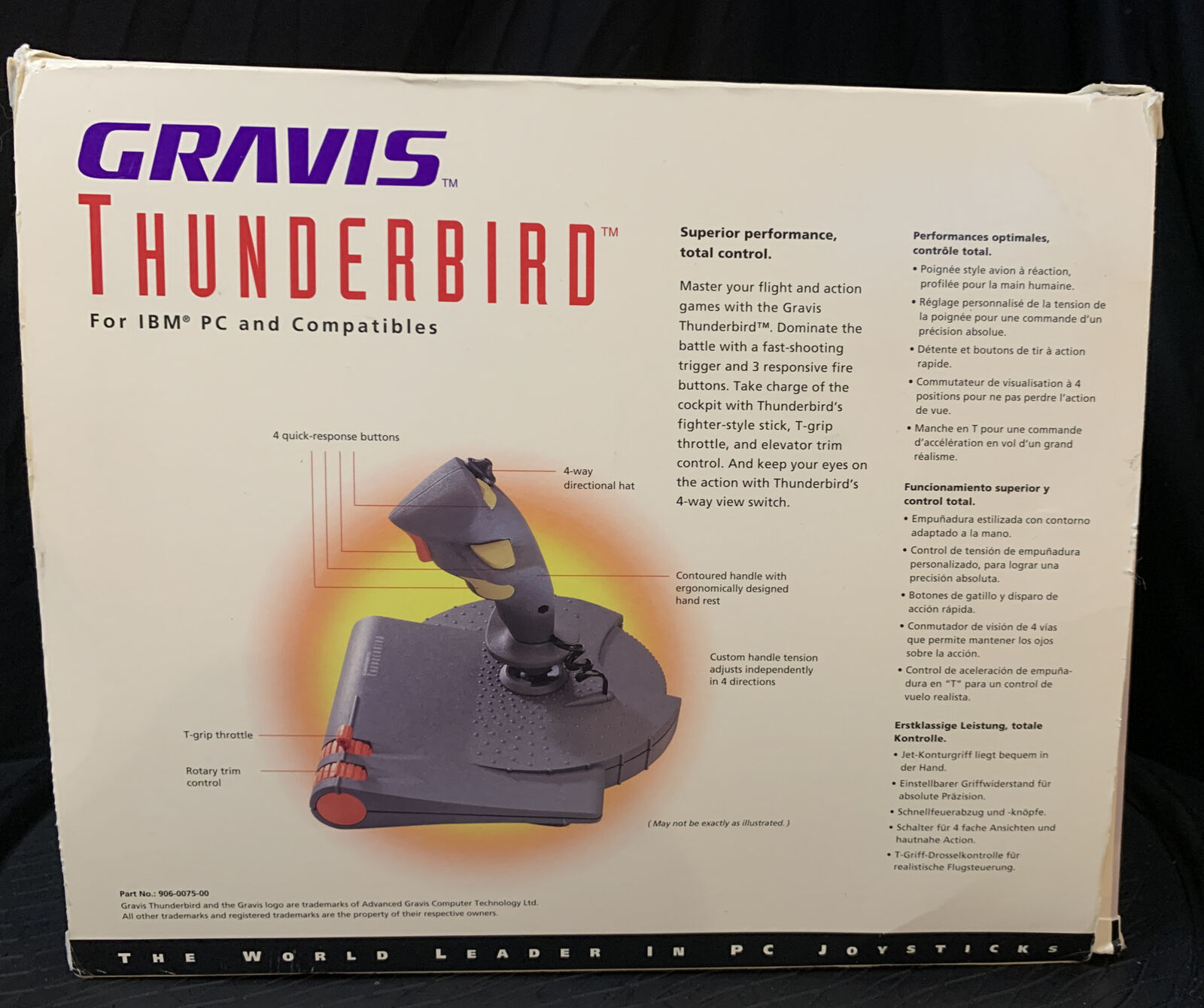 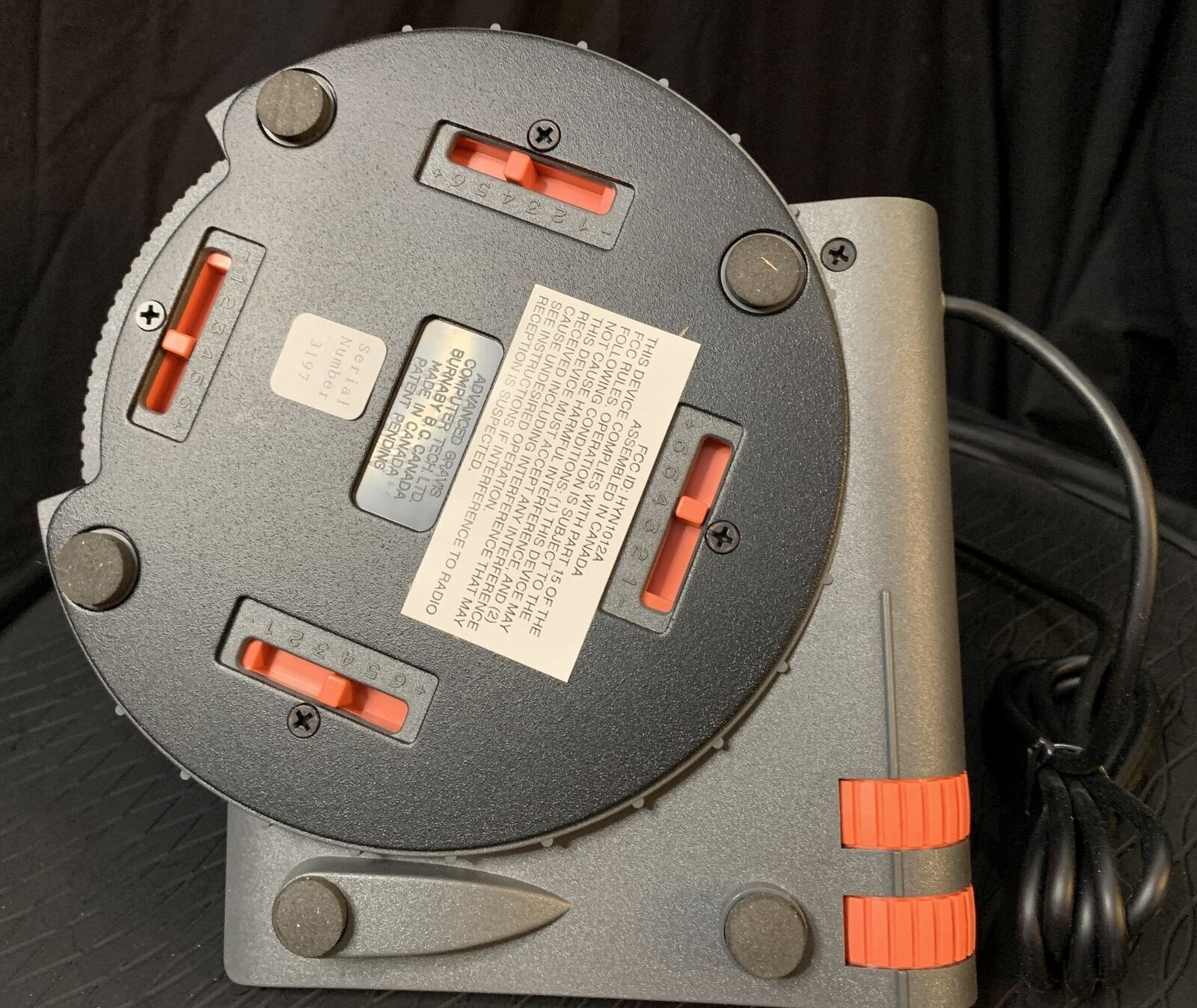 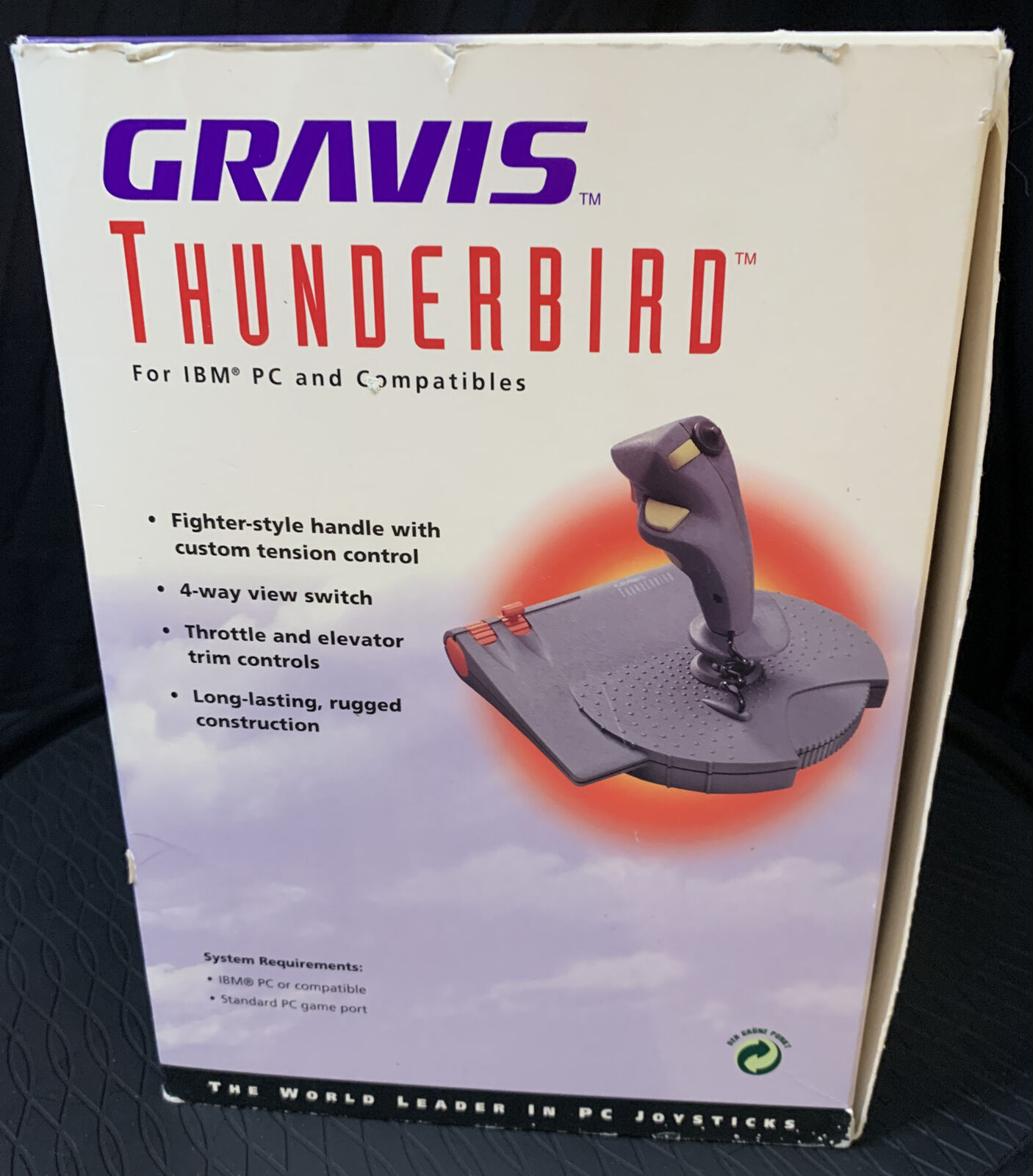 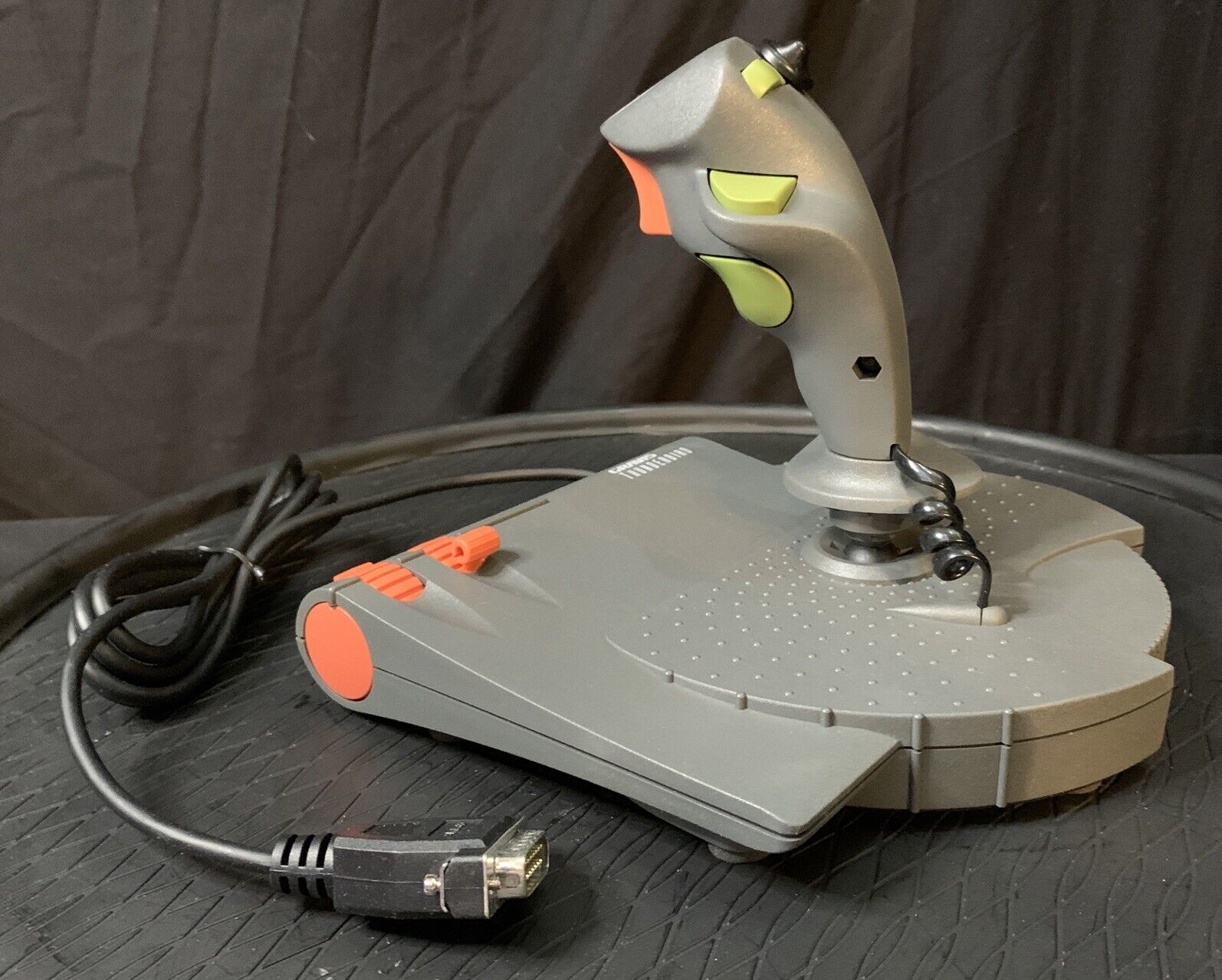 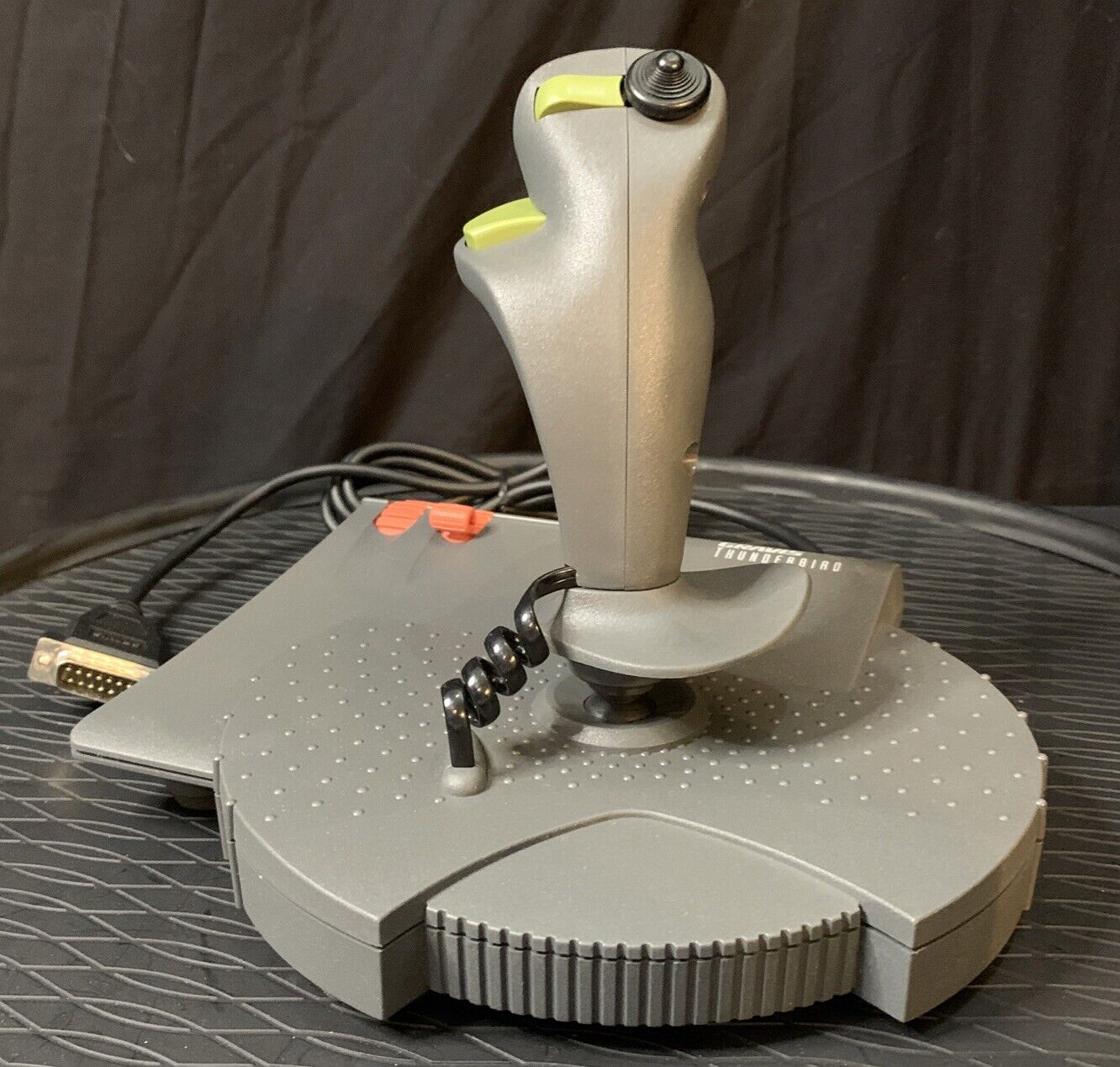 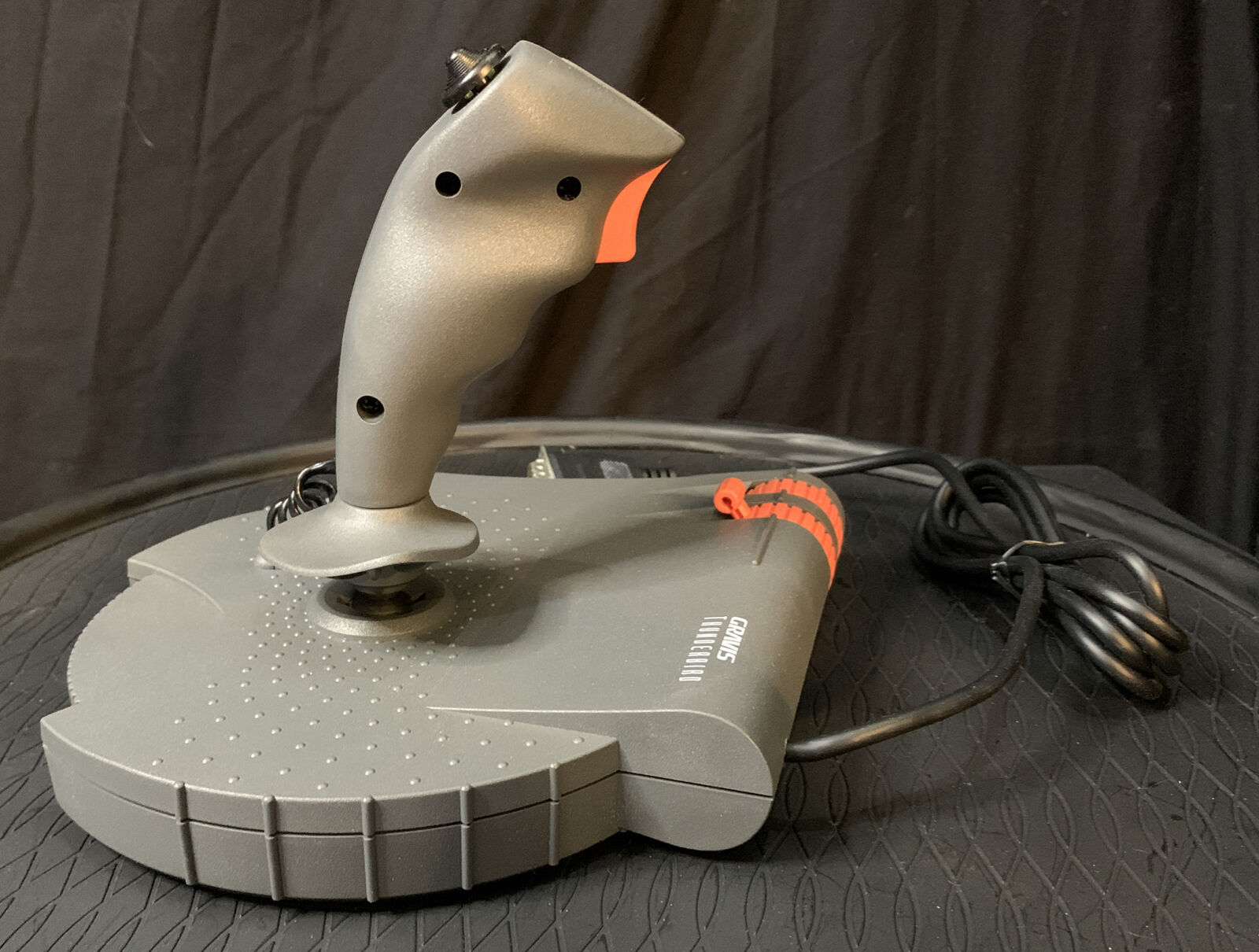 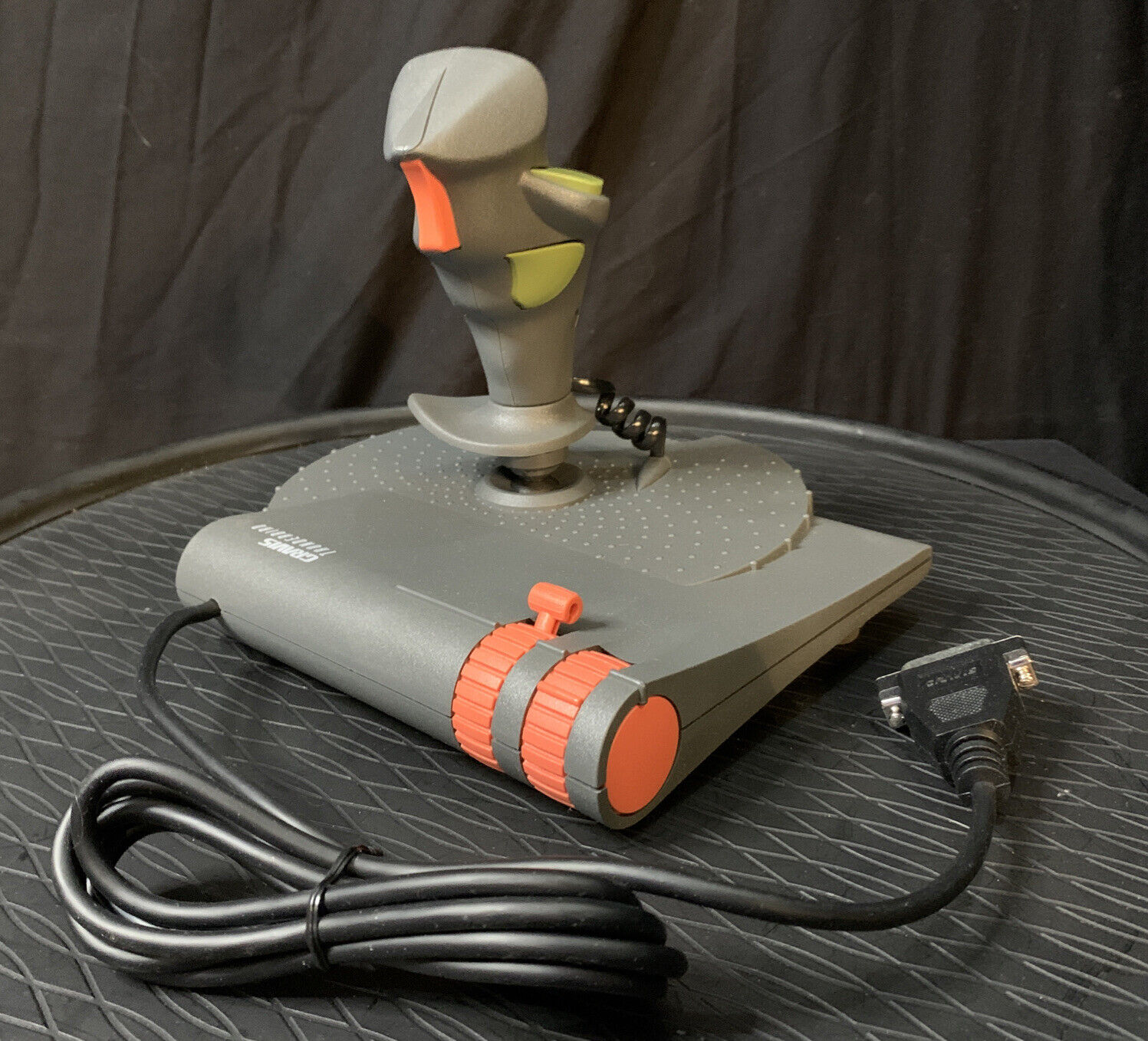
|
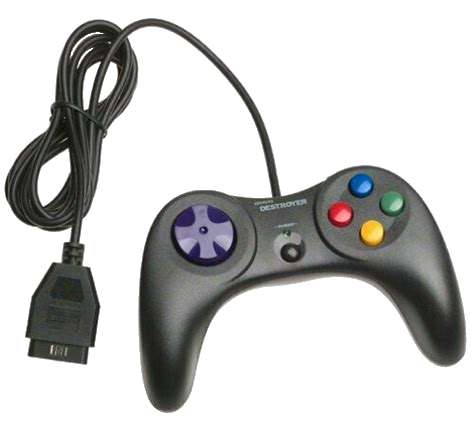 Destroyer Game Pad Destroyer Game Pad
Launched: 199x?
Interface: 15-pin analogue
Number of Axis: 2
Number of Buttons: 4
Price: -
More Images
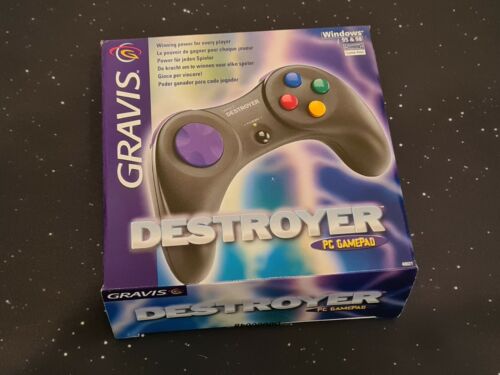 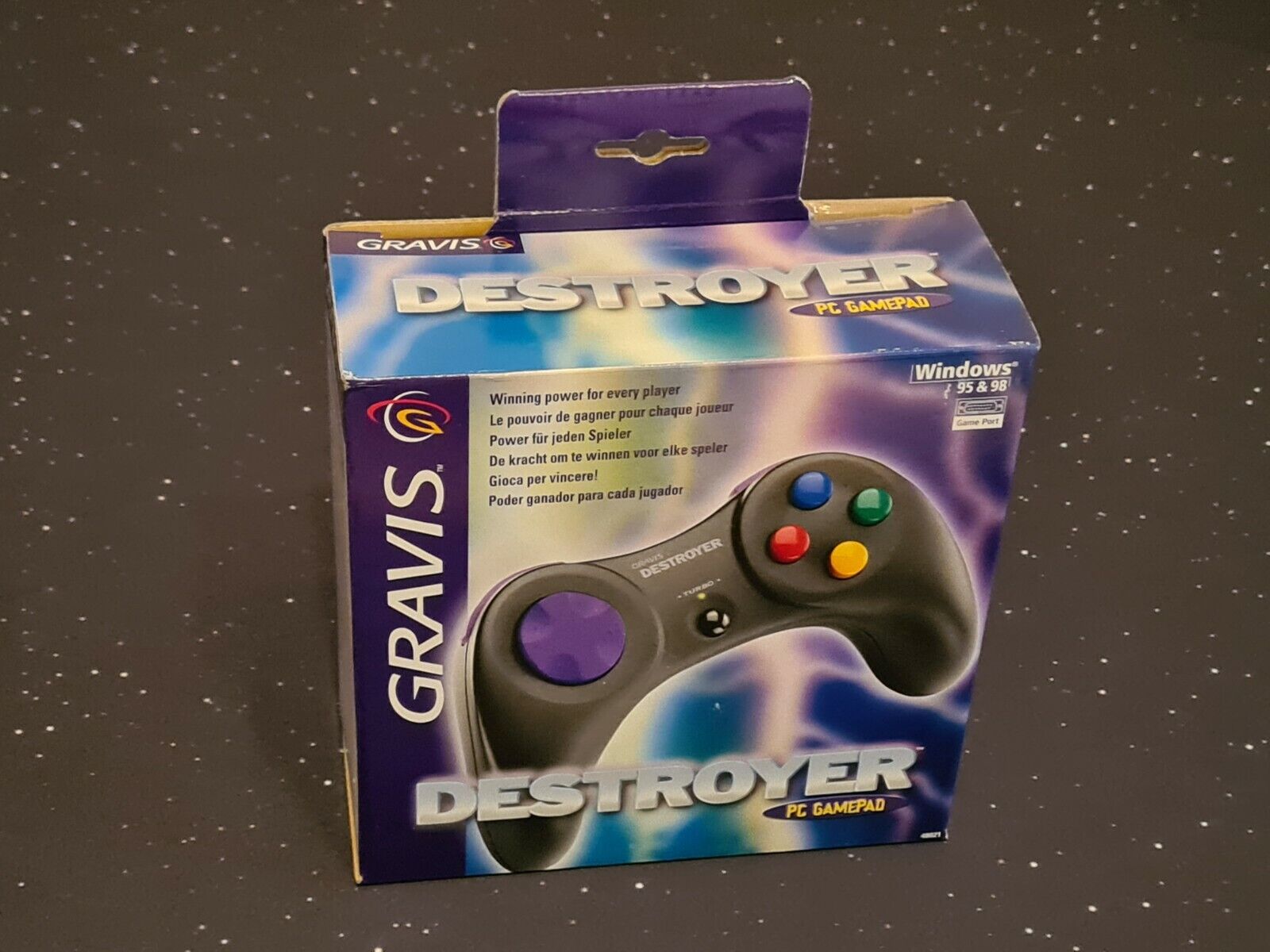 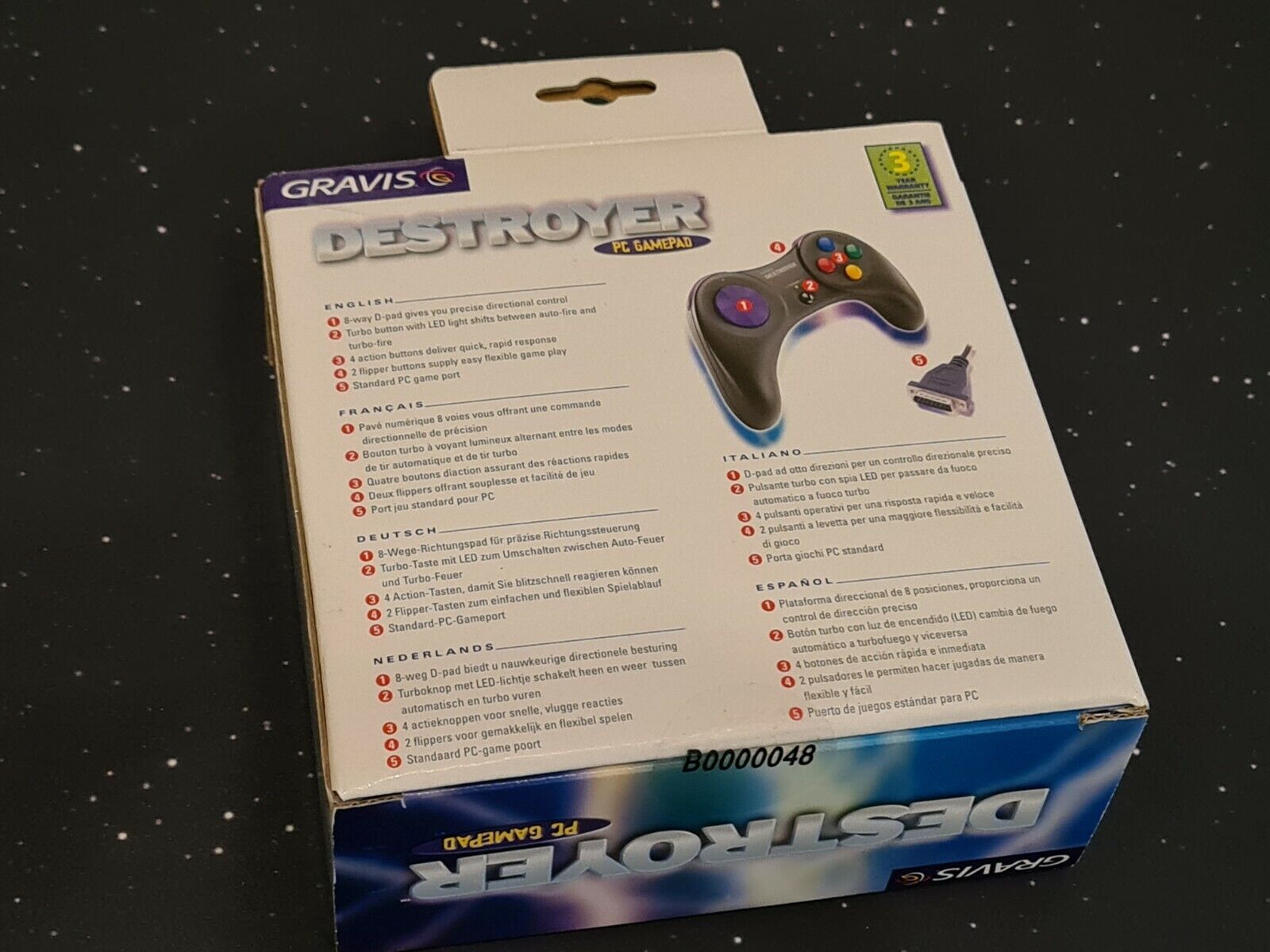 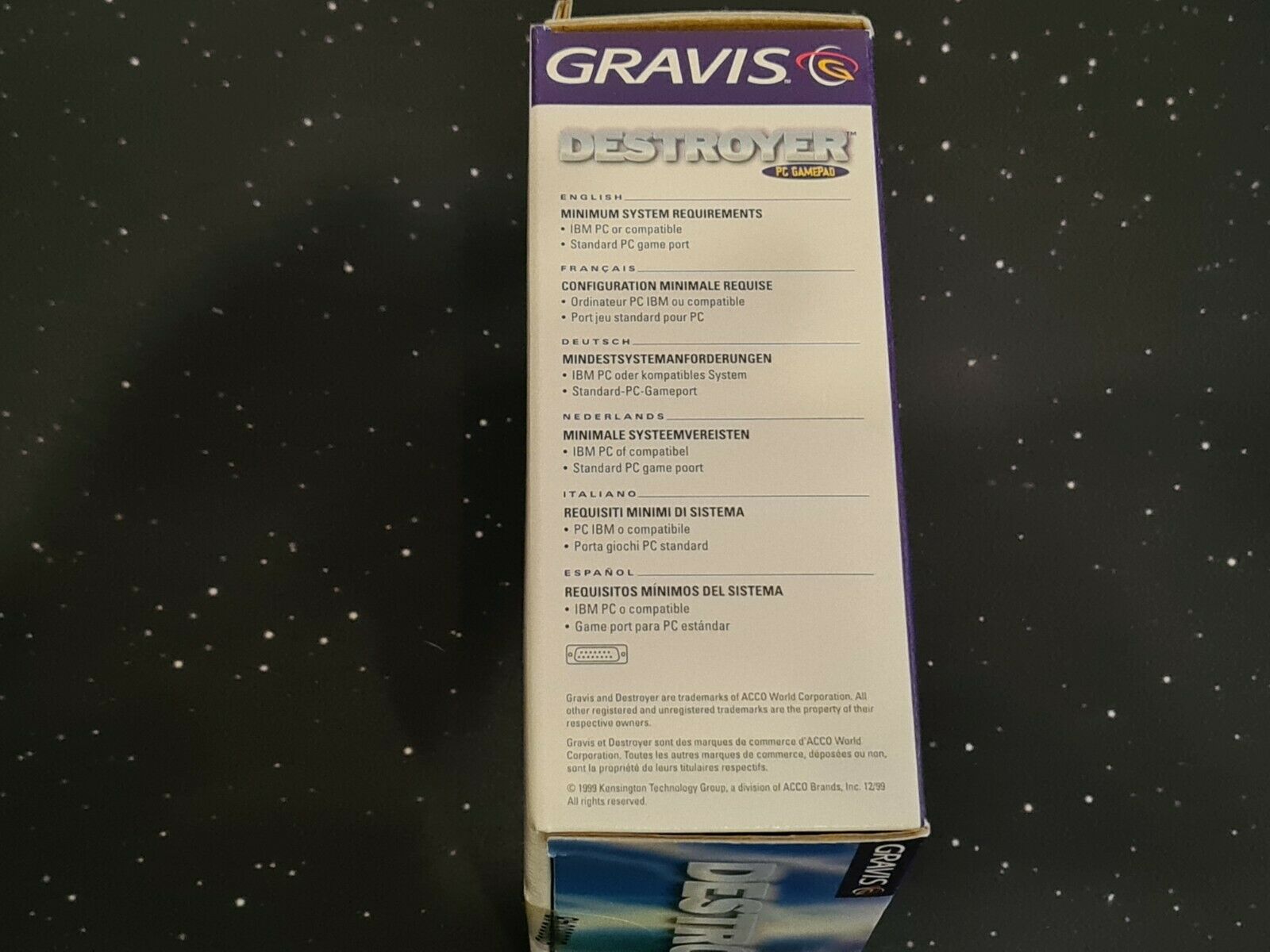 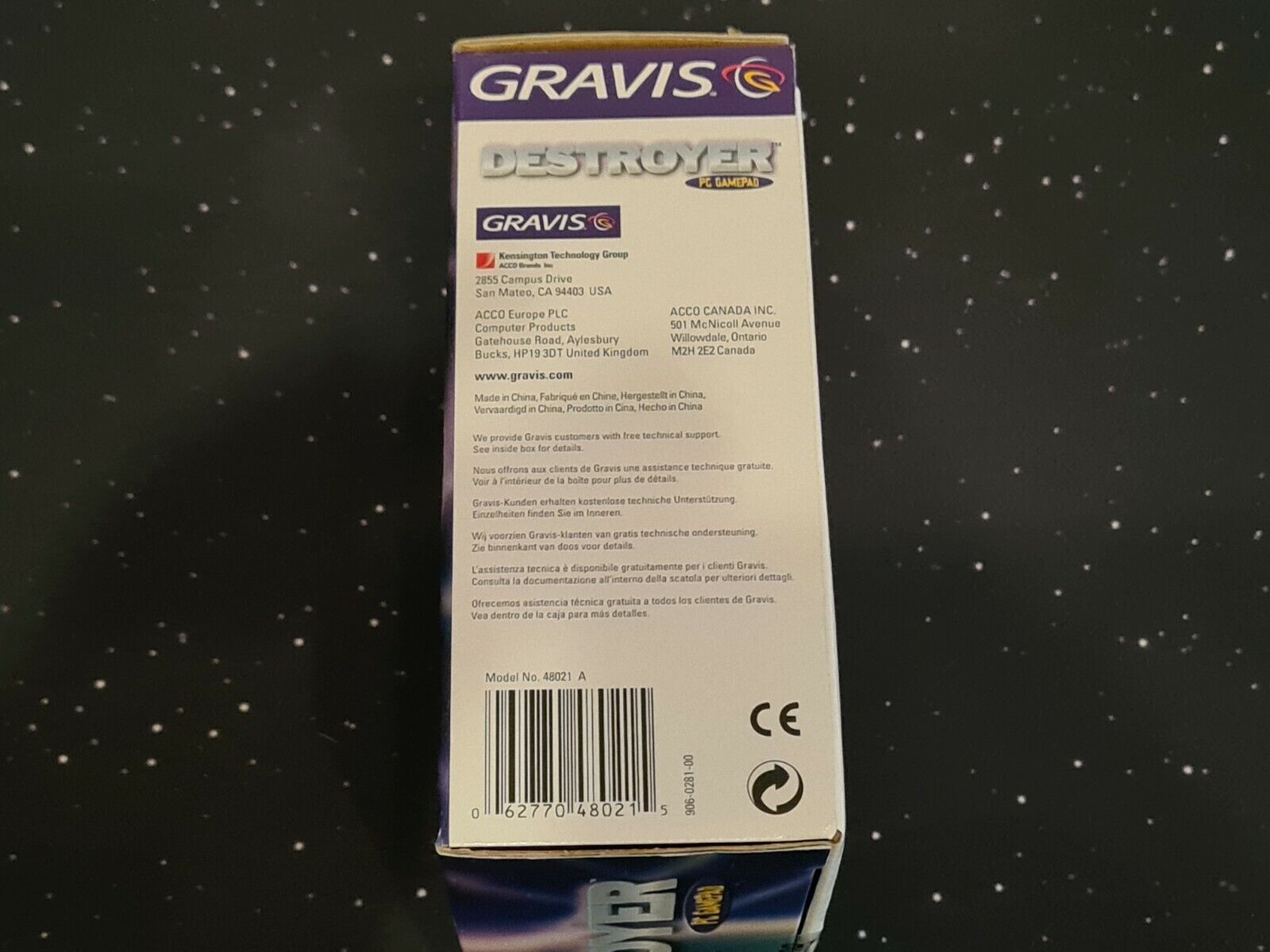
|
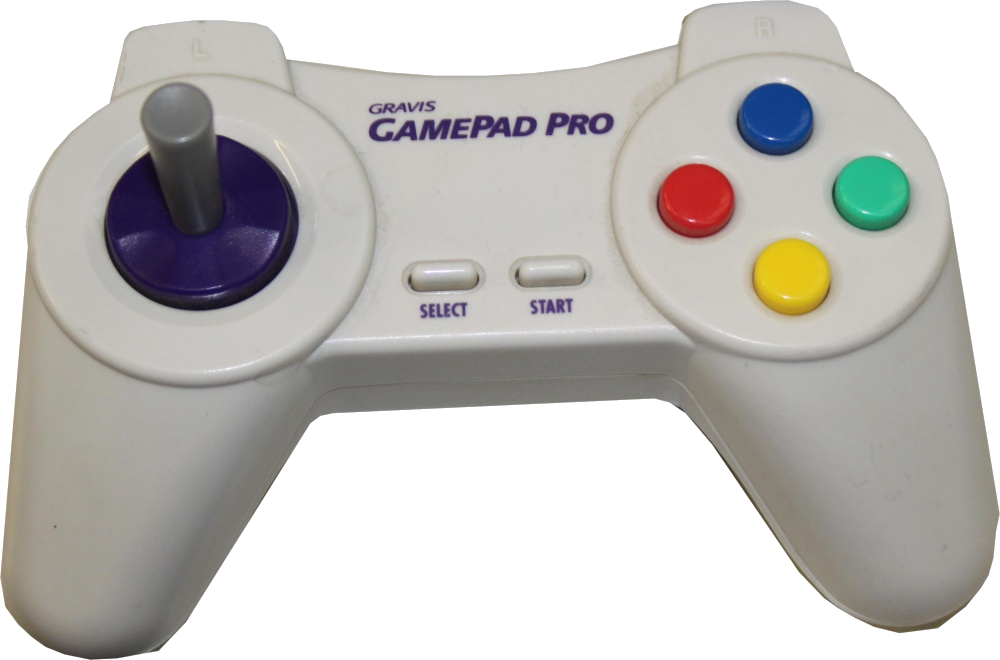 GamePad Pro GamePad Pro
Launched: 2000
Interface: 15-pin game port
Protocol: Gravis GrIP
Model Number: 42021
Number of Axis: 2
Number of Buttons: 10
Price: $19.99 at launch
The Gravis GamePad Pro added four shoulder buttons in addition to 'Select' and 'Start' buttons, and more closely resembled an original Sony PlayStation controller.
The GamePad Pro utilized the 'button' signal lines on an analog PC joystick port to send digital signals (referred to as "GrIP") to allow for both the use of ten buttons and the simultaneous use of up to four controllers connected by the controller's built-in piggyback plug. A switch on the pack of the non-USB pad could be used to allow the pad to function as a standard analog four-button pad; otherwise, games could not detect the gamepad unless they were coded with the device in mind (DOS) or a specific driver was installed (Windows).
"With its signature white plastic case and multicolored buttons, the GamePad, from Advanced Gravis Computer Technology, is so popular that it is still a best-seller after four years on the market. Will the next-generation GamePad Pro be as successful? We think so.
The GamePad Pro has four buttons on the right and two flipper buttons on the front of each stubby handle. The well-designed directional pad has a slot for a screw-in mini-joystick handle.
This pad is on the small side, so it may not fit as comfortably into large hands
as the Microsoft SideWinder Game Pad. The GamePad Pro , however, is far more responsive, and we quickly grew accustomed to the pad's design. We like the fact that this product offers more tactile feedback on the directional pad than the others. Also, the Pro allows you to program the buttons to provide keystroke input for both Windows 95 and DOS games.
One of the GamePad Pro's best features is a built in Y connector on the cable that allows
you to plug in a second pad. But unless the game you're playing includes support for the GrIP Game System (reviewed at the top of this page), you will be able to use only half the buttons on each pad.
"
Shane Mooney, PC Magazine, May 1997
More Images
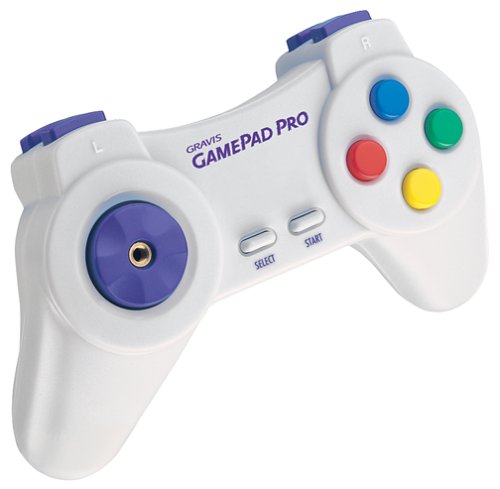 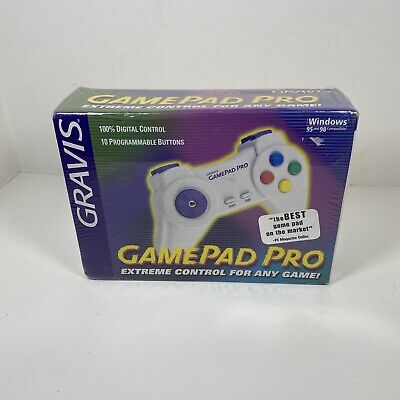 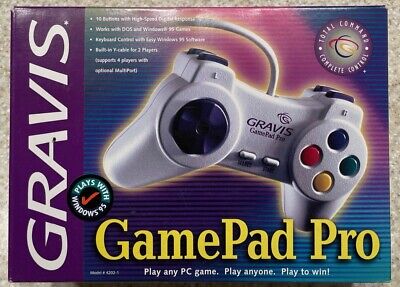
|
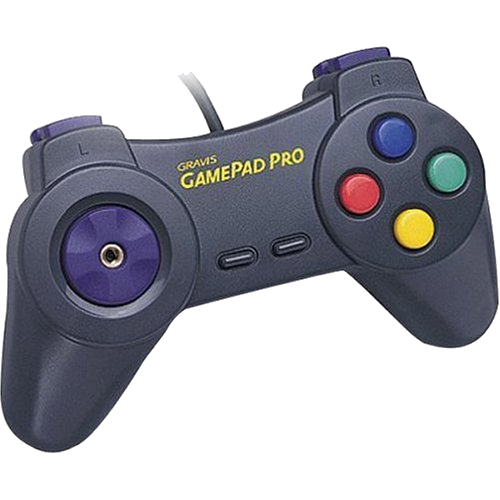 GamePad Pro USB GamePad Pro USB
Launched: 2001?
Interface: USB
Model Number: 42111
Number of Axis: 2
Number of Buttons: 10
Price: $30 CAD at launch
The Gravis GamePad Pro USB was functionally the same as the GamePad Pro, but used the USB interface and the USB Human Interface Device class standards instead of the 15-pin analogue game port, and is thus not intended for DOS use.
It is also slightly more ergonomically designed and feels good in your hands. Like the GamePad Pro it has four shoulder buttons in addition to the four coloured face buttons, as well as 'Select' and 'Start' buttons.
The colour of the outer casing was also changed to be black plastic, which is an easy way to identify the USB variant from the standard GamePad Pro which uses the 15-pin game port.
More Images
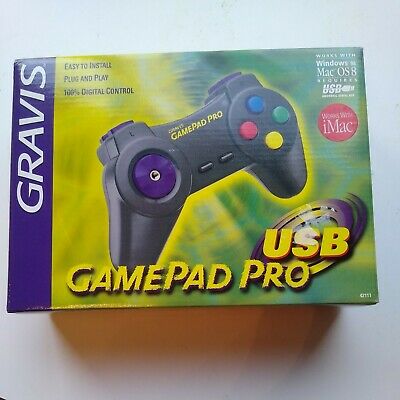
|
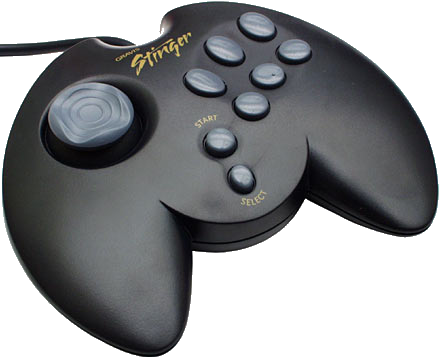 Stinger Stinger
Launched: 2001?
Interface: USB
Number of Axis: 2
Number of Buttons: 8
Price: -
More Images
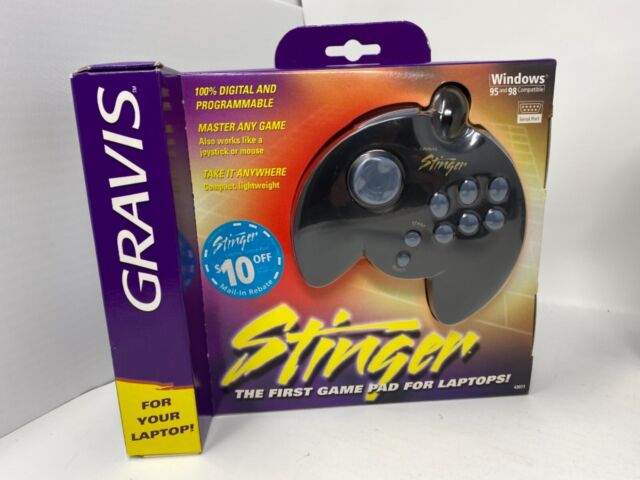 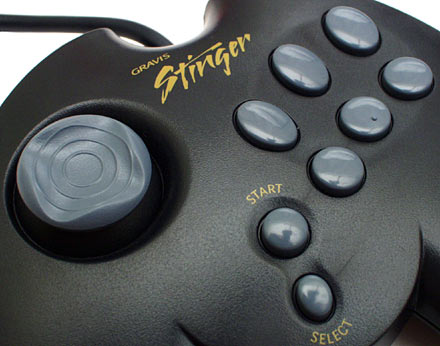
|
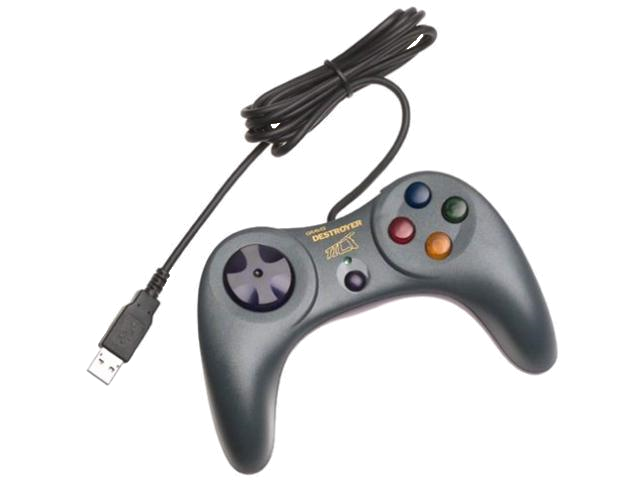 Destroyer Tilt Destroyer Tilt
Launched: 2002?
Interface: USB
Number of Axis: 2
Number of Buttons: 8
More Images
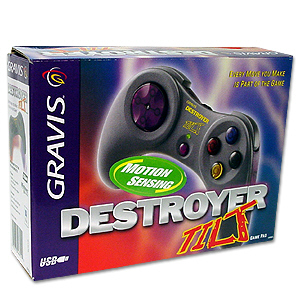 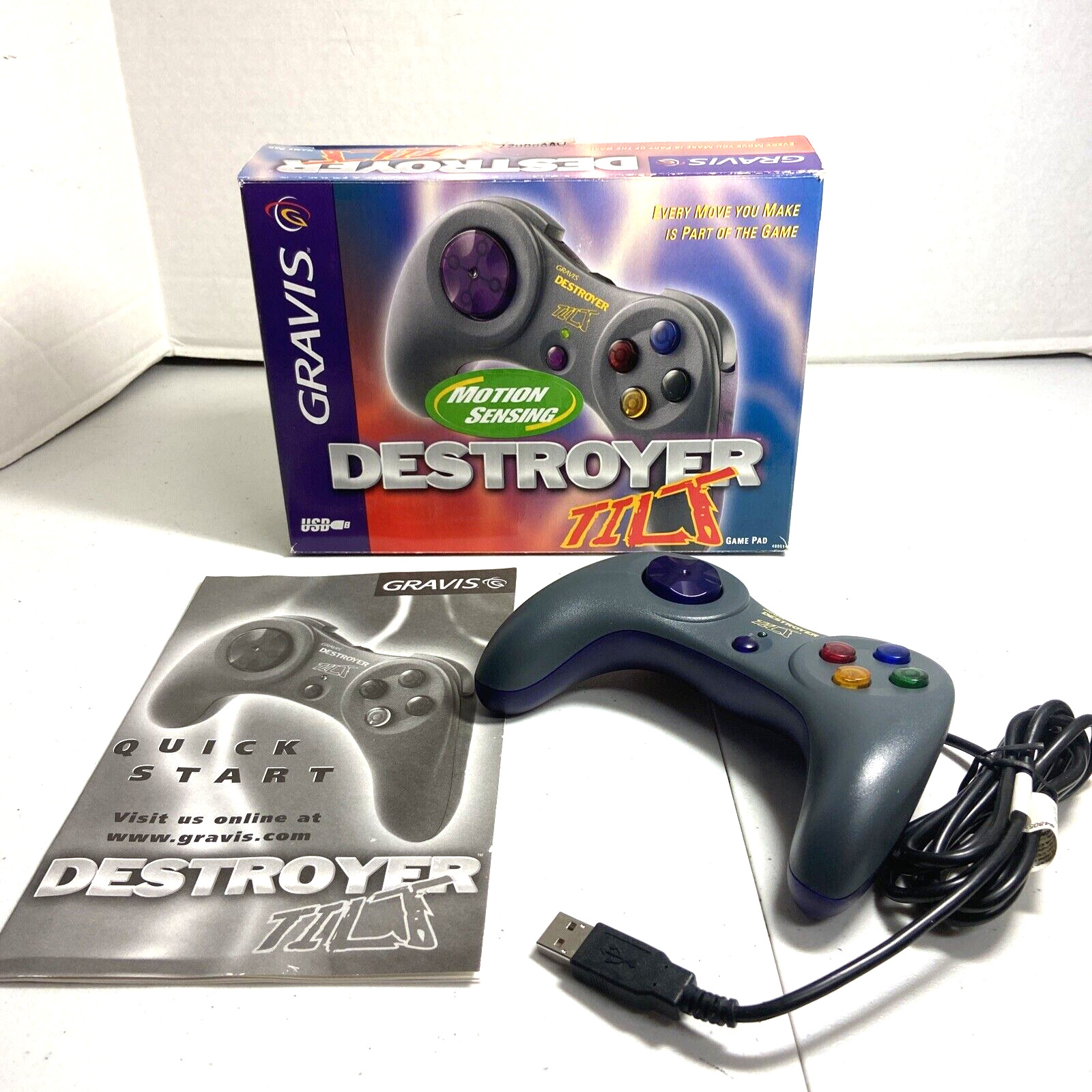
|
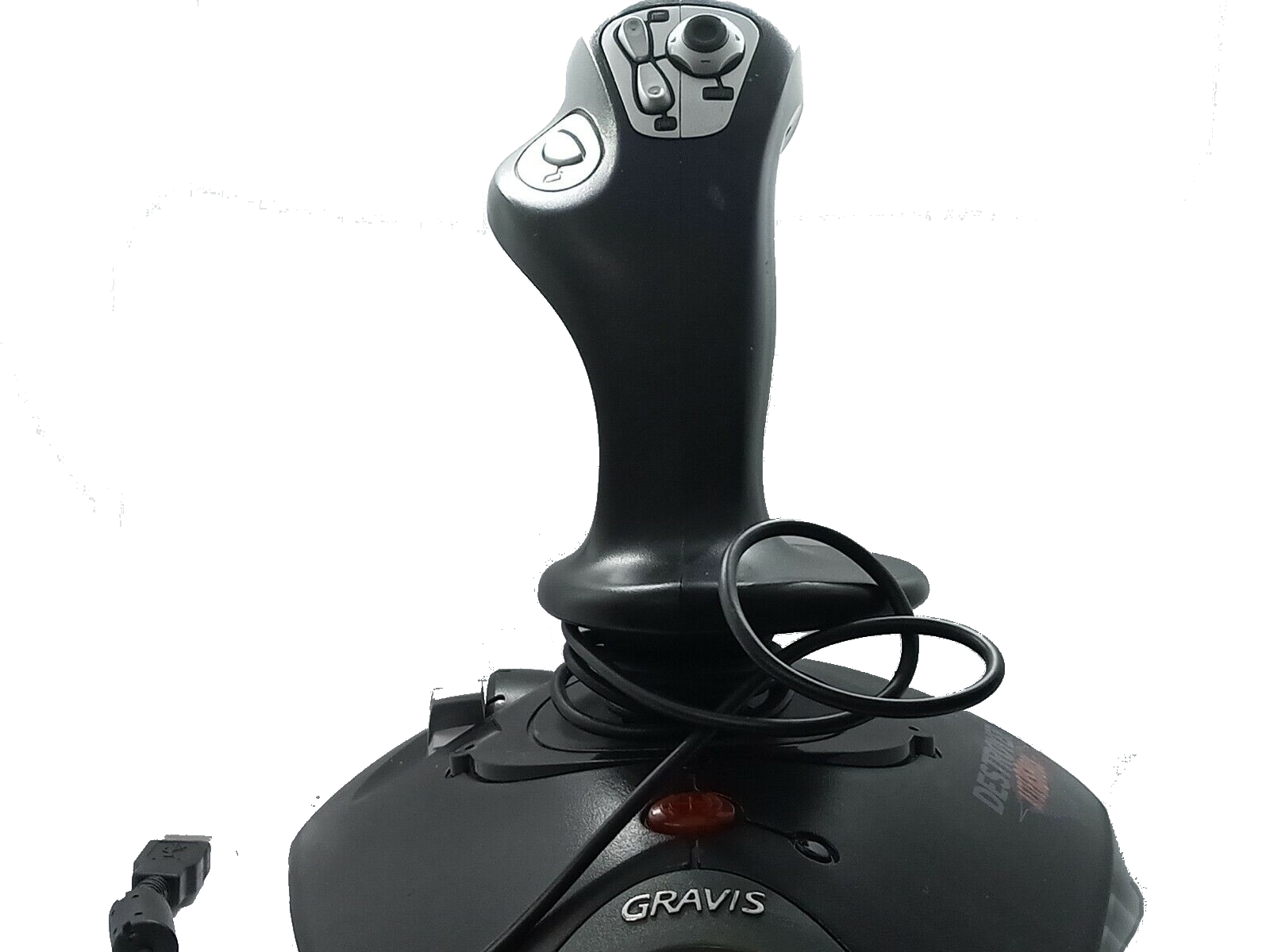 Destroyer AfterShock Destroyer AfterShock
Launched: 2002?
Interface: USB
Number of Axis: 3
More Images
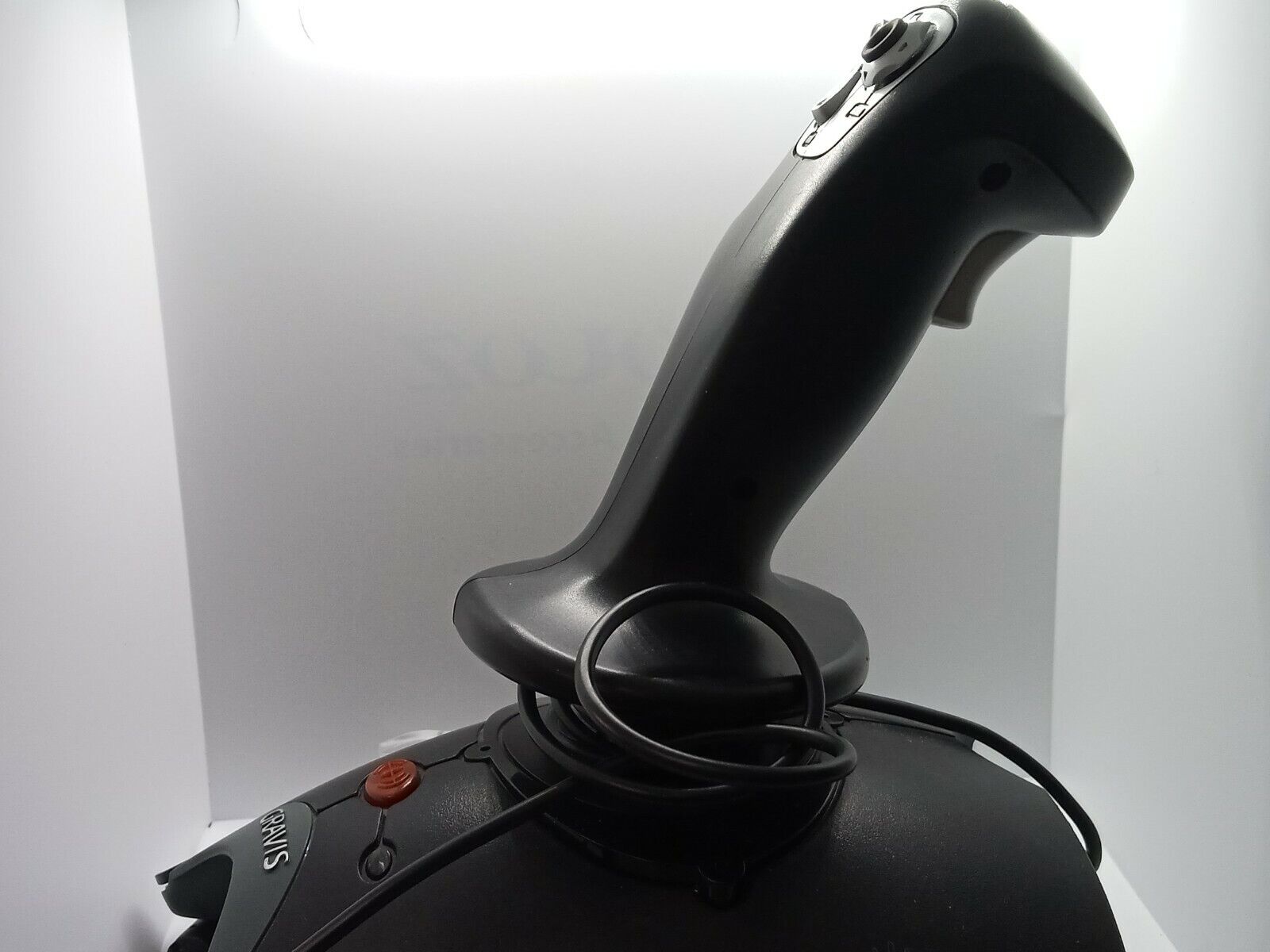  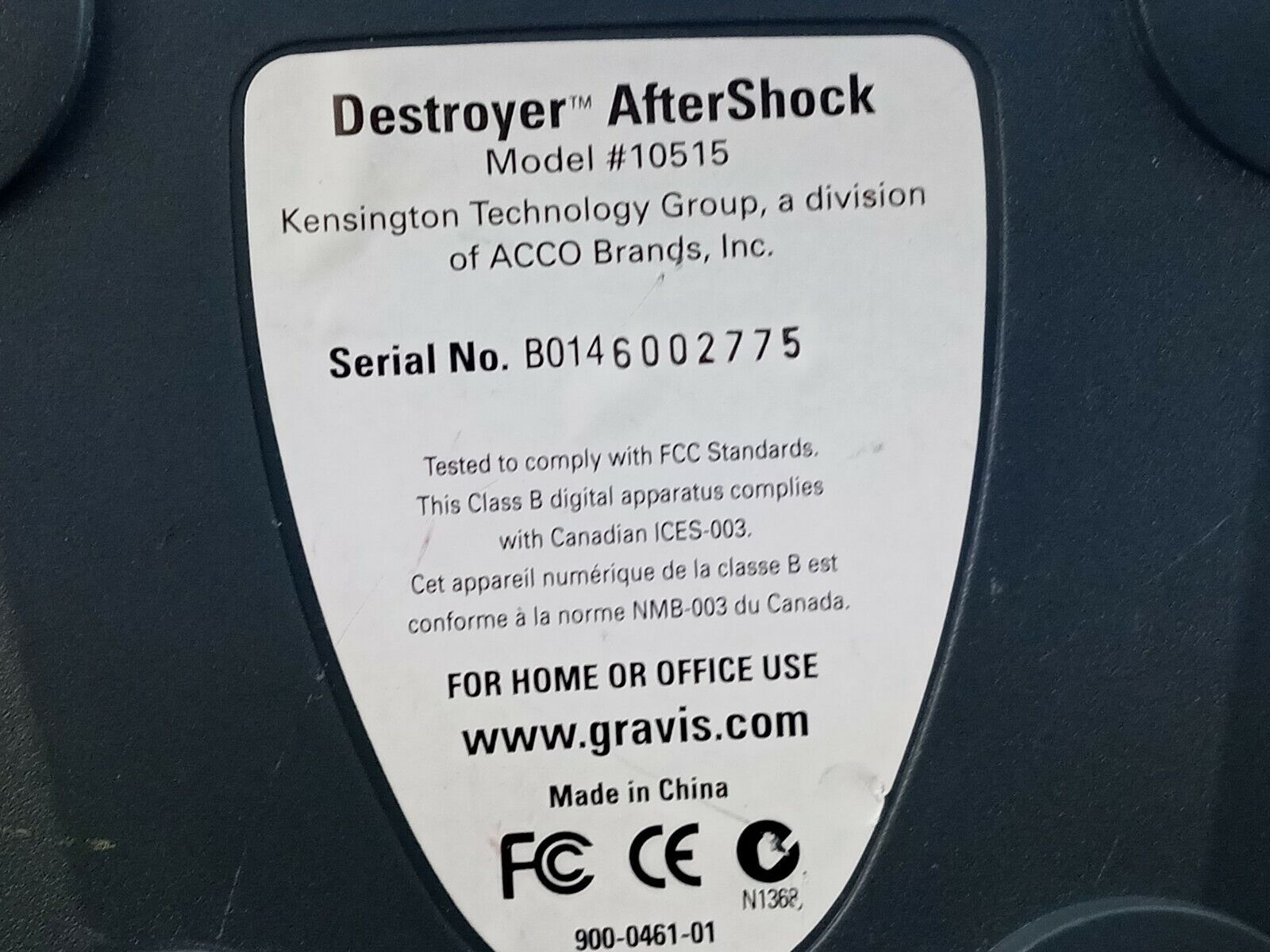
|
Eliminator GamePad Pro
Launched: 2001
Interface: USB
Number of Axis: 2
Price: $30 at launch
"If you want a more specialized game controller for a sports, action, or simulation game, consider a multipurpose gamepad. Such devices provide directional control and have firing buttons. Two of the best are the USB Gravis Eliminator GamePad Pro ($30; street, Gravis, www.gravis.com) and Gravis Eliminator AfterShock ($40), which has force feedback. Both are well designed, comfortable to hold, and highly responsive - MER"
PC Magazine, June 2001
More Images
|
Eliminator AfterShock
Launched: 2001
Interface: USB
Number of Axis: 2?
Price: -
More Images
|
Xterminator Force
Launched: 2002
Interface: USB
Number of Axis: ?
Number of Buttons: ?
Price: $50 street.
"For force feedback to work, you need an analog control device so the motors push and pull in response to the game's cues. The Gravis Xterminator Force Feedback Game Pad is the first game pad with force feedback, but it's essentially a worthless achievement. To house the inner workings, the controller is about one-third too big. And the clunky analog directional control is a motor-driven trackball. Thanks to a poorly designed, hard-to-grip thumb button, the game pad is cumbersome to use, even when the Precision feature is turned on."
PC Magazine, December 2002
More Images
|
 Advanced Gravis Controllers
Advanced Gravis Controllers









































































































